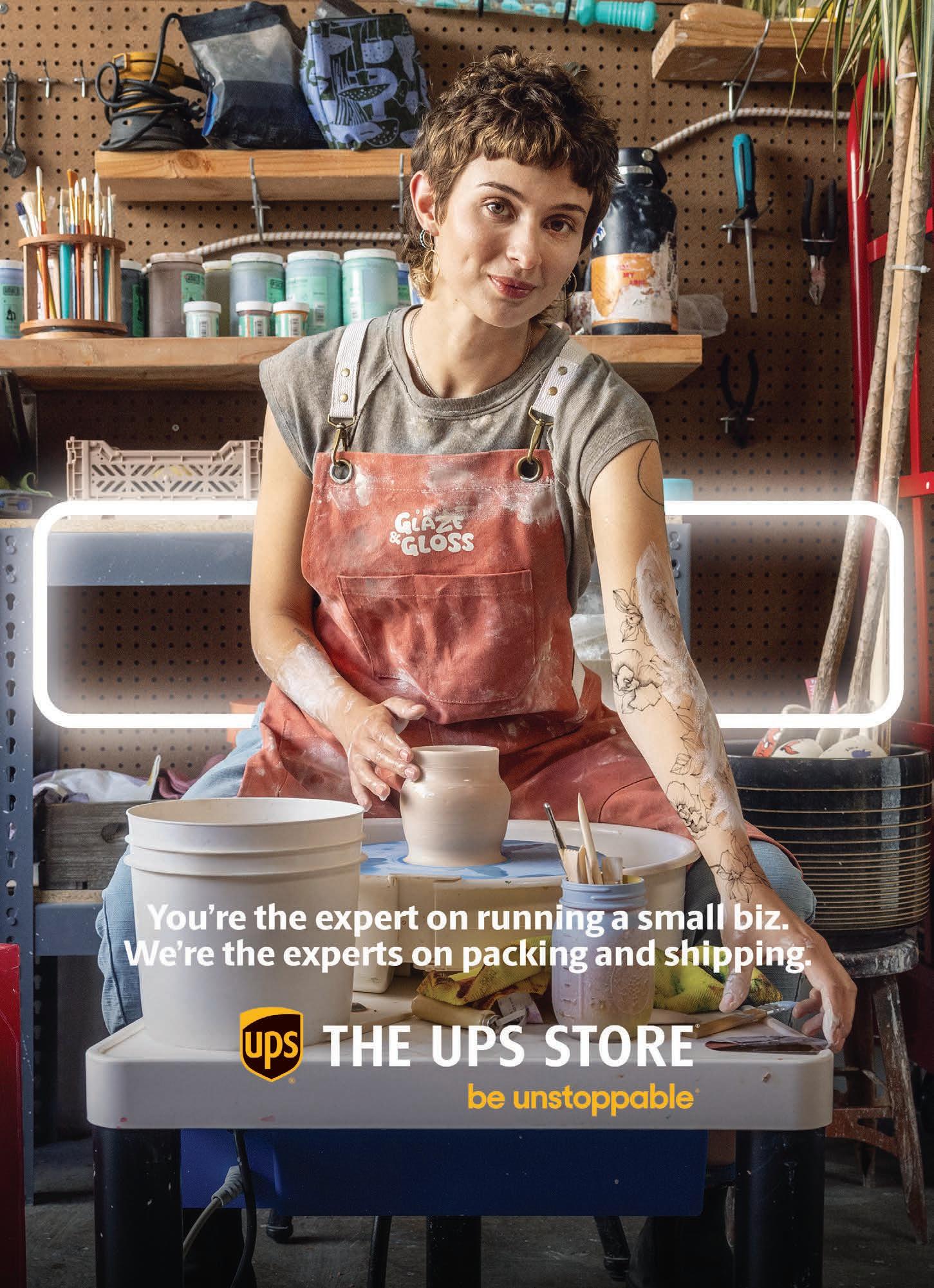
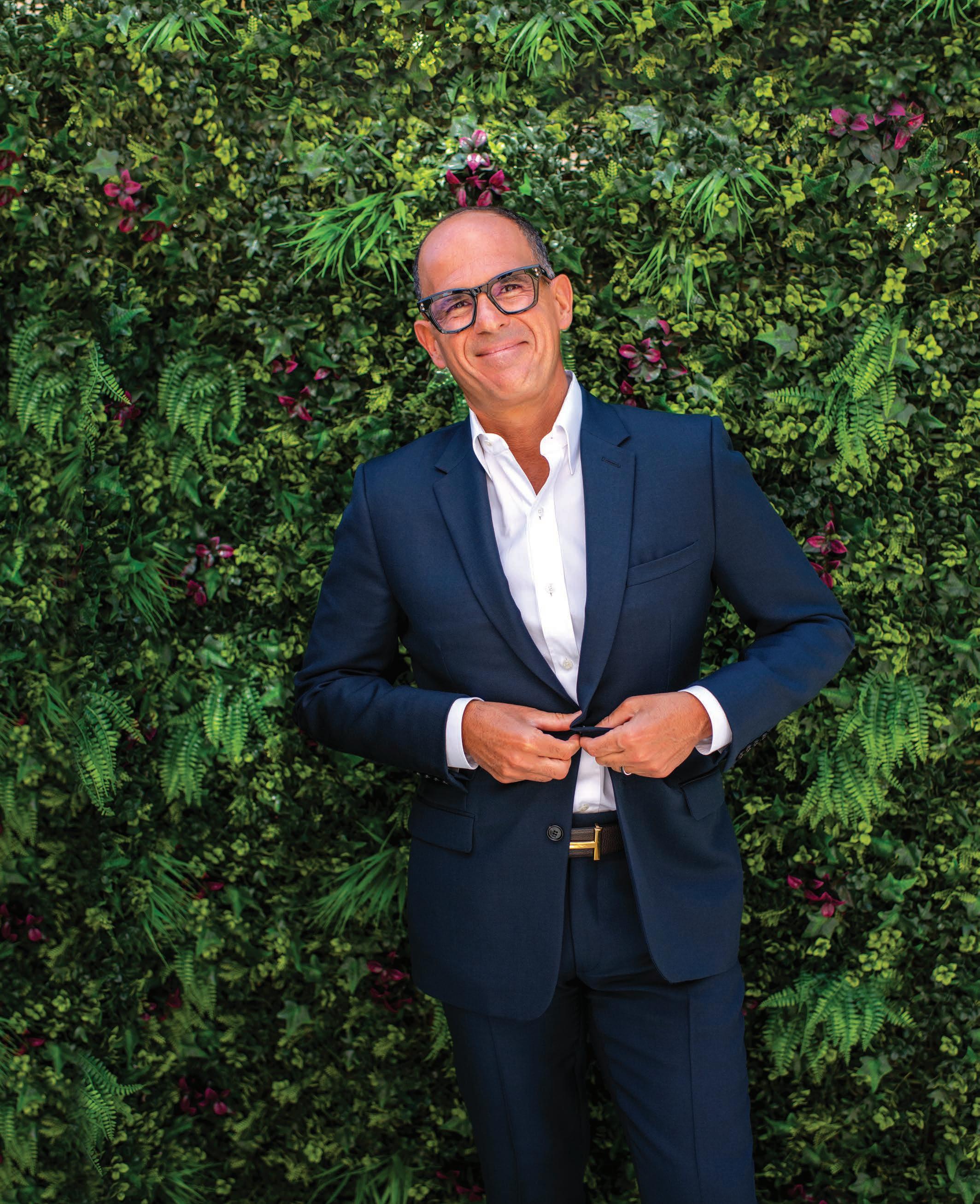



MARCUS LEMONIS used to pour on the love. Now it’s time for straight talk. P. 32
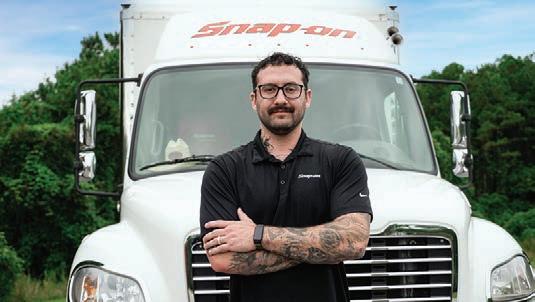
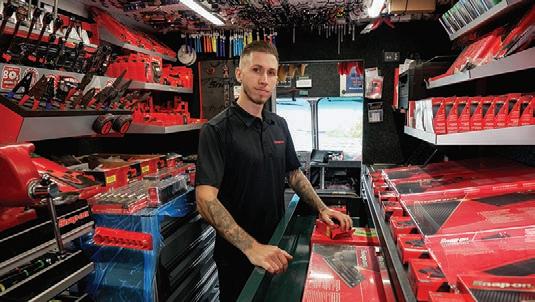
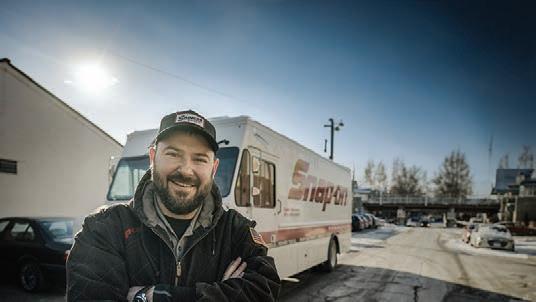
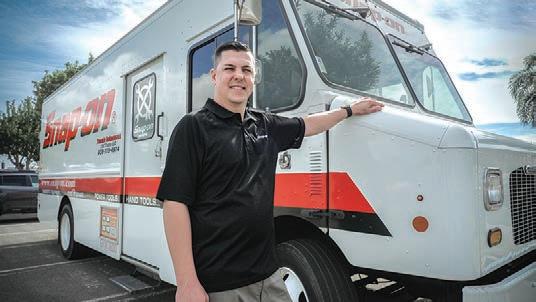



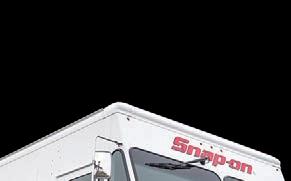

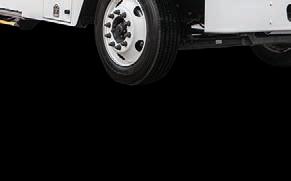
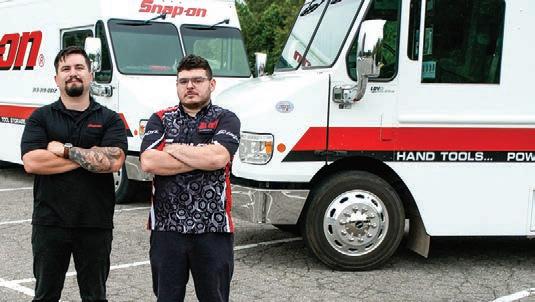
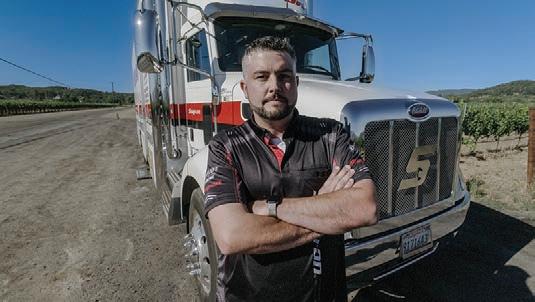

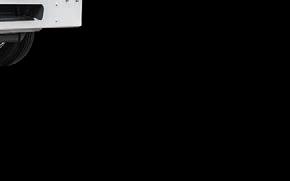





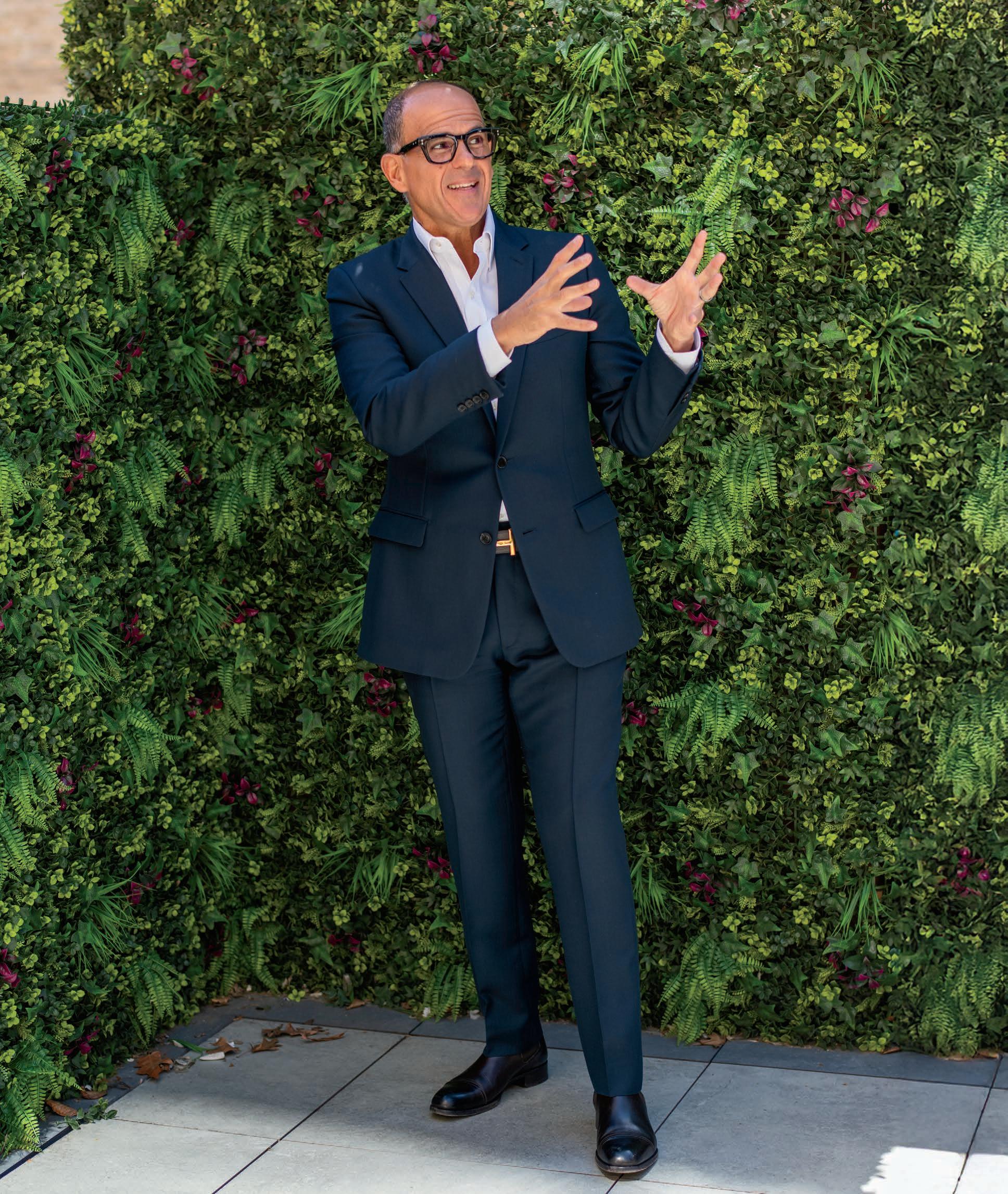
→ HUMAN OR AI?
As deepfakes get better, a new crop of startups are trying to stop them.
July-August 2025
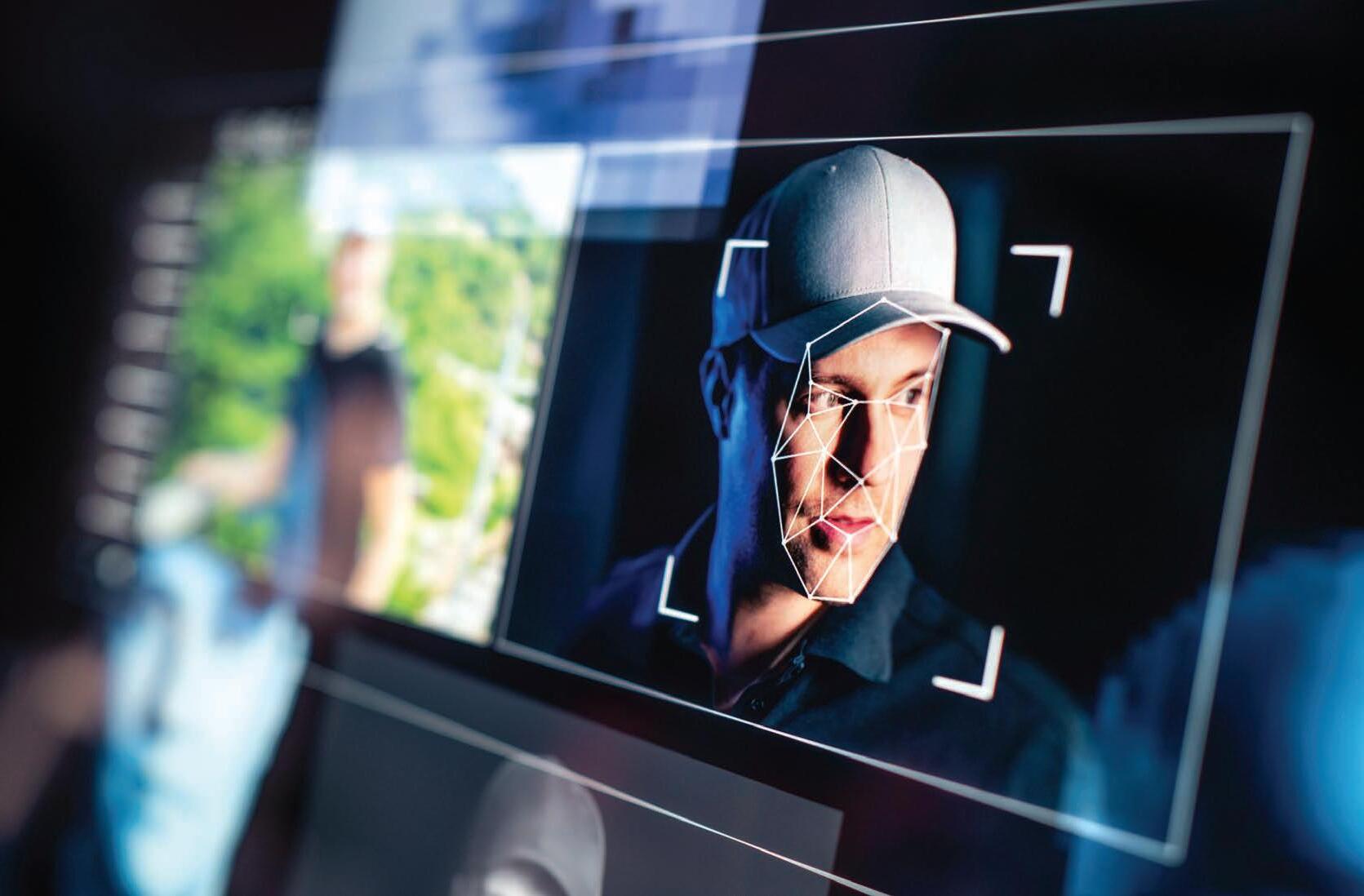
18 Inside a Rebrand
To grow, this beverage brand needed to fix its messaging problem. Here’s how it happened. by FRANCES
DODDS
22 I Sucked as CMO
24 No, I Don’t Want to ‘Hop on a Call’
As a leader, you might want to talk everything out. Here’s what you should do instead. by WES
KAO
Her
08 Her Customer Went MIA. This Tactic Got Her Paid.
When people act in mysterious and frustrating ways, here’s what to do.
by JASON FEIFER
10 A Billionaire and Two Wellness Stars Walk into a Chicken Restaurant...
Raising Cane’s founder Todd Graves talks success strategies with the Cavinder twins. by JASON FEIFER
16 What Creates Loyalty
How to keep customers coming back, from six entrepreneurs who do it well.
That’s why I stopped chasing a title and built a role that truly fit me. The change improved my life—and my business. by
JAKE KARLS
28 A Better Way to Get New Clients
(and
It’s called the “Lumberjack Strategy,” and it’s more effective (and faster) than networking. by CHUCK
BLAKEMAN
30 Stress Less
Five great gadgets that make your to-do list easier, and maybe even fun! by
MARIO ARMSTRONG

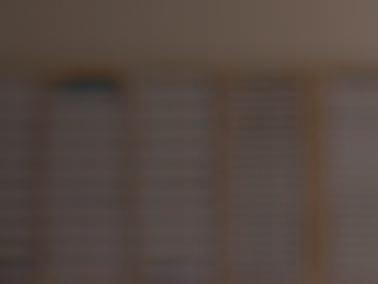

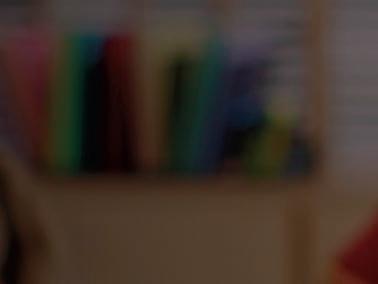





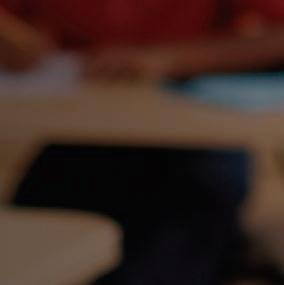
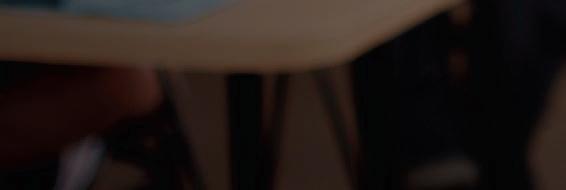


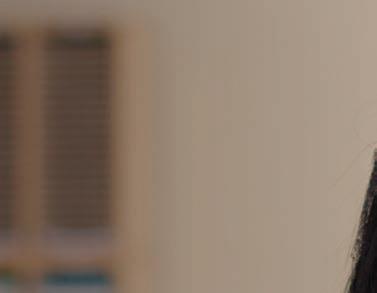
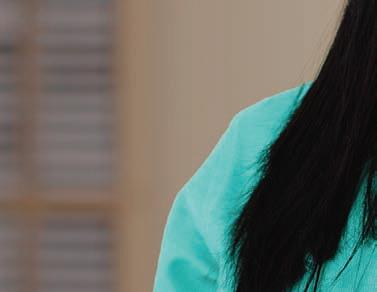


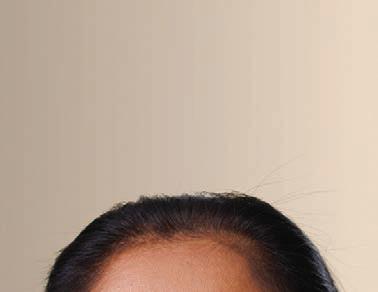
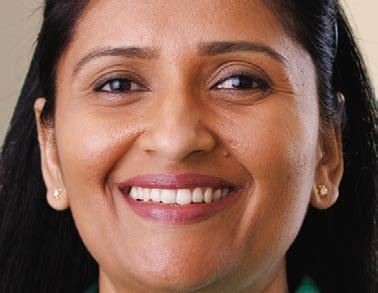







July-August 2025
65 Truly the Best
Want to buy a winning franchise? These brands are at the tippy top.
by TRACY STAPP HEROLD
84 The Million-Dollar Family Business
She started a new career, and brought everyone along. by CARL
STOFFERS
86 Lead With Empathy
She went from franchisee to brand president—here’s how. by CARL STOFFERS
88 How to Find the Right Franchise for You
Follow this guide from the International Franchise Association’s leader.
by MATT HALLER
90 Getting Younger
Why more people in their 20s and 30s are becoming franchisees.
by KIM KAVIN
102 The Top Franchises for Multi-Unit Owners
Want to buy more than one location? Start here.
by TRACY STAPP HEROLD
120 Hope on Paper
A small act of kindness that reshaped a founder’s journey.
by HADAS KANNER-GOLAN
→ PITCH OUR INVESTORS TO BE ON ENTREPRENEUR ELEVATOR PITCH
We welcome founders who have scalable products or services that are ready for investment, and who have a specific plan for how that investment can help them grow. APPLY TO BE ON THE NEXT SEASON: ENTM.AG/EEPAPPLY
→ SQUAREROOTS
The Mid-Day Squares cofounders: They’re family, founders, and therapy-powered teammates. P.22

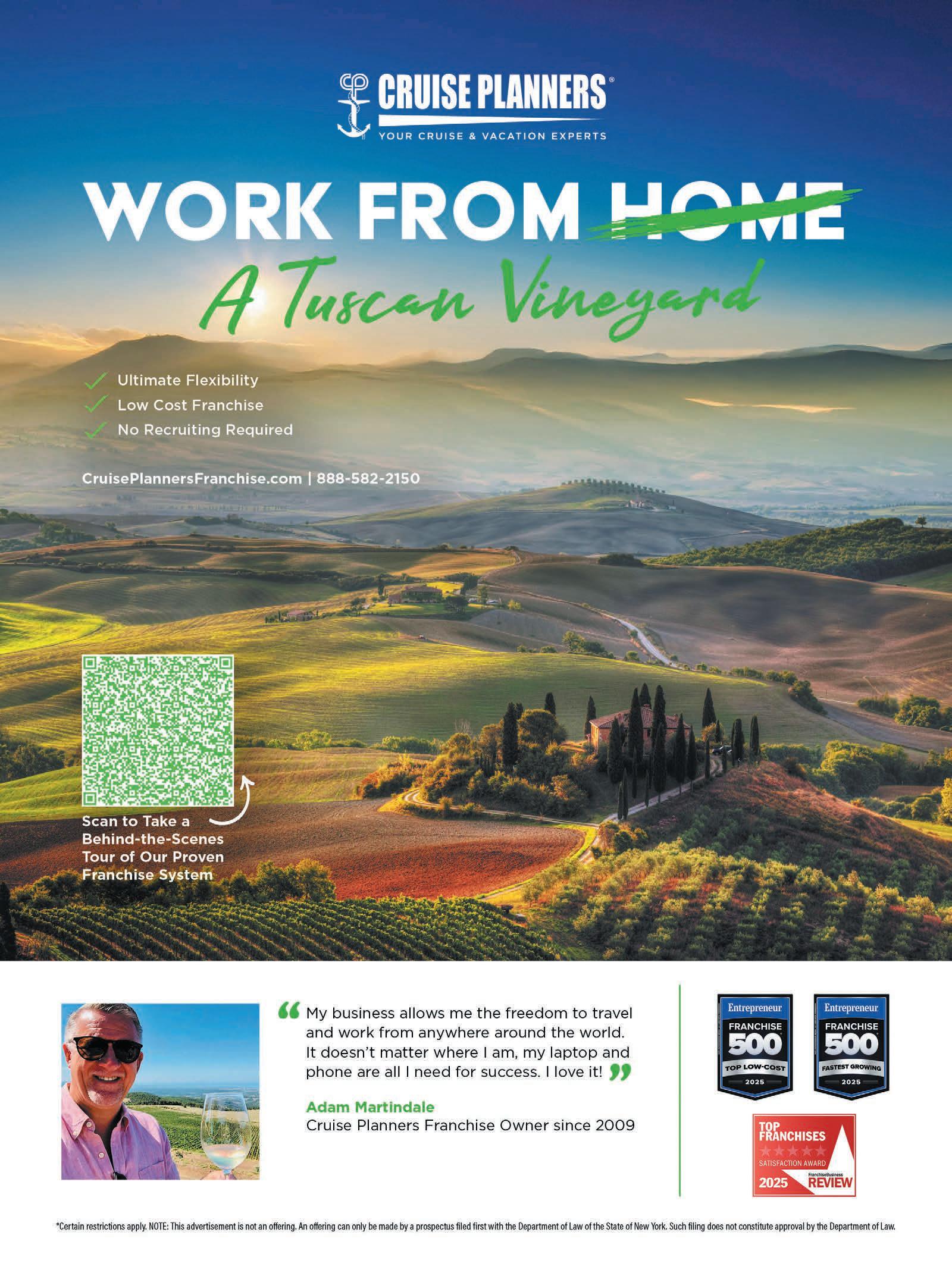
EDITOR IN CHIEF Jason Feifer
CREATIVE DIRECTOR Paul Scirecalabrisotto
DEPUTY EDITOR Frances Dodds
MANAGING EDITOR Monica Im
SPECIAL PROJECTS EDITOR Tracy Stapp Herold
COPY CHIEF Jessica Levy
RESEARCH Andre Carter, Eric White
SPECIAL PROJECTS COORDINATOR Jordan Hall
CONTRIBUTING EDITOR Liz Brody
CONTRIBUTING PHOTO DIRECTOR Judith Puckett-Rinella
CONTRIBUTING WRITERS Mario Armstrong, Chuck Blakeman, Martin Dubin, Matt Haller, Hadas Kanner-Golan, Wes Kao, Kim Kavin, Jake Karls, Sal Vaglica
ENTREPRENEUR.COM
EXECUTIVE EDITOR Brittany Robins
DEPUTY DIGITAL EDITOR Melissa Malamut
SENIOR DIGITAL CONTENT DIRECTOR Jessica Thomas
ENTREPRENEUR STUDIO DIRECTOR Brad Gage
VIDEO PRODUCER Jeremy Belanger
SENIOR BUSINESS EDITOR Carl Stoffers
EDITOR, CONTRIBUTOR NETWORK Maria Bailey
SUBSCRIPTIONS EDITOR Mark Klekas
SENIOR FEATURES WRITER Amanda Breen
NEWS REPORTER Sherin Shibu
ASSOCIATE EDITORS, CONTRIBUTOR NETWORK
Chelsea Brown, Kara McIntyre, Micah Zimmerman
RESEARCH INTERNS Alisha Bajaj, Ava Brooks, Natasha Libombo
VP, DATA & OPERATIONS Michael Frazier
AD OPERATIONS COORDINATOR Daniel Belyaks
CHIEF TECHNOLOGY OFFICER Jake Hudson
VP, OPERATIONS Shannon Humphries
PROJECT MANAGERS June Munoz, Julianne Page
SENIOR ENGINEERS Jace Poirier-Pinto, Abel Trotter
ENGINEERS Angel Cool Gongora, Michael Flach
FRONT-END ENGINEERS Lorena Brito, John Himmelman
QUALITY ASSURANCE TECHNICIAN Jesse Lopez
ART DIRECTOR Christian Zamorano
SENIOR DESIGNER Jayla Buie
GRAPHIC DESIGNER Andrew Chang
DIGITAL MEDIA DESIGNER Monica Dipres
DIGITAL PHOTO EDITOR Karis Doerner
CEO Ryan Shea
PRESIDENT Bill Shaw
CHIEF OPERATING OFFICER Michael Le Du
ASSOCIATE PUBLISHER/MARKETING Lucy Gekchyan
VP, SPECIAL PROJECTS Dan Bova
PRODUCTION COORDINATOR Mackenzie Truman
VP, NATIVE CONTENT Jason Fell
SENIOR INTEGRATED MARKETING MANAGER Wendy Narez
INTEGRATED MARKETING ASSOCIATE Ashleigh Dennis
SVP, INNOVATION Deepa Shah
PRODUCT MARKETING MANAGER Arnab Mitra
MARKETING COORDINATOR Chris Desrosiers
SENIOR MARKETING MANAGER Hilary Kelley
ASSOCIATE DIRECTOR, DIGITAL CAMPAIGNS Jillian Swisher
DIGITAL ACCOUNT MANAGER Michelle Gaudy
VP, BUSINESS DEVELOPMENT Charles Muselli
GM, CONTENT SYNDICATION Matt Goldstein
MANAGER BUSINESS DEVELOPMENT Michelle Buzga
ENTREPRENEUR BOOKS
VP, ENTREPRENEUR BOOKS Sean Strain
SOCIAL MEDIA
DIRECTOR OFAUDIENCE DEVELOPMENT & MONETIZATION Anthony Del Conte
SOCIAL MEDIA SENIOR MANAGER Kennadi McCoy
CUSTOMER SERVICE entrepreneur.com/customerservice
SUBSCRIPTIONS subscribe@entrepreneur.com
REPRINTS
PARS International Corp. (212) 221-9595, EntrepreneurReprints.com
ADVERTISING AND EDITORIAL Entrepreneur Media LLC 1651 East Fourth Street, Suite 125, Santa Ana, CA 92701 (949) 261-2325, fax: (949) 752-1180
ENTREPRENEUR.COM Printed in the USA GST File #r129677027
ENTREPRENEUR MEDIA NATIONAL ADVERTISING SALES OFFICES
SVP, NATIONAL SALES Brian Speranzini
ACCOUNT DIRECTOR Krissy Cirello
LOS ANGELES
VP, WEST COAST ADVERTISING Mike Lindsay CHICAGO
MIDWEST DIRECTOR, STRATEGIC PARTNERSHIPS Steven Newman DETROIT
MIDWEST DIRECTOR OF SALES Dave Woodruff
NATIONAL ADVERTISING DIRECTOR Hilary Kelley
FRANCHISE AND BUSINESS OPPORTUNITIES
VP, FRANCHISE SALES Brent Davis
PRODUCTS AND SERVICES ADVERTISING
Direct Action Media, Tom Emerson (800) 938-4660
ADVERTISING PRODUCTION MANAGER Mona Rifkin
EXECUTIVE STAFF
CFO Chris Damore
DIRECTOR OF FINANCE Tim Miller
FINANCE SUPPORT Jennifer Herbert
CORPORATE COUNSEL Ronald L. Young
ASSOCIATE COUNSEL Brittany Ortiz
LEGAL ASSISTANT Cheyenne Young
Vol. 53, No. 4. Entrepreneur (ISSN 0163-3341) is published bimonthly by Entrepreneur Media LLC, 1651 East Fourth Street, Suite 125, Santa Ana, CA 92701. Periodical postage paid at Irvine, CA, and at additional mailing offices. POSTMASTER: Send address changes to Entrepreneur, P.O. Box 6136, Harlan, IA, 51593-1636. One-year subscription rates in U.S.: $19.97; in Canada: $39.97; all other countries: $49.97; payable in U.S. funds only. For customer service go to entrepreneur.com/customerservice or mail subscription orders and changes to Entrepreneur, Subscription Department, P.O. Box 6136, Harlan, IA, 51593-1636. For change of address, please give both old and new addresses and include most recent mailing label. Entrepreneur considers its sources reliable and verifies as much data as possible, although reporting inaccuracies can occur; consequently, readers using this information do so at their own risk. Each business opportunity and/or investment inherently contains certain risks, and it is suggested that the prospective investors consult their attorneys and/or financial professionals. Entrepreneur is sold with the understanding that
will be treated as unconditionally assigned for publication,copyright purposes and use in any publication or brochure,and are subject to Entrepreneur’s unrestricted right to edit and comment.
ENTREPRENEUR.COM / July-August 2025


Join a trusted brand with a business model that’s made to thrive. Ranked on Entrepreneur magazine’s 2025 Best of the Best Franchises and Top Brands for Multi-Unit Owners, Pearle Vision is a leader in the optometry and franchise industries.
• FLEXIBLE PARTNERSHIP MODELS
• CAPITAL SUPPORT FOR DOCTORS
• PROVEN BUSINESS STRATEGIES
• CUTTING-EDGE TECHNOLOGY
• INDEPENDENCE
• TRAINING

People act in mysterious, frustrating ways. Here’s what to do in response.
IF A CUSTOMER STOPPED paying you, what would you do?
Here’s what Nancy Salamon did. It’s the greatest strategy I’ve ever heard.
Salamon is a studio potter and textile designer, and one of her wholesale customers recently stopped paying. She sent a gentle nudge, and the customer promised to pay. But another month went by, and he didn’t.
So Salamon sent another email. Instead of being angry or demanding, she started like this: “I want to tell you a story.” Then she told a story about her very first wholesale account, with a guy named John. He always paid on time—until one day, John stopped. Salamon followed up repeatedly but heard nothing. A few months later, she received a check—along with a note from John’s widow. As it turns out, John had been ill and just died. “I wish I had known,” Salamon explained. “I’d have left them alone.”
Then Salamon told her current buyer this: I hope you are not experiencing anything catastrophic. I just want to see if you’re OK. In turn, the customer sent a kind email. He said it’s true, we never know what other people are experiencing. He was healthy, but his business was suffering. Still, he paid Salamon. “I know that if I had not reached out to him on a personal level, my $1,700 bill would have stayed on the bottom of his
pile,” she told me.
To Salamon, the lesson is this: Even in business, we must be human.
I agree. But it also got me thinking: When someone disappears on us, or reacts mysteriously, we often assume the worst—that someone hates us, or is ignoring us, or is trying to rip us off. In turn, we become stressed out and angry.
But what if, instead, we stepped back and thought like Salamon? What if we wondered what else might be happening?
Think of it like this: Every situation has four possible explanations. Something is either catastrophic, bad, neutral, or good. Our job is to figure out which explanation is true—without jumping to conclusions.
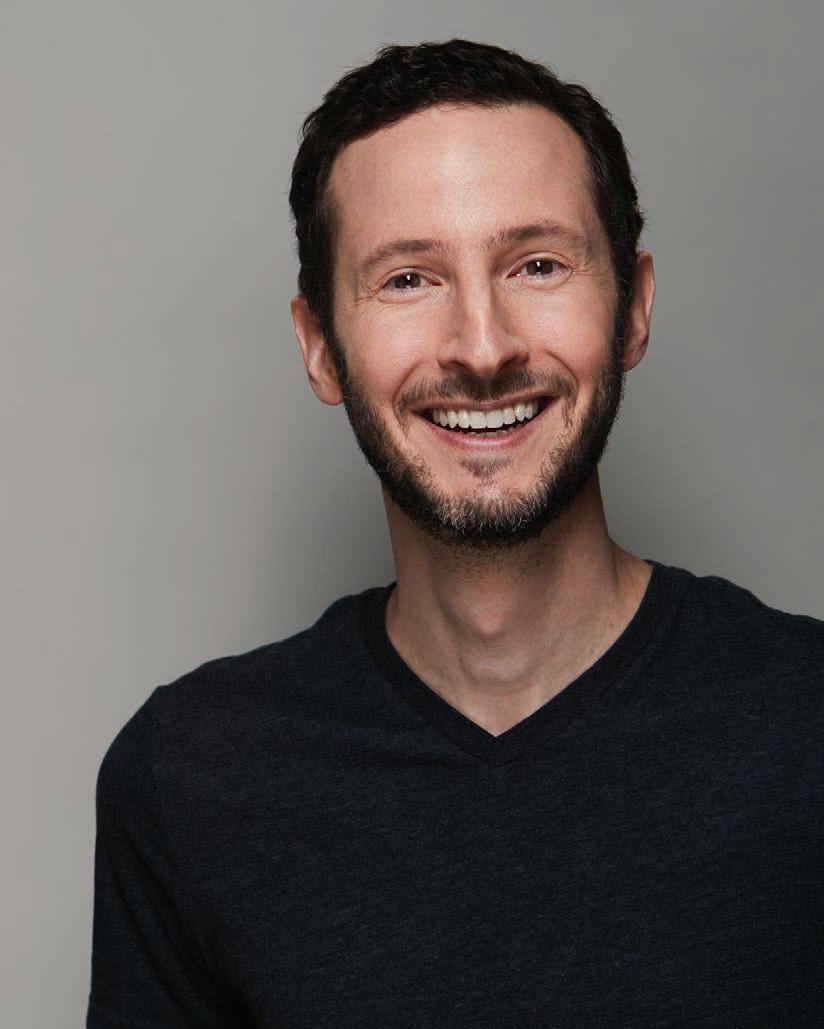
For example, let’s say you send an email to a partner, and they don’t reply. You might think they’re ignoring you. That would be bad. But what are the other options—the catastrophic, neutral, or good options?
Well...that partner might be very sick. (Catastrophic.) Or they might be super busy. (Neutral.) Or they might be formulating a great proposal for you. (Good!)
When we force ourselves to consider a range of options, we confront a simple but easily forgotten fact: We don’t actually know what’s going on.
I wish I’d thought of this earlier, because it would have helped a situation I faced. I was
as if making fun of me. What a jerk, I thought.
Then the guy approached me afterward—and everything changed.
“I came here with my wife and didn’t expect to get anything out of this conference, but you really helped me,” he said. He’s exploring a big career change and loved my advice. We talked for 20 minutes. Super nice guy!
Now I know: He wasn’t smirking during my talk—he was happily surprised, and nudging his wife because of it! Meanwhile, I was needlessly distracted because I assumed the worst.
Imagine if, instead, I had simply considered the full four explanations. It could have
Here’s the thing: Our brains often assume the worst. It’s pointless to fight against it. So instead, let’s just surround our assumptions with even more assumptions. Let’s remember that the world is large, and business is unpredictable, and people are complicated.
There’s only one way to build a company, and to build a life: Make room for all possibilities.

Jason Feifer jfeifer@entrepreneur.com
@heyfeifer subscribe: entm.ag/subscribe

In this increasingly digital age, one may assume that where a business is physically located doesn’t matter. But that couldn’t be further from the truth. A growing business with big ambitions requires a location that includes things like excellent infrastructure, business-friendly policies, access to capital, and helps foster happiness and well-being among employees.
There’s one U.S. city that has all of this and more: San Diego. Sure, the city’s average forecast is 72 degrees and sunny, and it boasts 70 miles of amazing coastline with an outstanding outdoor lifestyle. But America’s Finest City is more than just its good looks. San Diego has a powerful entrepreneurial ecosystem that fosters creativity and is brimming with innovation.
“You can be part of something exciting in terms of pushing the envelope, something that gets recognition around the world, but at the same time you can have a quality of life here that is very hard to find anywhere else,” says Anantha Krishnan, Senior Vice President of the Energy Group at San Diego-based General Atomics.
San Diego is inspiring and inviting, but that just scratches the surface. Here’s why the city has become a hotbed for business innovation.
San Diego is home to some of the most highly acclaimed colleges and universities in the U.S., including the University of California, San Diego; University of San Diego; San Diego State University; and Point Loma Nazarene University, just to name a few. The facilities and research that is happening at these institutions attract some of the top minds from all over the world.
“We have a strategy of innovation and entrepreneurship across the campus,” says Pradeep Khosla, Chancellor of UC San Diego. “It doesn’t matter what your major is, where you live, where you come from—you can innovate in your domain, and you can be an entrepreneur. ... Our job is to enable and empower everybody who comes to us. Let’s see how we can help them go out and achieve their dreams.”
One of the many local businesses that benefit from the qualified talent coming from San Diego schools is General Atomics, a global energy and defense business specializing in unmanned aircraft systems, nuclear energy, electromagnetic systems, advanced weapons, and more. The company was founded in San Diego in 1955.
Krishnan says the focus of General Atomics’ Energy Group is on developing fusion energy, which it does alongside the U.S. Department of Energy and via frequent collaborations with researchers at UC San Diego.
Krishnan and Khosla agree that collaborations across organizations are possible because of San Diego’s passionate and supportive entrepreneurial ecosystem.
“This city is one of the most collaborative cities I’ve ever seen,” Khosla says. “If you put two smart people together who are both ‘hyperachievers,’ they will figure out how to combine their strengths to accomplish something that neither one of them can do alone.”
Over the decades, San Diego has become a hotbed of innovation in areas such as biomedical, wireless, nuclear, and national securityrelated technologies, among others. The ecosystem is “very focused,” operating in spaces that are different from other places like Silicon Valley, Krishnan says.
“I think San Diego is destined to be one of the meccas of hightech,” Kohsla says. “I’m very bullish on what San Diego is and where it is going.”
To learn more about why San Diego is one of the best places for tech, innovation, and business, visit www.sandiego.org/BrightestCity
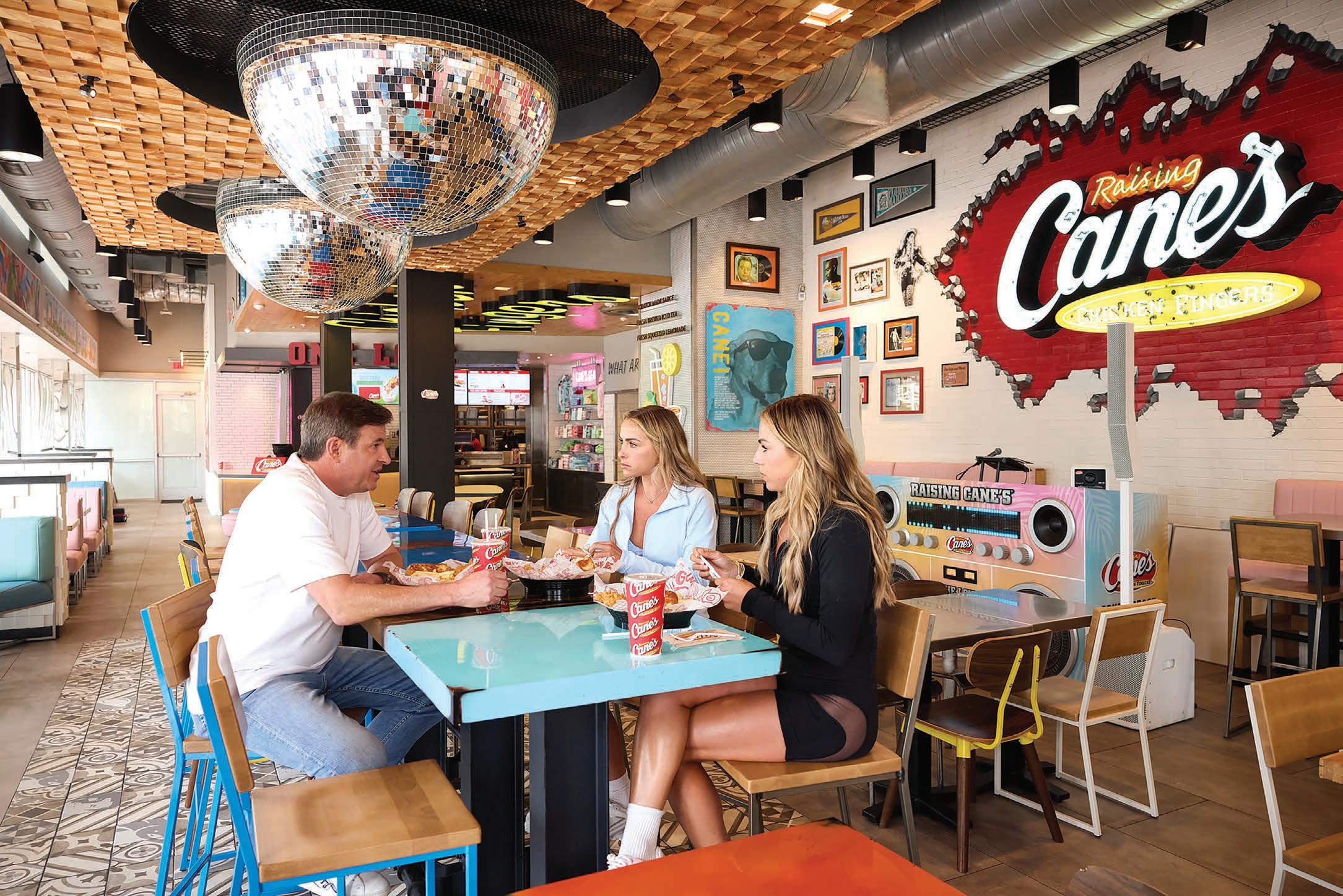
Raising Cane’s restaurants turned Todd Graves into a billionaire. Social media turned twin basketball players Hanna and
into wellness and fitness stars. Here’s their joint playbook for success. by JASON

Scan the QR code to schedule a free demo.

→ CROSSOVER
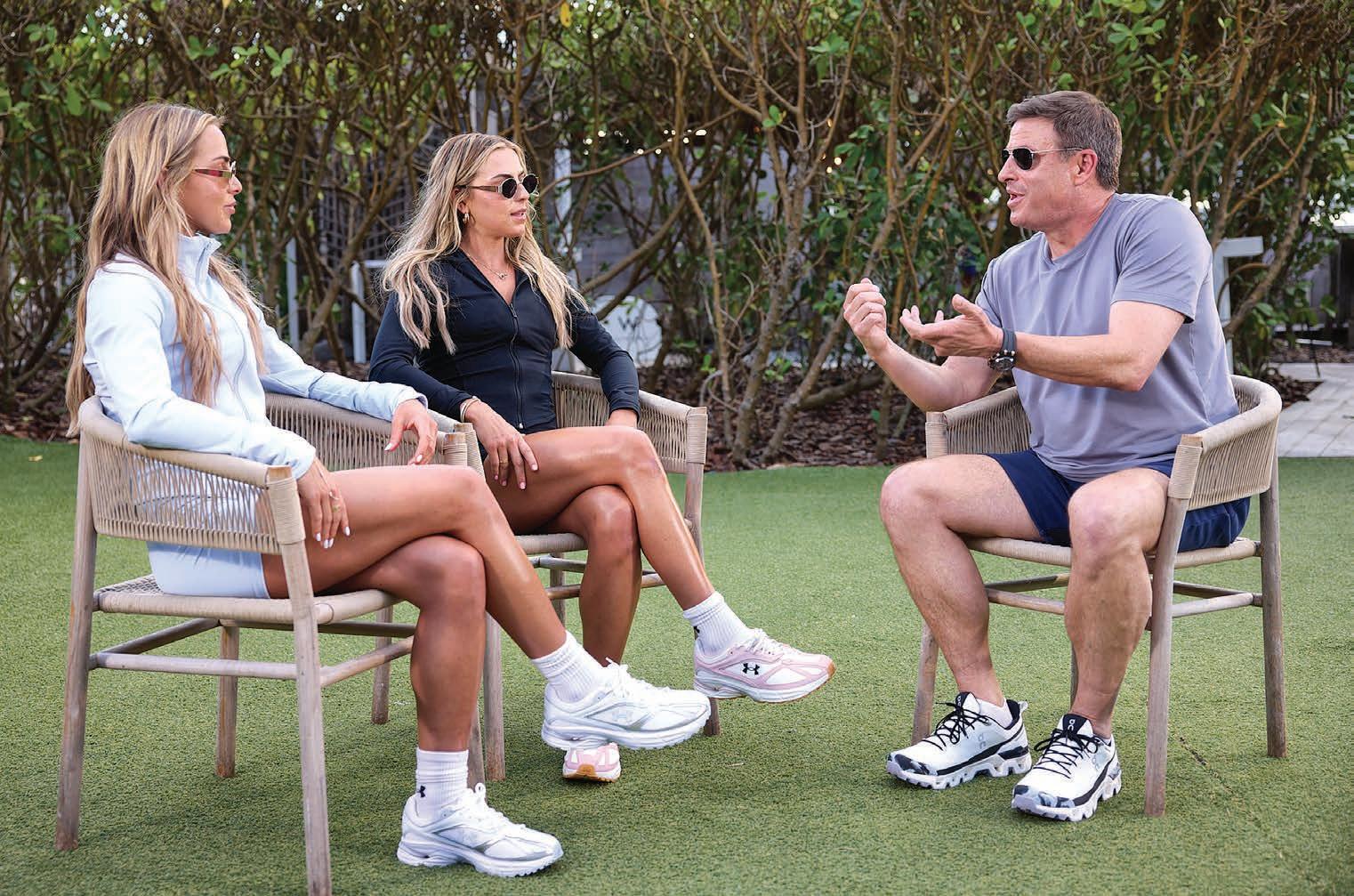
When Raising Cane’s opened a new restaurant in Miami, it hired local influencers to hype it up. That included two of the city’s buzziest names— Hanna and Haley Cavinder, twins who rose to fame while playing basketball for the Miami Hurricanes, and cofounded the TWOgether fitness app and Hustle Beauty brand for athletes.
influencers Hanna and for athletes.
Recently, we asked the twins what entrepreneur they’d most like to talk with. They circled right back to that chicken restaurant—and said they’d love to meet Raising Cane’s billionaire founder, Todd Graves. They’d seen his business from the outside, but they wanted to understand it from the inside. And Graves, who believes that partnerships are the key to success, was eager to meet and learn from them too.
HALEY CAVINDER: When you started Raising Cane’s, did people understand what you wanted to build?
So we up a
So we brought the three of them together for a conversation. In turn, they drew up a game plan for growth—in business and in sports.
This conversation
Here’s an edited version of their can watch the full video
This conversation was part of a new series we call The Playbook, produced in partnership with Sports Illustrated. We pair entrepreneurs with entrepreneurial athletes for career-spanning conversations. Here’s an edited version of their conversation; you can watch the full video at entrepreneur.com/twins.
TODD GRAVES: I got turned down by every bank in town, because it was a weird concept back then: Just chickenfinger meals. Other restaurants were adding more items to add more sales. The only model I could think of was In-N-Out Burger—which primarily sells hamburgers—but nobody in Louisiana, where I started, had heard of that. But I just believed in myself. I said, “If you can serve a ‘craveable’ meal consistently,
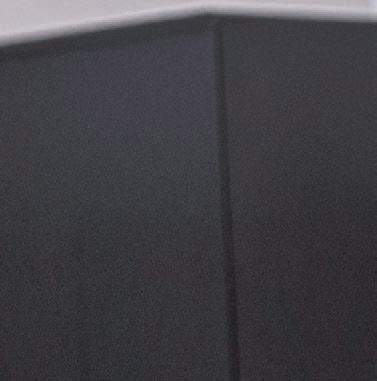

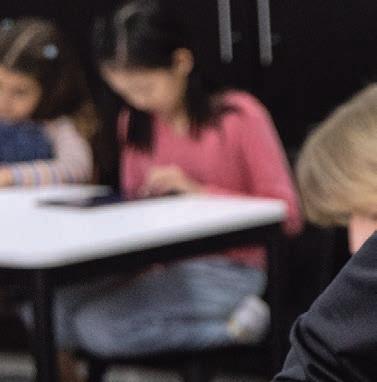

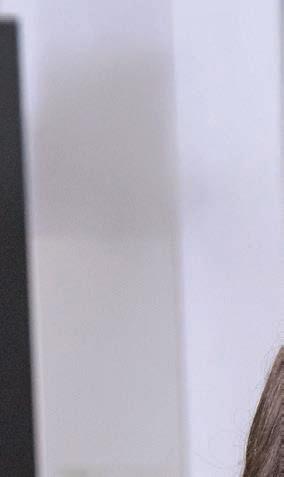

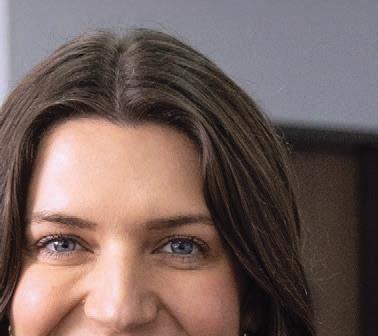
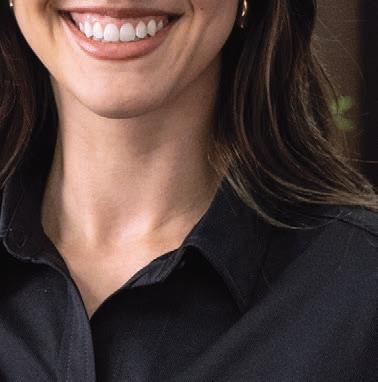
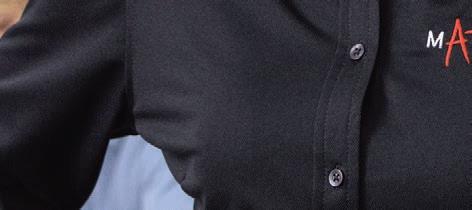
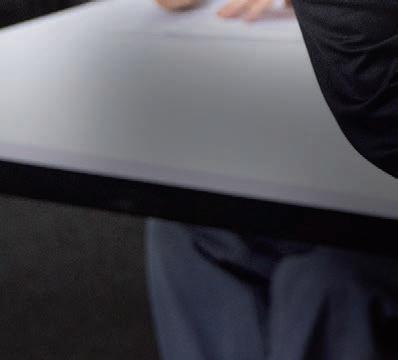


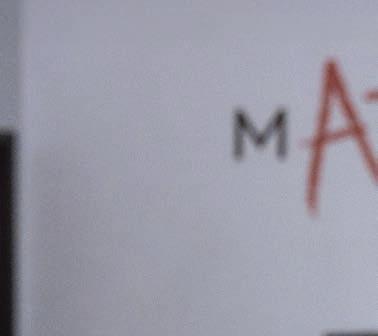
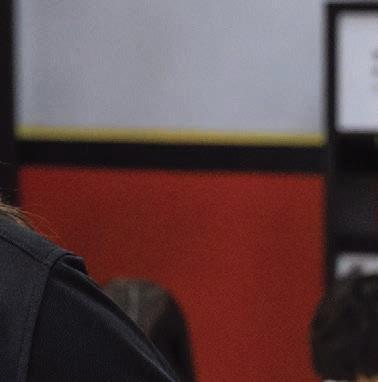
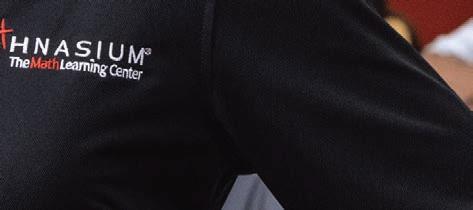




















• Affordable entry point with quick build-out time




• High-earning centers with potential 7-figure annual revenue
• Industry-leading 30%+ average profit margins
• Recession-resistant business model
• Comprehensive training and ongoing support






















































over and over and over, it’s going to be a success.”
So I knew I had to take it into my own hands. I worked in oil refineries, I worked as a boilermaker, I worked in commercial fishing in Alaska—all to make money for this business. The fishermen in Alaska could see me working so hard for this chicken-finger dream, and they’d tell me, “You’re going to make it.” That was my first encouraging group.
HALEY: Once you got going, what was the hardest part?
TODD: When we started, we didn’t really know what we were doing. We were open seven days a week—and we still are. But back then, the college students I hired wouldn’t show up to work. So I’d call friends, call family: “I need you to come help me cover this shift.” I didn’t do much sleeping. We were open every night until 3:30 a.m. By the time we got out, it’d be 5:30, and then we had to be back opening at 8:30 every morning.
HALEY: Jeez.
TODD: There is not a balance of life at a startup. You have to put 100% into it. It’s why I started Cane’s when I was y’all’s age. I opened up at 24, and at that time I could devote everything. It was that drive, that passion. Look, I profited $30 my first month, and I was thrilled. Because it meant I could pay my people, I could pay my vendors, I could pay rent. That’s when I knew this was going to be a success. The next hard phase was going from one restaurant to two. I didn’t know how to build teams. I got as much

WE ALSO LEARNED HOW TO GET THE MOST OUT OF A GROUP OF PEOPLE. WHEN YOU ALL HAVE ONE COMMON GOAL, IT DOESN’T MATTER WHAT SOMEONE’S PAST IS, OR WHERE THEY COME FROM. YOU JUST ASK: HOW CAN WE ALL ACCOMPLISH THIS?”
advice as I could, but it was more about learning through trial and error. I burned through people. I felt bad about that, not knowing what I was doing. Then I learned to get the most out of people and be able to coach ’em and lead ’em to where they became managers.
Now we have 75,000 crew members, and I have a platform to teach them. For most of them, Raising Cane’s is their first job. So I tell them: “Work hard. Have fun. Let’s deliver quality product. Let’s earn our money.”
HALEY: Darn, you make a good coach, too!
HANNA CAVINDER: You played football, correct? I feel like that started with the athlete mindset.
TODD: A hundred percent. I learned leadership through sports. For example, when someone does something wrong in business, leaders might think, Oh, I’ll talk to them about that in a couple days. But coaches don’t do that! They course-correct right then.
HALEY: In the moment.
TODD: And the culture is: Everybody’s always trying to get better. Mistakes don’t mean you’re bad. We have a
culture where it’s okay to make mistakes—but we need to learn from ’em.
How has playing basketball helped you with starting and growing your businesses?
HANNA: We learned consistency and discipline. You have to show up every single day, regardless of the highs and lows.
HALEY: We also learned how to get the most out of a group of people. When you all have one common goal, it doesn’t matter what someone’s past is, or where they come from. You just ask: How can we all accomplish this? Also, recognize that we all have different strengths
and weaknesses. That’s true even for Hanna and I, but we have one goal: to be successful. And you can’t fake it. If you feel like your coach is just saying empty things to you, you don’t want to show up for them. You need people to think, I want to show up and do this because they really care about me.
TODD: That’s true. The crew’s happier. They’re working better. It affects quality. It affects everything else.
HANNA: Also, we learned how to respond to things outside our control. It’s like, “Okay, the coach didn’t play me. I can’t control that. So what can I control and still have success?”
TODD: You’re years ahead of your time. I literally tried to control everything and make everything so perfect. One of the biggest lessons I learned was: Concentrate on progress rather than perfection. For example, I wouldn’t release my first training manual because I kept thinking, I’ve got to make it better. But people were like, “Hey, just do version one. Then work on that.” That was good advice. You’ve built a great community for your businesses. What is your secret sauce for bringing people together?
HALEY: When we started our health and fitness businesses, we thought a lot about having a purpose. And that purpose
is to help young girls. That allows us to stay happy and in a good mindset.
HANNA: That helps us through hard times, too. For example, we both had an eating disorder—but we were able to turn it into a positive for other people by making an app to help them eat better. It was like, “We’re going to impact a little girl, or somebody who’s struggling in life, and that’s a win in itself.”
TODD: That’s purpose.
HALEY: That’s the passion that keeps you going.
TODD: Look, if you love what you do, you’ll do it till the
day you die. In business, people often value money and wealth more than purpose. That’s why so many great entrepreneurs sell out early on. Then their company is bought by private equity, and it doesn’t have the same values. You lose that special founder deal. People ask me, “Hey, what’s your endgame?” I’m gonna grow old and die with this business, and the kids are gonna take it on and keep those values going, and then hopefully their kids, and we’ll just keep those values going forever.
HANNA: There’s never an endgame.
TODD: I love that.






























What builds true customer loyalty?
We asked six leaders to share what made the most difference in their businesses.
1/ Take the hit in hard times.
“Loyalty is built not during times of success, but when things don’t go as planned. One client’s business model needed to pivot due to unforeseen challenges. Despite the significant cost to us, we helped them restructure their team and adapt their strategy, at no additional charge. This decision reinforced our long-term commitment to the relationship, and as a result, that client has since expanded their team with us by 5X and continues to grow the scope of services they trust us with.”
—ALEX
—ALEX ROSS, Lean unexpected places.
ROSS, cofounder and chief operating officer, Horatio
2/ Lean into unexpected places.
“In the summer of 2023, a TikTok trend exploded our business and created an entirely new consumer set. It was called the ‘flat belly challenge,’ and in it, women in southern states showed each other that if they drank kombucha on an empty stomach for seven days, they felt less bloated. It yielded a huge uptick in sales at Aldi and Walmart, places we hadn’t considered to be hotbeds of demand for kombucha. It taught me that loyalty can come from anywhere—we can’t be too precious about who we target or speak to—and that real, actual benefits can be a driving force.”
—CHARLOTTE MOSTAED, chief marketing officer, Health-Ade
3/ Make customers feel heard.
“A product like tea is tied to experience, ritual, and the feeling it brings people. So when we make customers feel heard and valued, they keep coming back. Once, a longtime customer reached out about their favorite tea we had discontinued. They were disappointed. So we took the time to understand what they loved about it and our team then curated a selection of teas that closely matched what they were looking for. They were so moved by the effort that they became an even more loyal customer, and shared their experience with others.”
—STEVE
SCHWARTZ, founder, master blender, and CEO, Art of Tea
—CHARLOTTE MOSTAED, chief Health-Ade Tea
4/ Relentlessly improve your product.
“We’ve always been hyperfocused on establishing a deep understanding of our customer and providing purpose-driven products that embody our ‘fewer, better’ ethos. We’ve done this by constantly listening to our audience and evolving our product selection, which allows us to foster long-term relationships. A great example is our iconic System Tote. While it’s been a bestseller for years, we’ve refined it over time to grow with our customers and consistently exceed expectations.”
—KARLA GALLARDO, cofounder, Cuyana
5/ Treat customers like partners.
—KARLA GALLARDO, Treat
“When we started out, barely anyone in our industry offered transparent pricing. But we committed to never nickel-and-diming customers and publishing our prices online. We answer the phone in 45 seconds or less, 24/7—whether to help customers move through a win like adding a new hire they’ve been courting for a month to their team, or go through something painful like a workforce reduction. These things might seem small, but together they really matter to the small businesses we serve.”
—MICHAEL SECKLER, CEO, Justworks
6/ Watch for customer pain points.
Watch for
“One of the most painful yet valuable things you can do is watch a customer use your product in real time. It can be humbling, even frustrating, to see where they struggle or get confused, but it’s also one of the fastest ways to understand their true experience. The moments where a customer stumbles are the biggest opportunities to improve, and fixing those pain points is what builds long-term loyalty.”
—VIVEK RAGHUNATHAN, senior vice president of engineering, Snowflake






Color. Typography. Design. These are all essential elements of a company’s logo. It takes a special combination of these things to create an image that not only represents a brand or idea, but is relevant, timeless, and evokes emotion and response.
And let’s face it: Time-strapped entrepreneurs don’t often have the skills or bandwidth to create a logo using complicated design software, or the funds to hire a professional designer.
That’s where VistaPrint comes in. With an array of logo design tools and support options, VistaPrint helps businesses of all sizes create impactful logos that quickly communicate their brand and resonate with customers.
Take it from these three small businesses that worked with VistaPrint to create custom logos as well as a wide array of marketing materials that help their brands stand out.

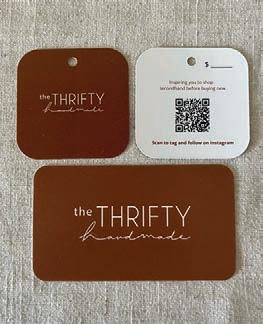
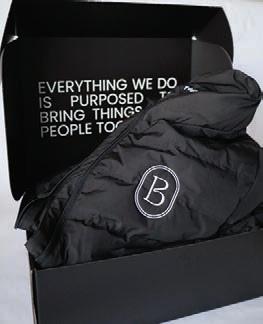
Founder: Distinee Gayle
Company: Fully Bloomed, which creates immersive self-care experiences for individuals and corporate groups.
Creative idea: Create a new logo specifically for the company’s flagship event, Fully Bloomed Fest.
Founder: Kelly Fowble
Company: The Thrifty Handmade, a store she founded selling various wares from fiber art to secondhand clothing.
Creative idea: Leveraging her new logo for a hybrid execution: A price tag that doubles as a business card.
In doing so, Gayle set out to give the event its own brand and identity. The new logo was used on branded event essentials like brochures, totes, pizza boxes, affirmation napkins, and acrylic signage. “Creating a custom logo for the festival ... allowed Fully Bloomed Fest to stand on its own while still staying connected to the Fully Bloomed brand,” she says. “Attendees loved how every detail felt intentional and cohesive.”
Customers always take price tags home. Now, they get to take a business card home, too. Fowble used VistaPrint’s custom hang tags and chose a rounded square design with a premium matte finish. The tags also include a QR code that directs customers to The Thrifty Handmade’s Instagram account.
Founders: Bernard & Jassmire Agyakwa
Company: Bomu, a creative studio that offers branding and content creation as well as event planning, floral design, and home decor services.
Creative idea: Using branded swag to onboard and outfit new team members.
With a freshly designed logo thanks to help from VistaPrint, the Agyakwas created a new-hire welcome box. Inside, team members receive branded shirts, custom Bomu-shaped stickers, keychains and more. “These boxes allow us to fully immerse new team members in the Bomu experience, making their welcome both intentional and memorable,” Jassmire Agyakwa says.

Founders often think they know what people want. But what if they’re wrong? Here’s how one beverage company rebranded—making itself more appealing to the right buyers. by FRANCES DODDS
When O2 launched in 2014, it called itself an “oxygenated recovery drink.” What’s that? It means it’s infused with oxygen to improve recovery. O2 was marketed to young men who exercise hard, like its founders, Dave Colina and Dan Kim, and it did great in gyms. But it struggled to reach wider retail.
Then it became clear. Retail buyers didn’t understand the phrase “oxygenated recovery,” and consumer research revealed a surprising disconnect: O2’s most engaged customers were women ages 35 to 55—not young men!
It was time for a change. O2 hired the branding agency We Are Bill. Here’s how they tore the brand down and then built it back up.
This is the original O2 design. We Are Bill pointed out a few problems: “The logo could be interpreted as a kind of recycling symbol. The waves can communicate water, but also make the logo busy.”
The silver metallic top was also a problem. It’s often associated with energy drinks, which are not perceived as healthy—one of O2’s greatest selling points. It also leans more masculine.
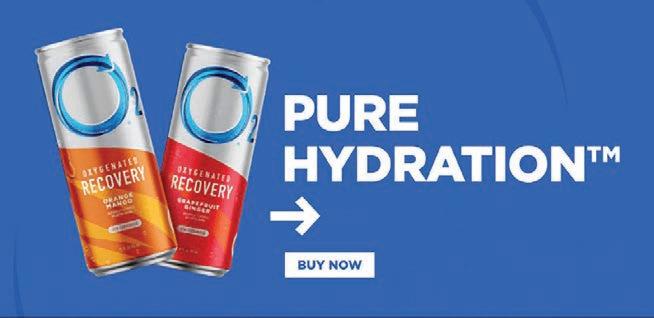
TSTEP 2/ RETHINK THE VIBE.
hese are a series of alternative designs from We Are Bill. Here’s their thinking about each can:
1/ It’s a simplification of the existing logo. The blues help to communicate hydration. Real ingredients are on the front. Saturated colors communicate full flavor.
3/ This is the simplest way to communicate “water with oxygen in it.” The drop of water shows it’s a hydrating drink. The scientific structure of O2 lends some authority.
2/ This was inspired by the Lewis Structure, which is a way of communicating the molecular structure of oxygen. The scientific design helps create a sense of authority.
4/ This makes the brand slightly more premium. The custom form of the serif “O” is bold and memorable. The “2” nested in the “O” allows for a symmetrical balance.


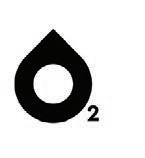



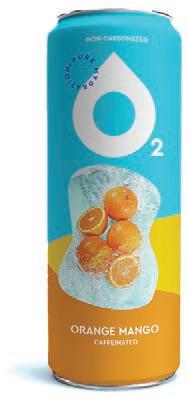

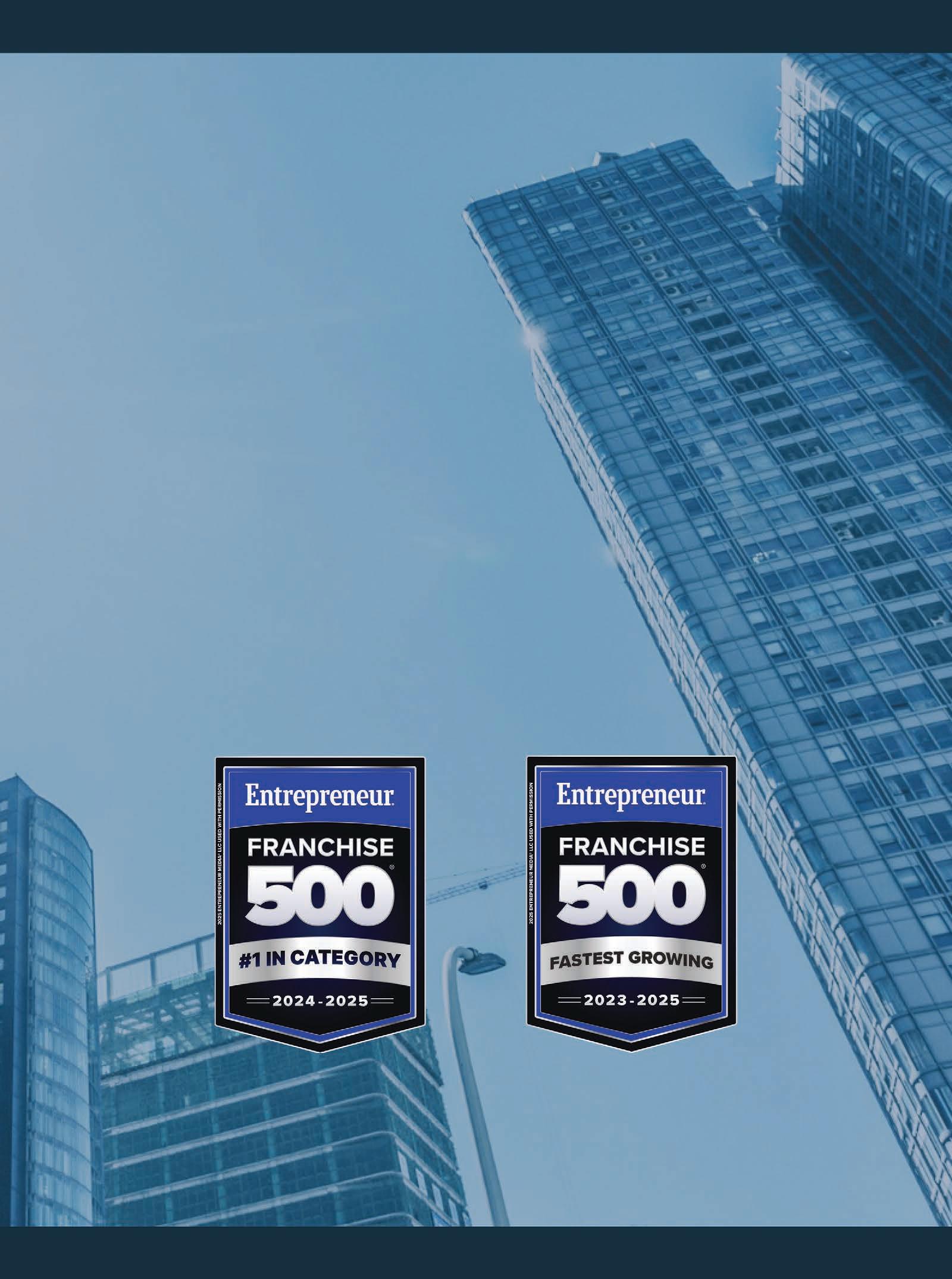
STEP 3/ REFINE THE APPROACH.
O2 gravitated toward Option 1, which bears the closest resemblance to their original branding. “We already had several hundreds of thousands of customers drinking O2 somewhat regularly,” Colina says. “So we didn’t want a redesign that confused them.”
But the changes still marked fundamental, clarifying shifts. They swapped out the “oxygenated recovery” language for the simplicity of “hydration,” and described the beverage as “a new kind of sports drink.” They ditched silver for white to create a sense of clean healthfulness and an approachable premium feel. The bright colors helped communicate the full flavor even though the liquid is clear.




STEP 4/ FINALIZE THE DECISION.
Once the O2 team picked their favorite design, it was refined for further clarity. They added “non-carbonated” at the top of the can, and tweaked the description and nutritional fact bubbles.
They also thought about how the cans would appear in retail. “When you have several cans side by side, the color blocking on the bottom curves up to mimic a wave,” We Are Bill CEO and cofounder Scott Roslyn says.
The final result: O2 began life as an “oxygenated recovery” drink for hyperathletic men, but is now a gender-neutral, flavor-focused, clean hydration drink for everyone. That’s what unlocked growth for O2, which you can now find nationwide at CrossFit gyms, yoga studios, and Life Time fitness clubs.
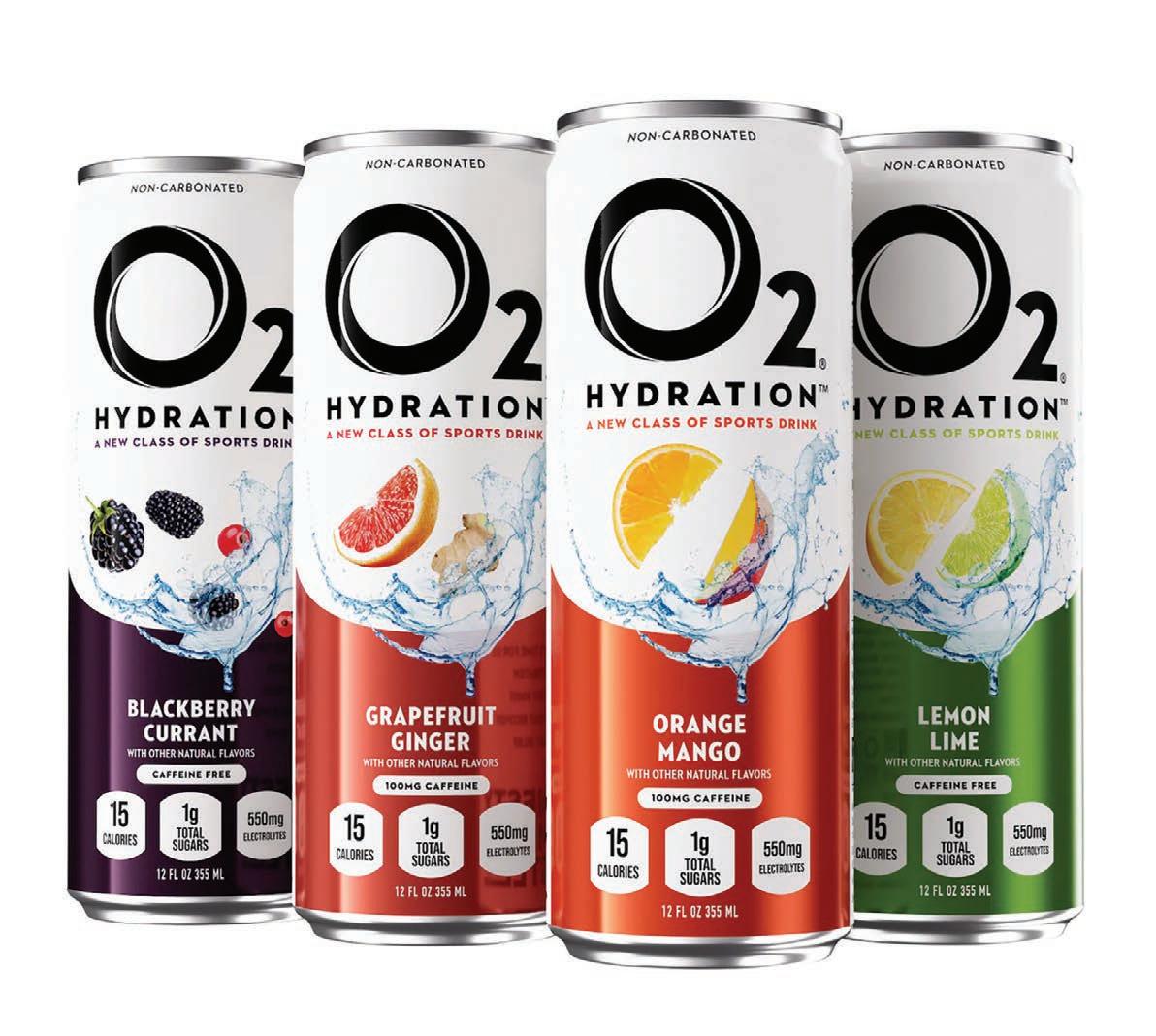
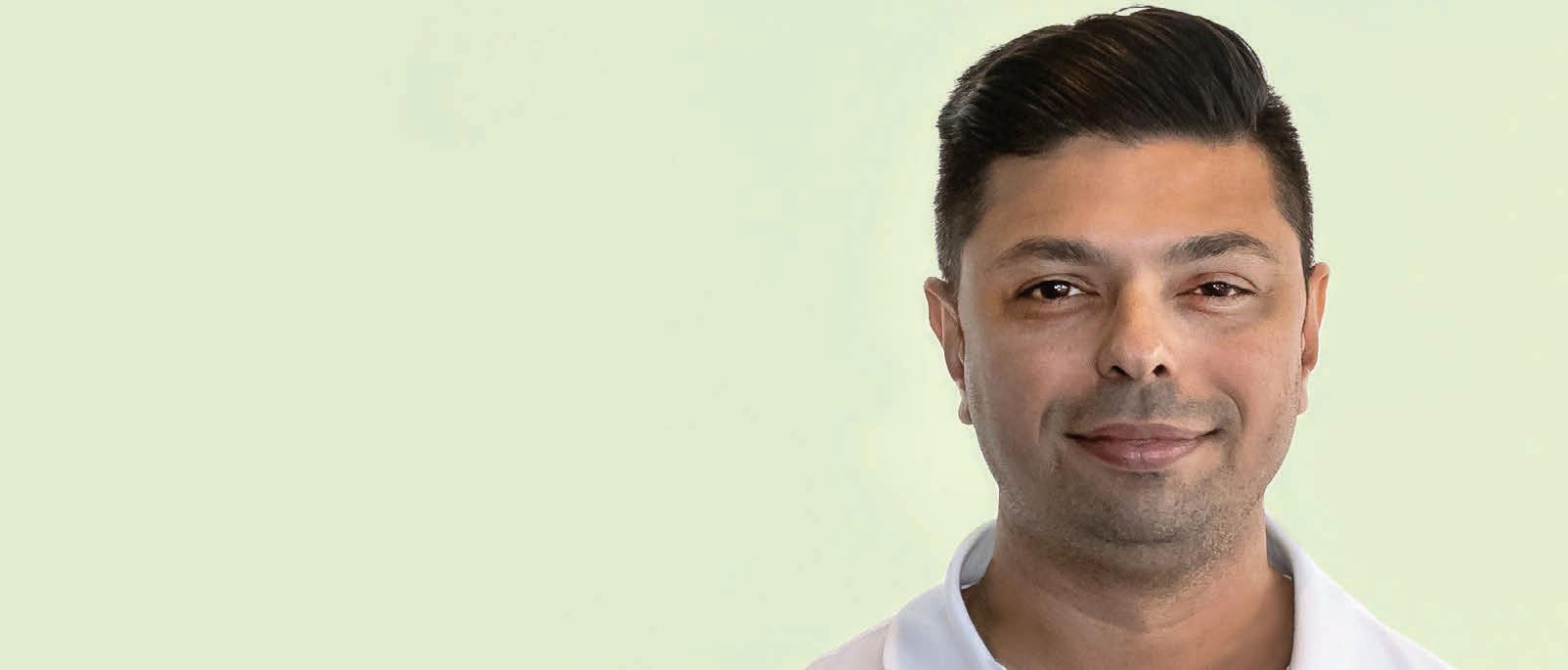

As a trusted leader in tutoring & test prep for nearly five decades, our commitment to shaping students’ bright futures has earned us the reputation of excellence — year after year. Make an impact in your community as a Huntington franchise owner — because our mission “to give every student the best education possible” stands the test of time.



• Over 45% higher average revenue than our closest competitor
• Low initial investment starting at $163,521
• $5 billion industry and projected to grow to $18 billion by 2028 (Source: Grand View Research)
• Close to 50 years as an industry leader in tutoring and test prep
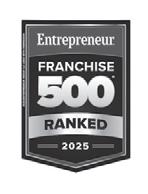
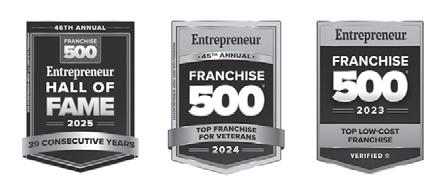

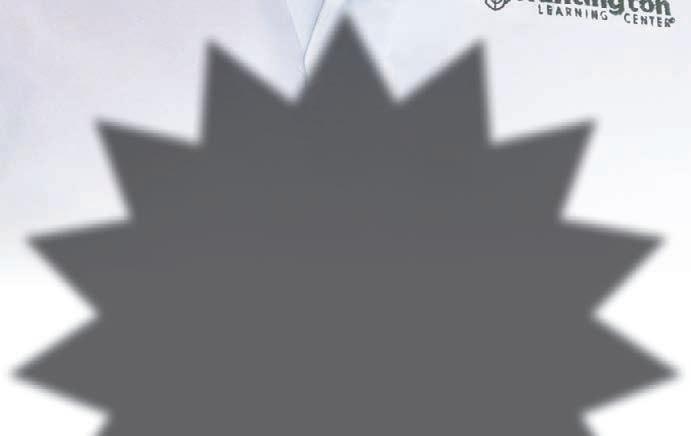

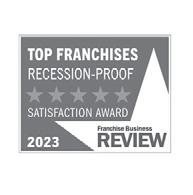
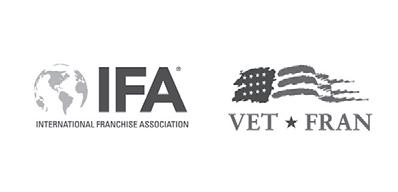

That’s why I stopped chasing a title and built a role that truly fit me. The change improved my life—and my business. by
JAKE KARLS
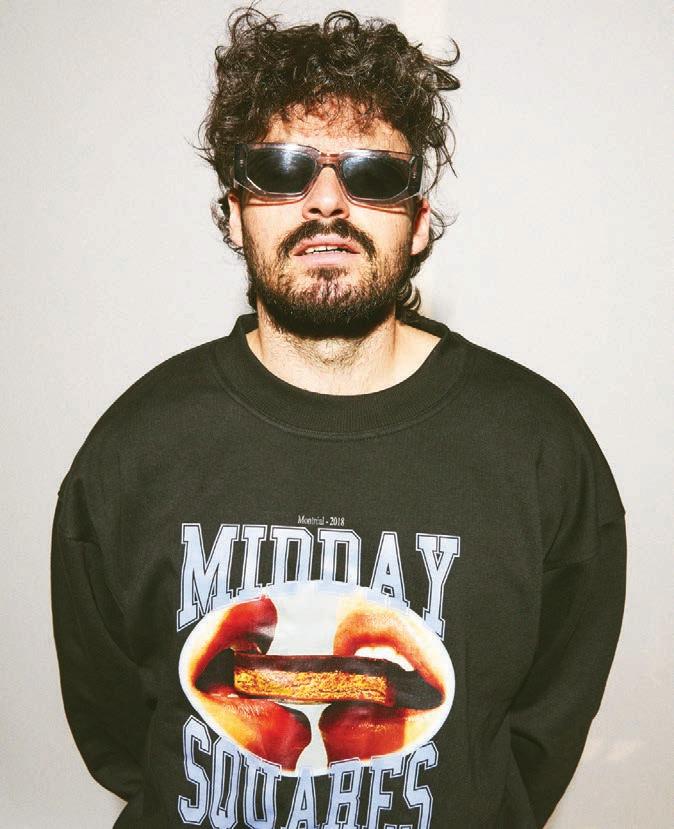
→ NOTTHECMO
At first, I really thought I needed a big title.
I cofounded MidDay Squares in 2018 with my sister and her husband. They’d created our product, which is a chocolate afternoon snack with protein and fiber. So they became co-CEOs (they’re awesome operators). I took the CMO role because it felt important and had “chief” in the name, and because, frankly, I was really good with social media and building community.
But as soon as our company started to grow, I began to fail. To understand why, I needed to ask myself some big questions like: What is my actual value? And how can I best put that to use? These days, I’m so much happier and more effective—and I’m no longer CMO. I think other founders would benefit from asking themselves these same tough questions, and making hard changes.
Here’s how it all started:
At first, Mid-Day Squares was just us three cofounders. We moved fast and had fun. Then
we started scaling and hiring quickly, and I had to manage new team members. I suddenly struggled to make decisions. I couldn’t articulate my ideas to my team, so instead, I just started executing things myself—without telling anyone.
As a result, my team was confused. Other departments were annoyed. Eight months in, I wondered if I should even be part of the company anymore.
Then my cofounders and I made a critical decision: We would talk about this with our therapist.
The therapist was part of an early commitment we’d made to each other to protect our family and professional relationship. We went to group therapy every week, and it helped us navigate hard problems and think through large risks. But I hadn’t really brought up my struggles as CMO...until that moment.
As we discussed it together, I realized that I was in the wrong position. I loved the ego boost of being CMO, but I was a bad fit for the role. A CMO needs to inspire, craft a vision, and execute it. I wasn’t good at that.
If I was honest with myself, I didn’t even want to be CMO. But giving up the role felt like failure—so I fought it. I told myself to push harder. I tried to force it. It took a lot of therapy sessions, tough conversations, and real self-reflection to finally decide that I needed to step down
Then I had an even bigger question to ask: What do I do instead? While we were in therapy, my cofounders gave me an answer: “Find your superpower, and let’s create a position around it.”
So I started to explore. I’m bubbly and magnetic, and that’s where I shine. I love building relationships and emotional connections, creating and spreading energy, being bold, and making noise. So in 2019, we created a new title for me: I became the “Rainmaker.” Now I spend most of my time traveling, meeting people for dinners, going to events, building networks, speaking at conferences, and appearing on podcasts and TV. As a result, I’ve brought all kinds of people—investors, retailers, consumers, new recruits, and media—to the company, equipping each department with key external relationships so they can win. That’s helped us go from making 50 squares a day in our small condo kitchen to producing over 130,000 in a day in the factory we built, selling over 55 million of them. Our retailers now include Target, Whole Foods, and Sprouts Farmers Market.
My cofounders and I still attend therapy together. Some other team members have followed suit. And we all now understand: Leadership isn’t about titles. It’s about having the courage to pivot and lean into what truly makes you come alive.








We’re more than just a property restoration company...
We’re an integral part of the communities we serve. PuroClean Franchise Owners bring peace of mind to those in need while building a business to be proud of. Join our network of dedicated professionals, united in service and collaboration, to support each other and make a meaningful impact.
I’ve always been passionate about business and making a positive impact in my community. PuroClean was the perfect fit, allowing me to assist those in crisis while building a business based on integrity, service, and growth.
Joseph Ortiz, U.S. Army Veteran PuroClean of Reston & San Juan
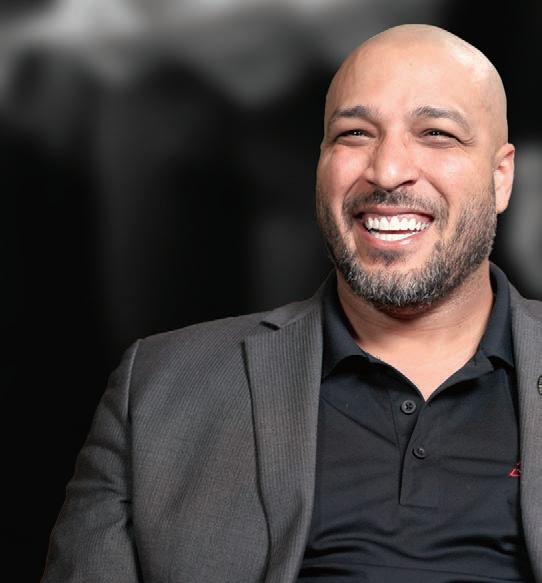

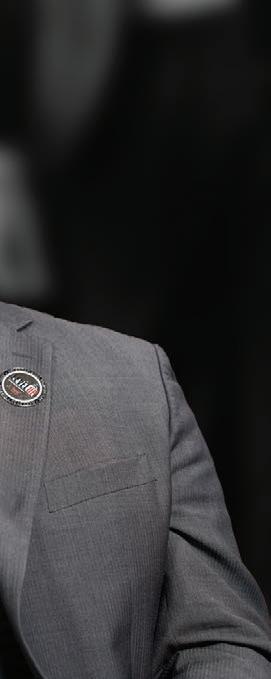

Become a PuroClean Franchise Owner and help rebuild peaceful homes with property restoration services.
www.PuroCleanFranchise.com
When you’re asked a question, you might want to talk things out. Here’s why that can hurt your team—and hurt you too by
WES KAO

Your colleague asks you a reasonable question. You could take five minutes to write a cogent reply. You have everything you need to reply well. Multiple teammates would benefit from reading your reply. But instead,
you say, “Let’s hop on a call.”
When you say this, sometimes what you really mean is: “I don’t want to do the work of clarifying my own thinking. And I believe it’ll be easier to think out loud and answer in a live conversation.”
In turn, here’s what your
colleagues or team members may think—even if they won’t say it to your face: If you don’t want to invest a few minutes to write a reply to a reasonable question, why should I listen (with no 1.5x button) as you meander in real time? GTFO. At this point, you might be
thinking: Wait, are you saying I should never do calls?
Not at all. There are plenty of good reasons to hop on a call— like to brainstorm, discuss ideas, collaborate, gather information, convey a message where your tone of voice matters, or get your recipients’ reaction in real time. And if the topic might lead to dozens of back-and-forth messages and confusion in writing, of course you should hop on a quick call instead.
The problem isn’t calls. The problem is defaulting to calls. Leaders often assume that “just hopping on a call” is the fastest solution, when it often isn’t. Here is a better way.
Someone asks you a question. You could do one of two things:
OPTION A/
• You take 10 minutes to draft a useful reply.
• Your audience takes a few minutes to read; one person asks a follow-up question, but everyone is otherwise satisfied.
• You move forward.
This takes 20 minutes total. It might feel like more work upfront, but the investment pays off.
OPTION B/
• You aren’t sure how to explain your idea, but you think it’ll be easier to explain on a call.
• You ask Joe and Sue to hop on a call.
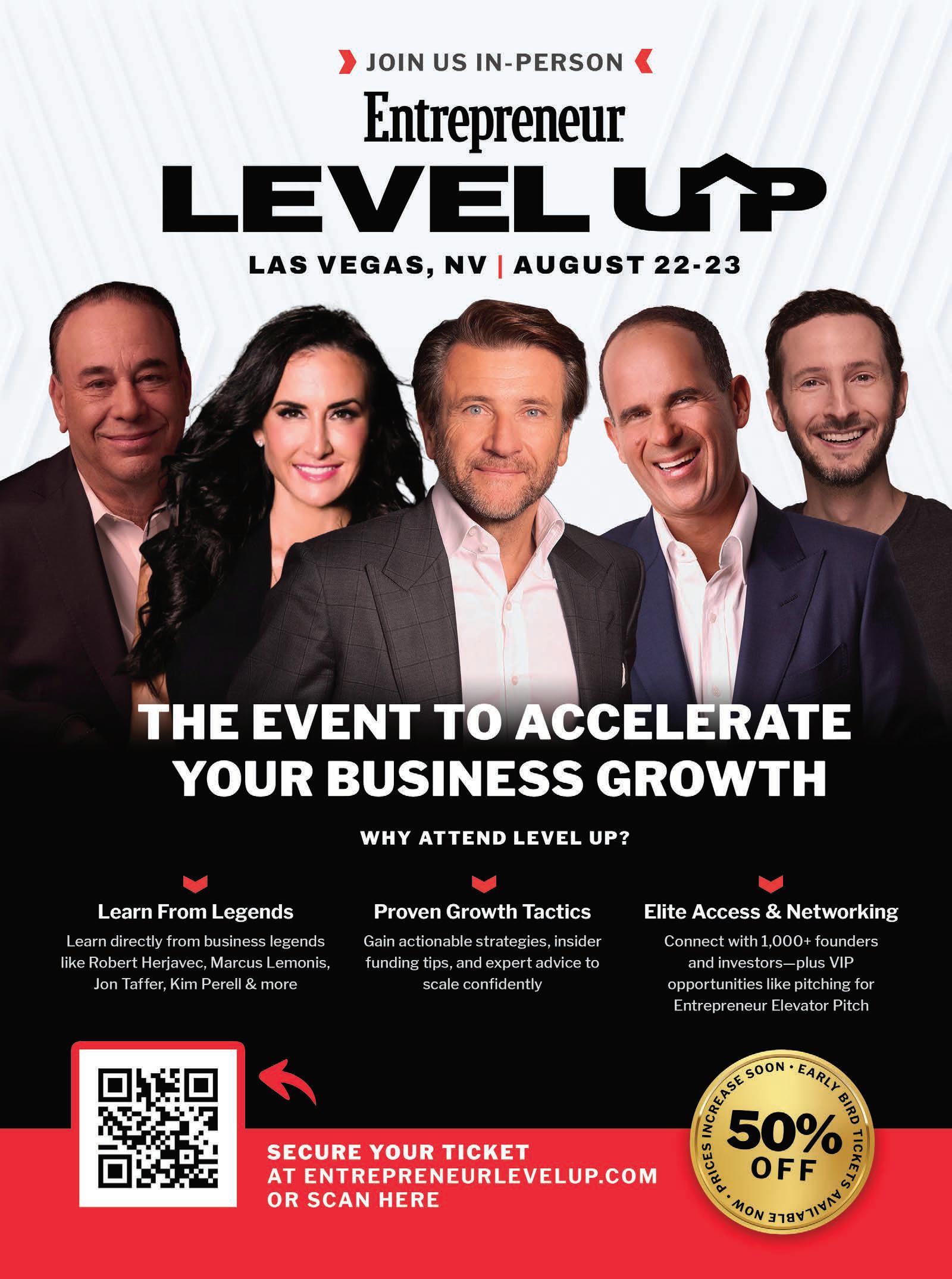
• You, Joe, and Sue hop on a call for 30 minutes. Now this is 1.5 man-hours spread across three people. And most of that time was you figuring out how to explain what you wanted to say, with too much backstory and the wrong type of detail.
• At the end of the meeting, one of you still needs to draft an answer for the rest of your team to read.
This takes two hours. You avoided thinking upfront, so you had to “pay” for this (with interest) later through multiple back-and-forth emails to clarify your point.
You might have saved yourself a bit of time upfront, but net-net it took more time for everyone else. This is selfish. Do not be selfish.
Now here’s the kicker: The real cost isn’t only about time. It’s also about how you are perceived.
As a leader, you might default to hopping on a call so you can quickly share your thoughts out loud.
This makes sense. You are genuinely time-constrained, and more importantly, you can “get away with” thinking out loud while others listen. Even if you ramble, you are less likely to be punished for it.
But there’s a cost to this. If you force your direct reports and broader team to listen to verbal vomit, they might think you are scatterbrained. They might wonder: Does our leader know what they’re doing? We asked a simple question, and we can’t get a straightforward answer.
This can negatively impact their perception of you. Or they might avoid asking you questions at all, for fear of losing time to the follow-up call. All of this could have been avoided with a simple, coherent reply.
If you’re guilty of initiating too many calls, you may have some excuses for it. Maybe you’re thinking about those excuses now. So let’s address them.
Here are the most common ones:
EXCUSE #1/ “I’m not a good writer.”
Many people feel this way, so they default to calls because it’s a more forgiving medium. In writing, it’s obvious if you are not articulating your ideas well. In speaking, there’s more leeway.
But there’s a problem: When you default to speaking instead of writing, you often push off the work of thinking. You instead decide to think at the same time as you speak, and you end up sharing halfbaked thoughts out loud.
It doesn’t matter if you’re a bad writer. Your thinking must happen sometime—ideally either before you answer in writing (Slack, email), or before you answer on a call. As an entrepreneur and leader, you are paid for your good judgment. You cannot escape the work of thinking.
EXCUSE #2/ “But we need to discuss this.” That’s fair. But are you truly discussing? Or are you just formulating your answer in real time?
Many times, when we say we want to hop on a call, there
might be a subconscious element of worry: “I don’t want to say something and be wrong. I’d rather discuss it in the safety of a group setting, where no one in particular is accountable, and we all share ideas.”
This is a valid concern. The solution, though, isn’t to hop on a call. The solution is to answer accurately. Don’t overstate your confidence. Don’t present a hypothesis as if it’s a fact.
You can speak both confidently and accurately. One of my go-to phrases for doing this is to say: “My initial thinking is X, because Y.”
EXCUSE #3/ “I don’t want to force my team to read a long Slack message.”
I teach an executive communications course, and my students often ask me: “This Slack message seems long. Would it be better to share this on a call?”
This is not a good reason to hop on a call.
Being concise is not about simply being brief. Just because a message has more than a few lines of text, that does not mean it is “too long.” No messages are inherently “too short” or “too long”; it depends on the context of what’s being discussed and the quality of the content.
Even if an answer is really “too long” for Slack, here’s something most people don’t realize: It can take more time for your recipient to listen than to read.
People can read at their own pace. They can reread key parts to boost their comprehension. But they can only listen to you at one pace.
So when you speak, your recipient actually has less control— and would likely benefit more from a written message.
EXCUSE #4/ “Our company culture defaults to meeting live. I like this and so do my colleagues.”
This may be true, and that’s OK. But please ask yourself: Is this really true? Do your colleagues actually like calls as much as you do?
The next time someone asks you a reasonable question in Slack, and your urge is to say, “Let’s hop on a call,” stop and ask yourself:
• If I think about this for a few moments, might I come up with a useful answer?
• What can I share in writing that will create a better baseline for a live conversation, if we choose to have one?
• If I’m not sure what to say in writing, what would I say on a live call? Could I say that now in writing?
The goal is to unpack why we might default to a call, and to be intellectually honest with ourselves about whether it’s truly worth everyone’s time. Don’t do things as a thoughtless default. Instead, take the most effective approach. So before you schedule another call, just take a beat to consider what you have to say. Then find the best way (for everyone!) to say it.
Wes Kao is an executive coach. She writes about leadership and communication at newsletter. weskao.com.
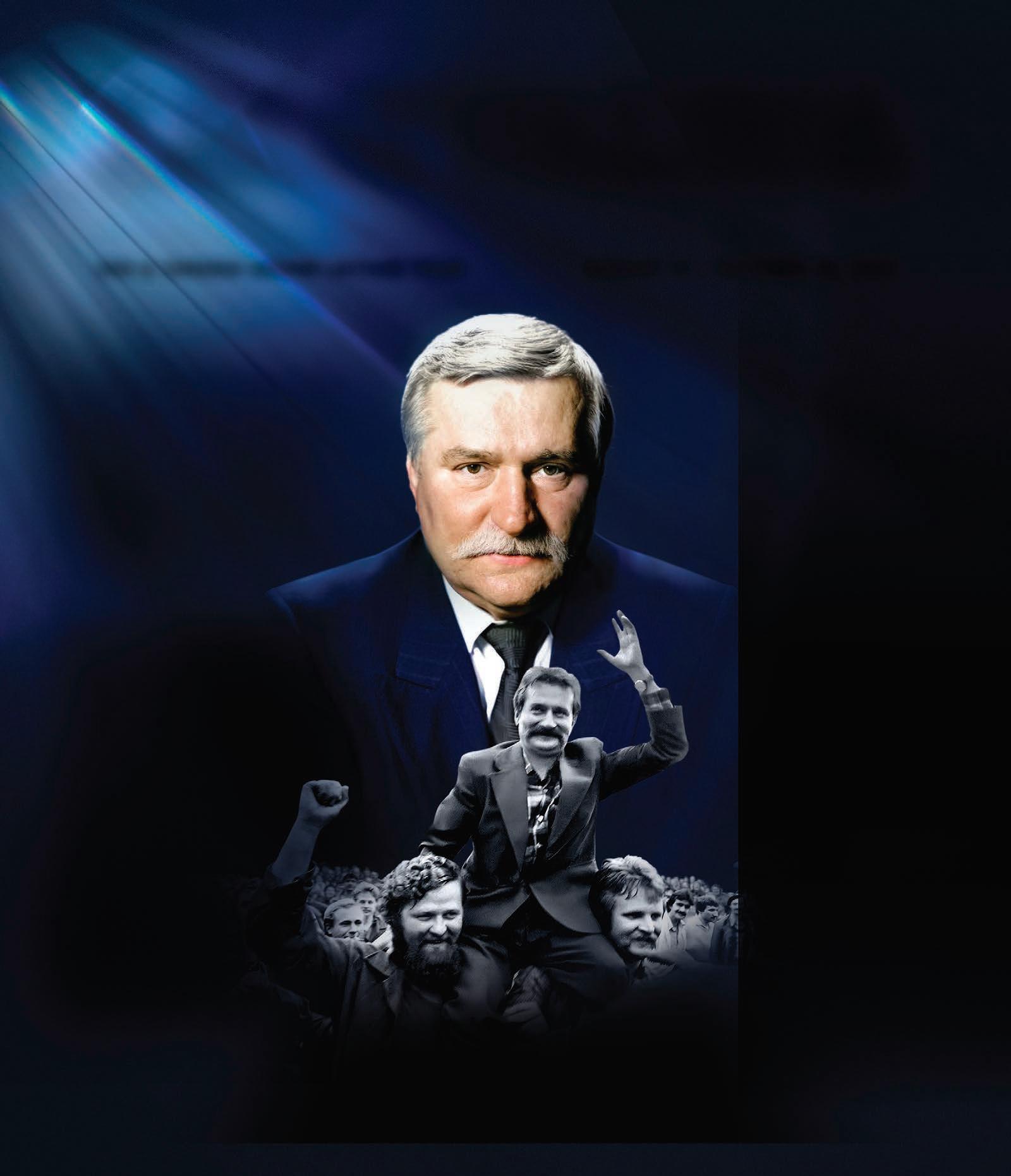
I call it the “Lumberjack Strategy,” and it’s more effective (and faster) than networking. by
CHUCK BLAKEMAN
Iwas exhausted. My B2B fulfillment business had grown rapidly and was doing $1.2 million annually, but finding new clients was a grind. I was trapped in an endless cycle of networking events, cold calls, and business card exchanges that yielded minimal results.
Then I discovered what I now call the “Lumberjack Strategy”—and I started getting clients with ease. Better yet, I never had to attend another networking event again. Here’s how it works: Instead of hunting for individual customers in a vast networking forest, I realized I could connect with people who had already chopped down all the trees.
These are people who spent years building relationships with exactly the clients I wanted to serve—and now I just needed their help reaching their clients.
How? By playing a long game with relationships, and strategically hinting at how we could do more business together.
For example, here’s how I did it with Gary (not his real name). He was a marketing manager I’d done some work with, who then moved into a mid-level job at Microsoft. We sent him a huge bouquet of lollipops on his first day. He said no one else did anything like it.
From there, I dripped honey. Once a month, I sent emails on resources and information to help him succeed there. I sent
him updates on my business every four to six weeks. I flew to Seattle once a quarter just to catch up with him—though I always told him I was there to “see potential clients.” (I didn’t want to freak him out.)
After about 18 months, an outsourcing opportunity came up at Microsoft—and Gary thought of us. That turned into a $4 million contract. Then he started introducing us to other tech companies he worked with—so that Gary’s clients became our clients
Gary was a perfect lumberjack. He wasn’t a big shot at Microsoft; he was just a receptive, well-connected person. That’s who you want.
Here’s how you can find your own lumberjacks:
1/ Identify who has your ideal clients.
Start by making two lists: industries full of your potential clients, and specific individuals who already serve them. Look beyond the obvious. Sometimes your best referral partners are in adjacent fields, or even “competitors” who serve slightly different segments.
2/ Focus on the connectors, not the connected.
Not all well-connected people are good lumberjacks. For example, I once wasted months pursuing one of Denver’s most well-connected businesspeople, only to realize he collected connections but rarely shared them.
There’s no single way to sniff these people out, but you’ll get
a sense over time—and when you see that they don’t make connections, move on.
3/ Build relationships intentionally.
I never directly ask for referrals. Instead, once I have a good working relationship with someone, I ask: “Do you know one other person who might benefit from the experience you’re having?”
This question is magic. It transforms the conversation from a self-serving request into an opportunity for them to help their friends.
4/ Model the behavior you want. Often, the best way to get clients is to first start referring clients. I will start sending clients to a potential lumberjack, in the hopes that they’ll want to return the favor.
NOT EVERYONE will embrace this approach. That’s fine. You only need three to five good lumberjacks to transform your business.
This isn’t about hoping for referrals; it’s about intentionally building relationships with people who can connect you with entire forests of clients. It took me five businesses to learn this lesson—but once I did, I was finally able to make my network work for me.
Chuck Blakeman is a serial entrepreneur. This article is drawn from Chuck’s new book, Sell Less, Earn More, now available everywhere.

In Michigan, agriculture doesn’t just grow — it thrives. With 47,000 farms spanning 10 million acres, we lead the nation in producing squash, cherries, cucumbers and black beans. Our ideal climate, diverse growing conditions and world-class logistics network create the perfect environment for agribusinesses to flourish and reach markets across the Midwest, the nation and the world. Seize your opportunity at MICHIGANBUSINESS.ORG


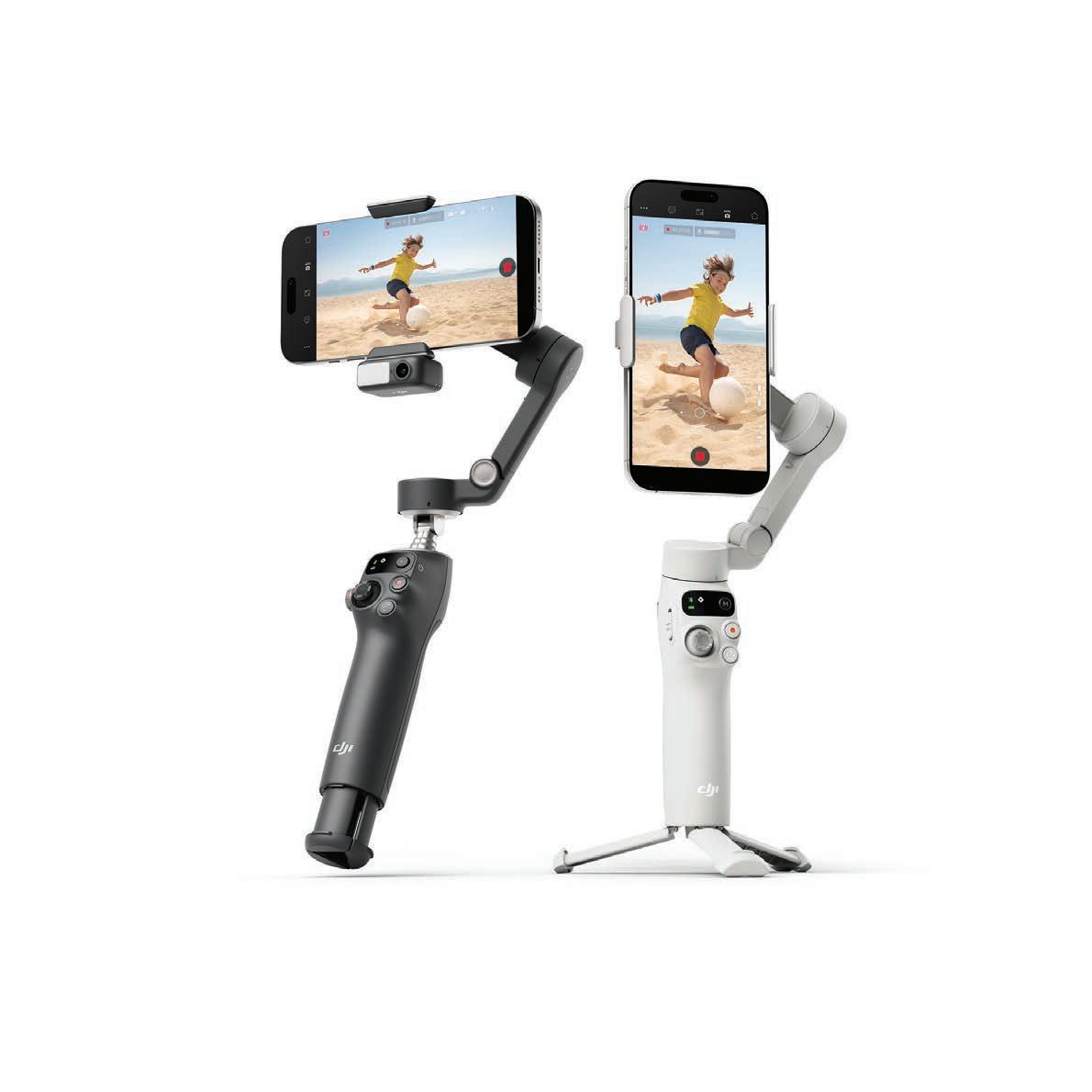
Make your to-do list easier to tackle (and maybe even fun!). Emmy Award winner Mario Armstrong has modern tech to help streamline your day.
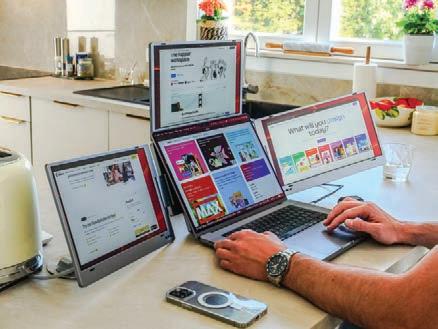
1/ A portable production crew.
Shooting content from your phone? You’ll want a gimbal— a stabilizing device that keeps your shots smooth and steady. And the DJI Osmo Mobile 7P Vlog Combo [$208; store.dji .com] is the newest, best option for casual creators.You can hold it or use it as a tripod. It can automatically track subjects to keep them in the center of the action, improve their appearance with a magnetically attached diffused light, and connect to a wireless mic clip.A hidden extension rod moves the camera nearly 8.5 inches away to frame selfies easily.
2/ A screen that spreads.



3/ A casual bag to carry formalwear.
4/ A tracker that’s easy to trace.
5/ The droid you’re looking for.
The Star Wars-themed Piaggio Fast Forward G1T4-M1N1 [$2,875; piaggiofastforward.com] will follow you around like a puppy—but it’s much more useful. It’s slightly larger than a 5-gallon bucket, and follows 3 feet behind you wherever you walk. Inside, there’s a 9-by-12by-10-inch cubby that can hold your gear (up to 20 pounds). You can track its 7-hour runtime, and stream music to it, from the app. But mostly, you’ll just be the envy of nerds everywhere. spreads.
You can’t carry a 32-inch monitor on the road—but you can carry the Aura Displays Triple Boost 14-inch Pro [$649; us.aura-displays.com]. It has three 14-inch HD screens that plug into your laptop with a single USB-C cable, and are designed to surround your laptop on three sides—but it folds down to something you can fit in a backpack. It sits on the desk using a built-in stand, and if you’re presenting, you can pivot the top screen down so everyone can see. Your content will autorotate.
Summer is the season for weddings and long weekends, but that shouldn’t mean wrinkled formalwear and a stuffy carry-on. The 53-liter Away Garment Duffle [$275; awaytravel.com] opens up flat, like a garment bag, to carry a suit or dress. Zip the sides up and it forms a pyramid, leaving empty space you can fill with folded shirts, packing cubes, and toiletries. Dedicated pockets hold shoes up to size 15. Now you can sidestep carry-on restrictions—and when you arrive, just unfurl the 4-pound bag and hang it from a hook.
Never lose anything again.Just slap a Chipolo Pop [$29; chipolo .net] on your keys, bag, phone, or whatever else. The Pop is an upgraded tracking device: It pairs with your Android phone or iPhone, and whenever you want, it makes a loud ringing sound so that your stuff is easily findable (almost anywhere on Earth!). It can also work in reverse: Double-tap the tracker to make your phone ring, even if it’s on silent, as long as you’re within 300 feet. Lost your device and your tracker? Just ask Alexa or the Google Assistant to ring the Pop for you.
They’re proving that mission-led brands can grow fast and stay rooted in what matters.

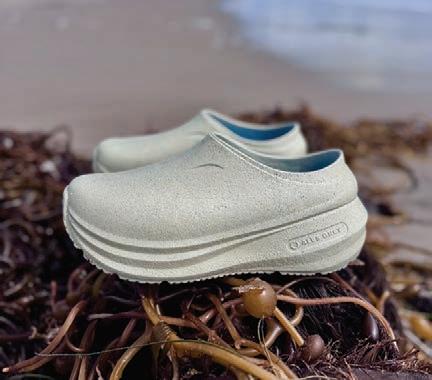
Clean kicks and cactus sips?
It might sound like the start of a dad joke, but it’s the growth strategy behind two thoughtful consumer brands. Meet the founders turning hydration and footwear into full-blown movements: Kun Yang, co-founder and CEO of Pricklee, and Steve Patiño, founder and CEO of Ales Grey.
Both brands are rooted in personal stories and inspiring missions. Pricklee is reimagining wellness beverages made with real food ingredients. Ales Grey is proving that sustainable, U.S.-made shoes can deliver lasting comfort. They are both supported by Entrepreneur Ventures and recently partnered with SHOPLINE, a fully integrated platform to power unified omnichannel e-commerce experiences. At a time when consumers want more from the products they purchase, these founders are offering a new blueprint for success.

Pricklee started with a simple frustration: why were so many “healthy” drinks still packed with artificial dyes, sweeteners, and hardto-pronounce chemicals? Kun Yang and his co-founder Mo Hassoun, both pharmacists at the time, thought of a solution. During Hassoun’s childhood, his family produced a natural drink made from prickly pear cactus, a hydrating, antioxidant-rich fruit that’s environmentally sustainable. Why not produce this drink at scale?
“We wanted to create a product we’d feel good giving our own kids,” Yang says. “And we saw an opportunity to uplift an overlooked supply chain at the same time.”
After hundreds of recipe tests and plenty of weekends at farmers markets, Pricklee launched in 2021. Their visibility was boosted by an appearance on Shark Tank.
Soon, the drink landed on the shelves of Whole Foods, Sprouts, HEB, and other natural retailers.
“We were obsessed with understanding our customers: what they cared about, where they shopped, what they avoided,” Yang explains. That feedback shaped everything from ingredients to branding and positioning.
The nostalgic family recipe is now a fast-growing wellness brand rooted in culture, science, and sustainability, with even bigger ambitions ahead—particularly online. Pricklee recently partnered with SHOPLINE to level up and support their next phase of growth
in direct-to-consumer sales. “It’s helping us simplify operations while telling a clearer story,” Yang says.

After three decades in global footwear, Steve Patiño wasn’t necessarily looking to build another shoe company. But the birth of his son changed everything.
“The company’s name is a promise to him,” Patiño says. “A vision to make the world a little less gray with less waste, less pollution, and more purpose.”
That vision became Ales Grey: a U.S.-based footwear company committed to high-performance, low-impact shoes made from algae bloom, a renewable material that doesn’t compete with food systems and requires almost no water waste to produce.
Each pair is molded in one piece, without glue or stitching, and is fully recyclable. Even the packaging is made from compostable seaweed.
Ales Grey now supplies shoes to REI, Nordstrom, and Amazon, and works directly with restaurant chains like Buffalo Wild Wings. Their go-to-market approach includes pilot programs with hospitality workers and event teams, testing the shoes in realworld conditions before scaling production.
“These are need-based products,” Patiño says. “When someone wears our shoes for 12 hours and feels the difference, that experience beats any ad.”
To support its growing retail and B2B footprint, the brand recently relaunched its website with SHOPLINE, enabling custom QR-code ordering and streamlined operations across teams. “We finally have a system that is fast, clean, and built for scale,” Patiño says.
“We’re passionate about empowering brands with a mission,” says Christopher Yang, co-president of SHOPLINE. “Partnering with Pricklee and Ales Grey has been incredibly inspiring—not only because of their innovative products, but because of the heart and purpose behind them. We’re proud to provide a platform that helps fuel their next phase of growth.”

MARCUS LEMONIS USED TO POUR ON THE LOVE. NOW IT’S TIME FOR STRAIGHT TALK. IS THIS THE EVOLUTION OF LEADERSHIP?
by JASON FEIFER

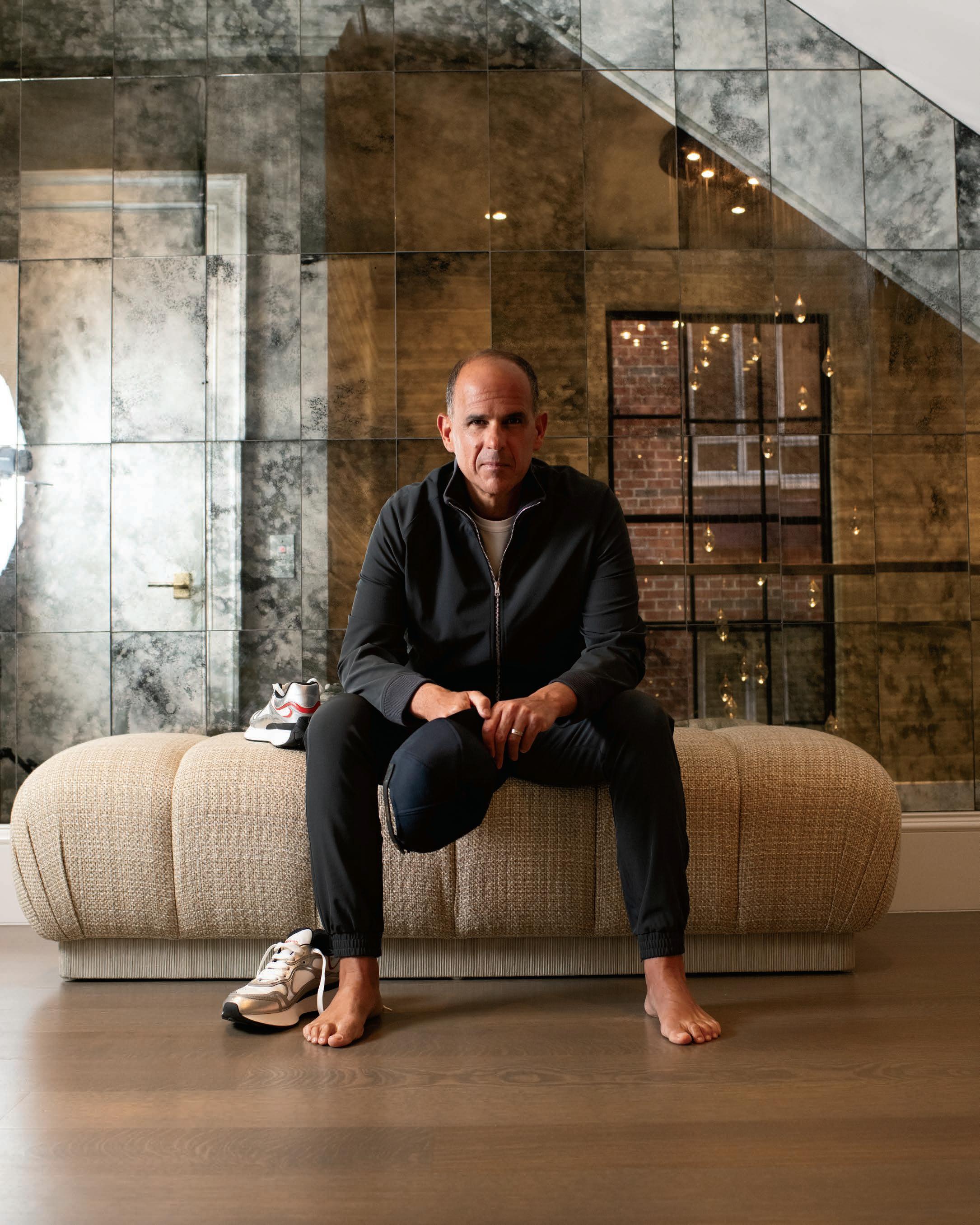

Marcus Lemonis came home feeling crummy. After eight years of hosting his hit TV show The Profit, in which he helped turn around struggling businesses, he’d just finished taping a show for HGTV called The Renovator—where he helped families with their home renovations. “I didn’t really like that,” Lemonis told his wife.
Then he asked her: “Why didn’t I like that?”
“Because people didn’t need you for that,” she replied. “They could renovate their own home, or they could get somebody else to do it. The world wants you to help them make more money, or fix their business, or crack the code to something inside them. And absent that, the world doesn’t really need you.”
This was 2022, and she was right—the show ran for only four episodes.
Lemonis is recalling this story as we sit in his living room, in an elegant townhouse in Manhattan. “It was a pretty harsh thing to say,” he says of his wife’s words. “But she was telling me: Don’t do something everyone else can do. Do what only you can do.”
When Lemonis said that, something hit me. “So,” I said, “what she was really telling you was: You have a function. Lean into that function.”
Leaders love having a mission. But they rarely think about having a function.
Consider the difference in those words. Mission is grand. Noble. Self-imposed. Great humans have missions, and those missions animate them. LeBron James said: “My whole mission in life is to speak for my people.” Maya Angelou wrote: “My mission in life is not merely to survive, but to thrive.” Mission, mission, mission.
Function feels different. It is flat and structural and unsexy. Just one part of a larger system. Machines, tools, teams— these things have functions. They are needed now but replaceable tomorrow. LeBron James and Maya Angelou do not speak of functions. No great human wakes up in the morning aspiring toward a function.
But what if it’s exactly what great leaders need?
And what if, like every great leader, Lemonis needed that reminder—of what makes him useful, and what does not, and
how that might change.
To the general public, Lemonis is best known for being on TV: The Profit ran on CNBC for eight seasons, and he is now returning for a FOX show called The Fixer, launching on July 18. But his true bona fides occur off camera, where he leads two big companies: Camping World Holdings, which he cofounded and grew into a $6 billion-plus business and where he serves as CEO and chairman, and Beyond, the recently renamed fusion of buybuy BABY, Overstock.com, and Bed Bath & Beyond, where he became executive chairman last year.
As Lemonis will readily tell you: He has no children, his parents have died, and he spends his waking hours obsessing over operational excellence. Business is literally his life, and, he admits, he tends to forget that other people live differently. Which brings us back to the whole function thing. What is Marcus Lemonis’ function?
Lemonis thinks about it for a moment.
“I used to function as a therapist,” he says. As both a TV host and a business leader, he would ask thoughtful questions and deliver regular affirmations. He really likes people. He is warm and engaging. He wants people to feel good. He wants them to succeed. But in the past few years, his approach has changed. The way he treats people now surprises him. “I am very difficult to work with,” he admits.
Like how? Well, he says: “Have you ever been in a meeting that doesn’t end on the highest note, and then you leave the room, and you know everybody’s now talking about you? And they’re all like, ‘Fuck him’?”
Yes, I say. I do know that.
“That happens a lot more now,” he says. Marcus turned 50 in late 2023—and, like many people who hit that milestone, his own mortality started to come into view. He now feels time pass faster, ever faster.
“I know that my time in certain businesses isn’t forever,” he says. “So I’ve come to a conclusion. In the past, people would see me as a successful businessperson based on today’s results. But I don’t believe that to be as true as I used to. What I believe now is: If the business can be successful without me, that is the determiner of whether I was a good leader. It’s like, what happens when I’m gone? That is how I will be judged.”
This is now his function, he’s decided. Unlike before, it is not to profit, or to renovate, or to fix. It is to prepare. To prepare others to succeed without him.
I FIRST MET LEMONIS in 2016, when I’d just started working at Entrepreneur. (I’m now the editor in chief.) We hosted an event at a fancy hotel in Scottsdale; I was the opener and Lemonis was the headliner. It was the first time I’d ever keynoted to a roomful of entrepreneurs, and I was deeply nervous. I dressed in a suit, even though I hate suits, to mask my feeling of being an imposter. I tried to talk myself up, to prove to the audience that I belonged.
Then I watched Lemonis casually stroll on stage after me, and do the exact opposite.
He began with a short version of his bio: He was born in Beirut during the run-up to the civil war, and was left at an orphanage at four days old. He was adopted by a couple in Miami, Florida. He was an only child who struggled to fit in—“an awkward child who turned into an awkward adult,” as he often says. Business became his refuge, the only thing that made sense to him. Then he basically told the audience: Look,
as extreme as I can, so that people almost think to themselves ‘Well, my life’s fucked up just like his.’ And then people are less judgy, and they’re more open to talk.”
This isn’t just a good presentation trick, he says. It’s also a good leadership strategy. To get the best out of people, you must connect as people. Great leadership, he believes, “starts with the acknowledgement of what you’re not good at.” A leader must recognize those things, and then surround themselves with people who are better. “Once you can accept your deficiencies,” he says, “it will allow you to home in on your strengths and double down on them.”
I ask Lemonis what he’s good and bad at. He gives me a list.
He is bad at details, at waiting for things to evolve, at giving people space, and at testing. His instincts are to go all-in on ideas, not sit around waiting for preliminary results. “So I need people around me who are strong enough to say,
whatever. Now here’s the point: “Draw yourself where you see yourself on the mountain,” Lemonis says.
In most cases, Lemonis says, people draw themselves in the middle or at the top. He asks them why. If they’re in the middle, they’ll say: I’m not where I want to be. If they’re at the top, they’ll say: I’ve achieved everything I want
To which he then replies: “What if you just thought about yourself at the bottom of the mountain? And what if you thought that your role at your company, in your business, in your family, or in your community, was to help everybody else get to the top? And that your job is to ensure that everything down at the base is safe, and that when shit rolls downhill, it rolls on you? And that when the flag gets posted at the top, you see other people do it? You don’t need to be at the top of the mountain anymore. And maybe the best leaders are the ones that want to get everybody else to the top of the mountain.”
“MY
WINNERS HAS ELEVATED TO A NEW LEVEL…THAT I THINK I NEED TO PROBABLY TEMPER A LITTLE BIT. I GET TO THE POINT QUICKER, AND THAT IS A LOT FOR PEOPLE.”
I’m flawed, but I’m here to help. What’s on your mind?
People opened up. For the next hour or so, he basically ran a group therapy session.
I’ve followed Lemonis’ work ever since. I’ve heard him on many podcasts, seen him on TV, and noticed that he always does that same thing—starts with his biography. So now, nearly a decade later, as we sit together in his home, I ask him why. “The more I reveal about myself, the more you’ll reveal too,” he says. “I try to make it
‘That’s a terrible idea,’ or ‘We could try that, but not today,’” he says.
And what’s he good at? Driving hard. Ideas. Vision. Finding people, promoting them, and making them better.
When Lemonis talks to people about leadership, whether it’s from a stage or in a more intimate meeting, he often invites them to draw a mountain.
Try it for yourself. Grab a piece of paper and draw a mountain. Doesn’t matter what it looks like—it might be a round hill, or jagged with peaks and valleys, or
This is not how Lemonis always thought. It’s not how most people think. He became the CEO of his first public company at age 25, and thought he needed to stay at the peak, where leaders belonged. “That was all wrong,” he now says. “What matters is how everybody else gets there. Does the company get there? Do the employees get there?”
Here’s another metaphor he likes: the army. If you’re going into battle, where is the leader? Many leaders think they should be at the front, leading the charge. But you know what? “You could die first, and then everybody’s screwed,” Lemonis says. A great leader is actually behind the troops—keeping them safe, observing their speed, making the adjustments.
“I’ve convinced myself that my role in life is to get the best version of everybody out of themselves,” he says. “And if I don’t get to the heart of the problem fast, the chances of me being able to extract the best version of them is limited.”
And that has created a conflict. Because sometimes, getting to the heart of a problem means hurting some feelings. Lemonis doesn’t want to be a jerk. But increasingly, he’s willing to.
FOR A MAN AS BUSY and successful as Lemonis, he has surprisingly few barriers around him. He has no big publicity
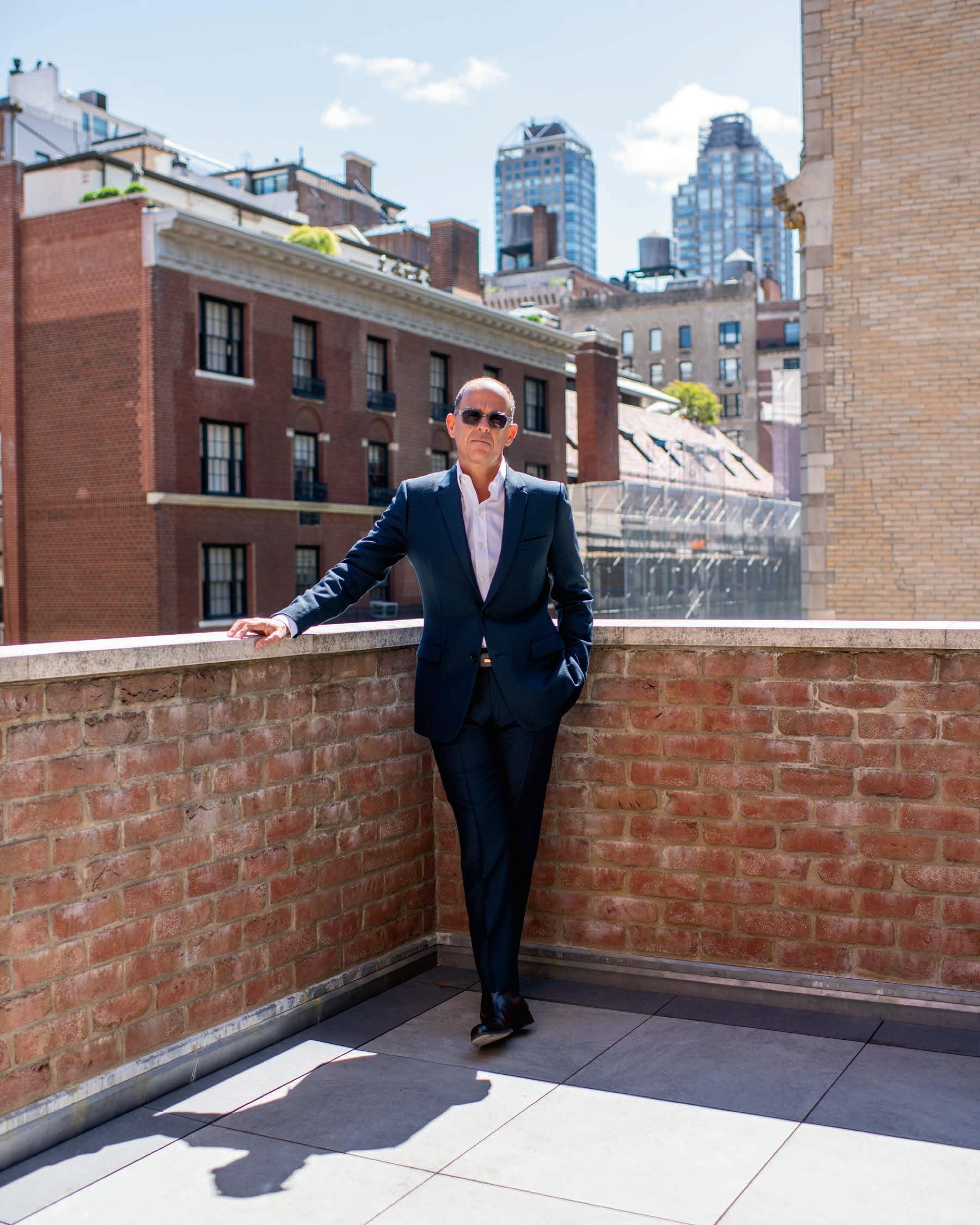
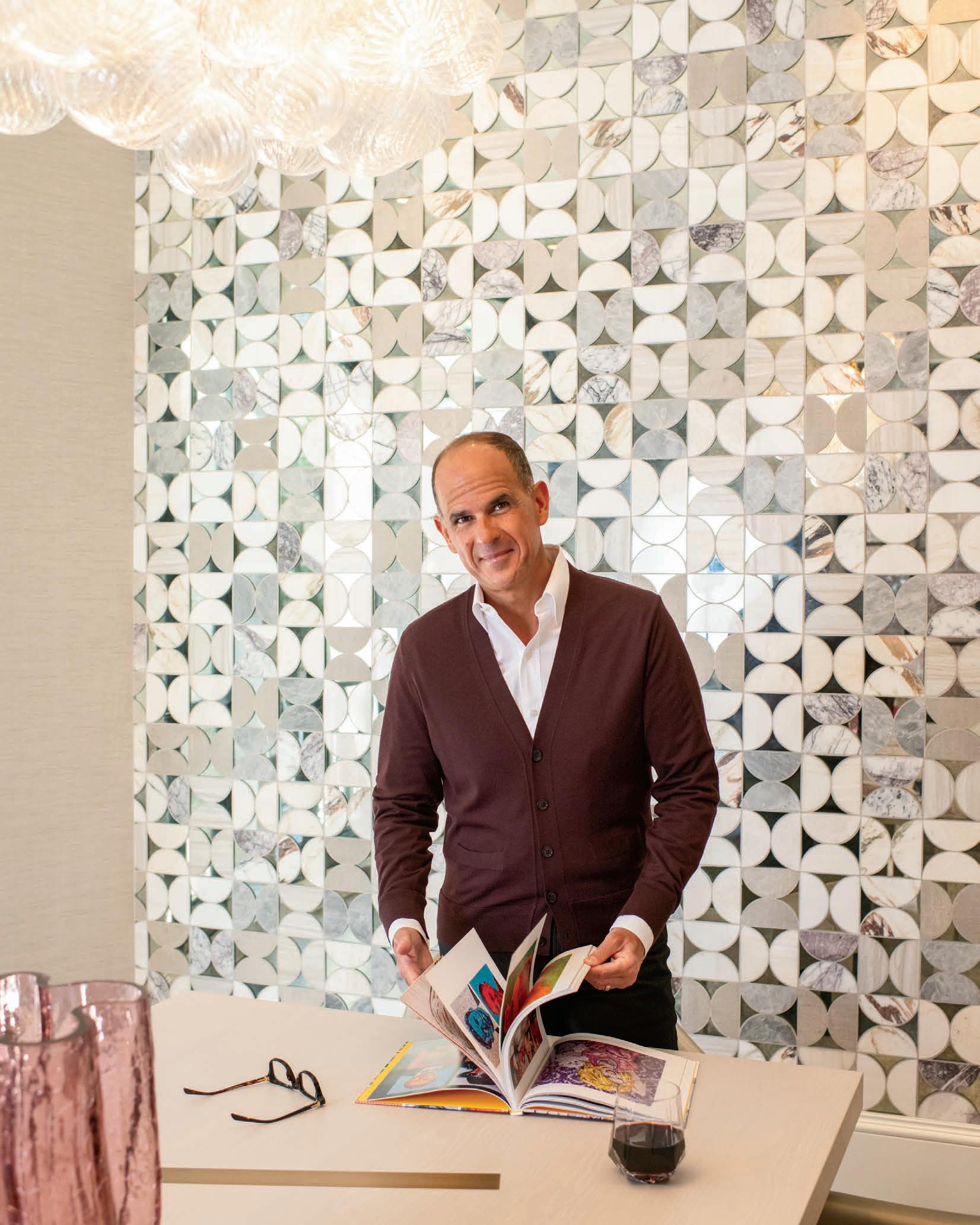
team. No entourage. His phone buzzes constantly, because everyone seems to have his number. (He gave it to me, too.) This is his way. He is disarming. At some point, he walks us into his kitchen, opens a cabinet, and there is a world-class collection of snacks in there. All neatly organized in glass jars. Have whatever, he tells me. He starts eating gummy worms.
“I love people. I love learning from people,” he tells me. And this is why, as he turned 50, he was surprised at how differently he interacts with people. He now
keeps conversations shorter. He is more direct. He has less tolerance for slowness or bad ideas or people’s feelings.
“It’s the balance between light and dark,” he explains.
The what?
“The proper balancing of light and dark,” he says, “is something that I’ve learned over the years—where there’s a necessity to tell people how shit really is, but to also give them credit for the stuff that’s really right.” If he’s speaking to a direct report, for example, he might need
to explain how they failed at something. In the past, he’d also spend a lot of time complimenting them, or hearing them out, or asking gentle and thoughtful questions.
But since turning 50, his balance has been shifting: Less light, more dark. “I spent too much time in the past fluffing people up, and in some cases embellishing, before I got to the point,” he says. “But I noticed that, in the last 12 months, my patience for whiners versus winners has elevated to a new level— to a level that I think I need to probably temper a little bit. I get to the point quicker, and
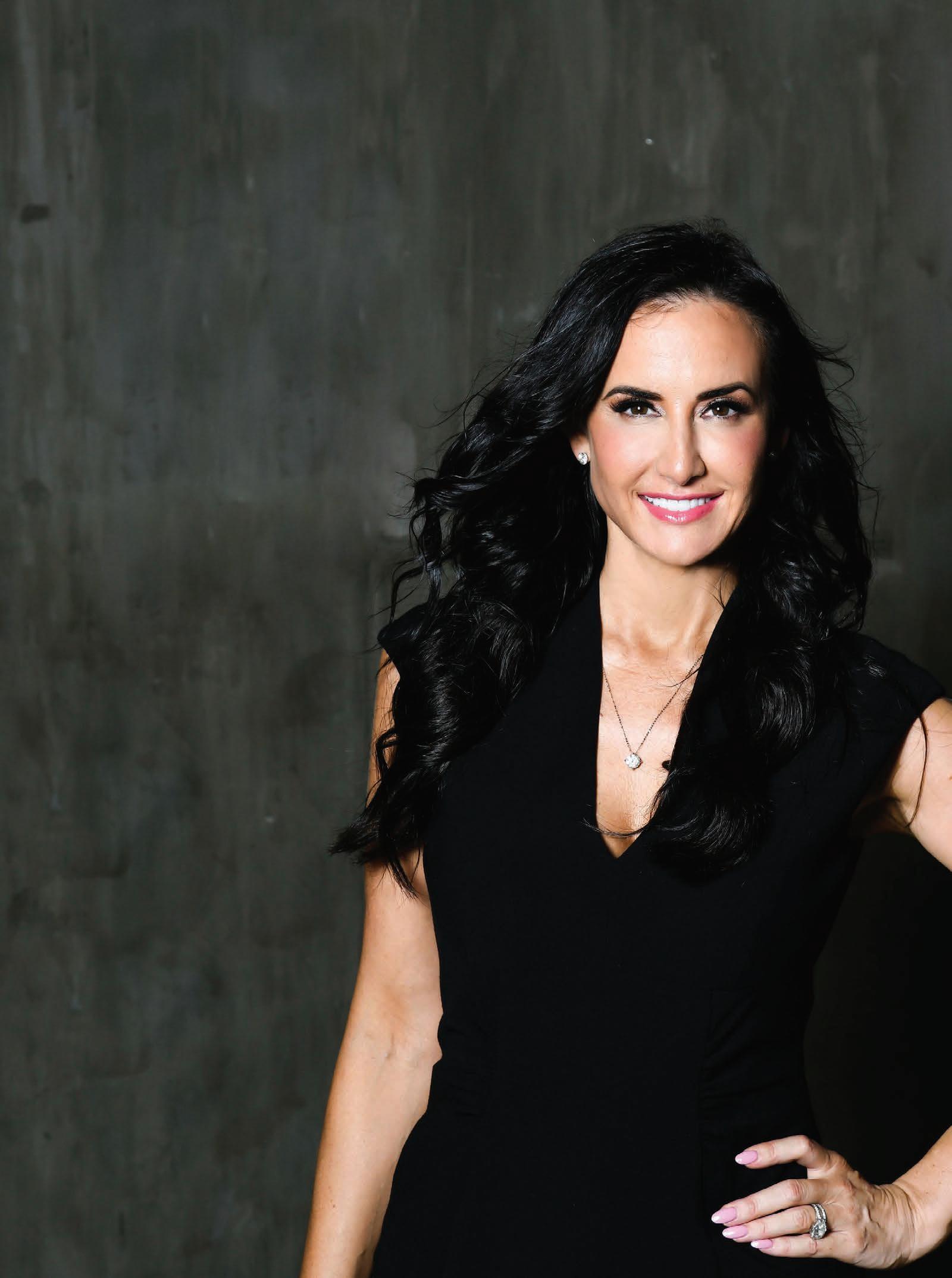








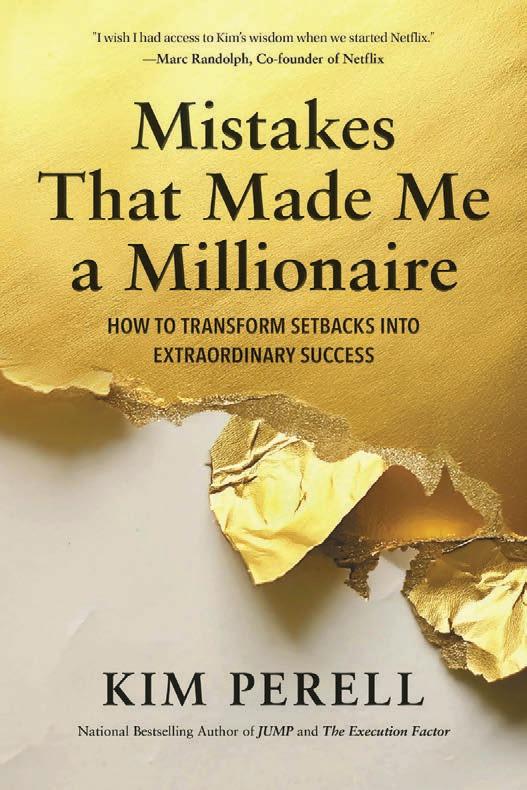











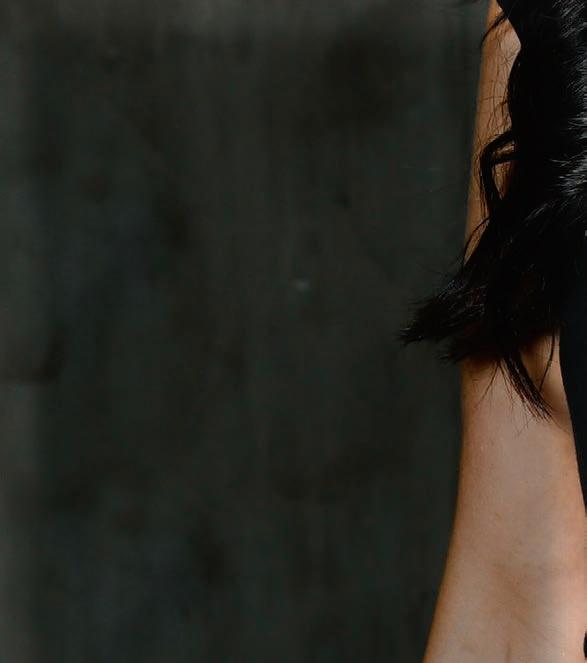




that is a lot for people.”
For example, let’s say he’s in a meeting at Beyond. Something isn’t working. Someone starts explaining why they’re doing it this way, or how it used to be done, and Lemonis will stop them. If it’s not working today, then what happened yesterday is irrelevant to him. He wants to know what drives results now. No time for light. Only darkness.
He grapples with how contradictory this feels. He’s always pushed people, yes, but with love and care. He is a people person! But mortality is inarguable. “I started to recognize—and this is gonna sound crazy—that my time on earth is limited,” he says. “And my ability to influence the outcome is limited, and my time with them, because I’m busy, is limited, and I just need to get to the fucking point.”
Even if it makes him a jerk. Even if someone dislikes him for it. Even if they never talk to him again. “Because I don’t think people will ever push themselves as hard as I’ll push them,” he says. “I’ve accepted the fact that I may never have an ongoing relationship with them. But when they achieve what I knew they could, that they didn’t think they could, will they look back and have a morsel that’s like: ‘That guy’s a giant asshole, but...’
“‘I never want to see his face again, but...’
“I am here for the but,” he concludes.
Remember earlier, when he said he’s walking out of more meetings knowing that everyone in the room is pissed at him? That they’re all basically thinking, Fuck Marcus? Truth be told, he’s enjoying that.
“Like in any good comic book, they all band together against evil. I am the common enemy,” he says. “So I can help my team band together and build a fortress around themselves, and learn how to stick together, and learn how to be better together and make the team. They don’t realize that there’s a strategy here.”
I ask Lemonis: If this is now part of his function, does he view it as the sacrifice of leadership?
And here’s why I ask: Leaders often frame leadership through the lens of sacrifice.
I’m reminded of a conversation I had with Whole Foods cofounder John Mackey, who was CEO for 44 years. He said he attributes his longevity to one primary thing: He kept asking himself, What does the company most need me
to do now? This meant constantly reinventing himself, taking on roles he did not love, for the betterment of the company. I heard a similar thing from Sean Tresvant, who became CEO of Taco Bell. His background is in marketing—so when he became CEO, he said, “Much to my chagrin, I wasn’t in charge of marketing anymore, and I had to learn that. I had to appreciate that.” And he had to let it go.
In these views, leadership is about doing what’s needed of you—even if it runs counter to what’s comfortable
language they use to promote watches. “I could help you guys with this if you’ll just actually set up the time and they’ll just execute,” he says. “Like, every idea I have is not gonna be a good one, but most of them are gonna work.”
I can hear the guy on the other line, who seems to be furiously taking notes. Lemonis puts him on mute for a moment, then turns to me.
“So this is a young guy that nobody wanted to push,” he says. “We fight all the time because I push him. Now he’s
“IF THE BUSINESS CAN BE SUCCESSFUL WITHOUT ME, THAT IS THE DETERMINER OF WHETHER I WAS A GOOD LEADER. IT’S LIKE, WHAT HAPPENS WHEN I’M GONE? THAT IS HOW I WILL BE JUDGED.”
for you. It’s also the central tension of Batman, Spider-Man, and basically every hero story. And isn’t that sacrifice?
“I wouldn’t use that word,” Lemonis says. “I don’t see myself ever sacrificing. I see myself looking for fulfillment.”
Sacrifices are for people who want one thing, but who must settle for another. Fulfillment is for people who identify their function, and who then give everything to it.
LEMONIS HAS TO GO. He’s due downtown at a TV studio, where he’s filming some final shots for his new FOX show. So we leave his townhouse and hop into an Uber, where he catches up on some work.
He calls a guy at Beyond, and starts talking about their upcoming Memorial Day marketing strategies. Lemonis gets granular. He’s talking about what products to feature. Suggesting how to style the “O” in “Memorial.” Tweaking the
exhausted by me.”
Lemonis says this like it’s a good thing. Which, by his logic, it is: His function is to push. To be pushed is to be exhausted. To be exhausted is to be on the path to excellence. That path is good for this young guy, and good for the company, and therefore good for Lemonis too, because it means that one day this guy (and this company) won’t need Lemonis. Which is good because, one day, Lemonis will be gone.
But for now, at least, we are all here— him, and me, and you. We go up a mountain, and we come back down. We lead an army from the front, then we revert to the back. We spend a lifetime searching for where we belong, and how we are most useful, and why we will matter to others, only to realize that the answer was always ours to define.
Jason Feifer is the editor in chief of Entrepreneur magazine.
Serbia’s economy has been gaining strong momentum in recent years, driven by robust investment, infrastructure expansion, and rising foreign interest. According to the World Bank, Serbia’s GDP is projected to grow by 3.5% in 2025, supported by sound macroeconomic policy and infrastructure-driven development. Deloitte’s latest regional outlook emphasizes Serbia’s improving investment climate and its growing role in logistics and industrial networks. The country is quickly transforming from a stabilizing post-transition economy into a dynamic engine of regional growth.
One of the key engines behind this growth is Serbia’s construction sector. With largescale infrastructure projects underway, the industry is seeing a new golden age. The Serbian Construction Chamber reports that the sector grew over 5% annually in the past three years, fueled by projects like EXPO 2027, new urban developments, road and rail investments, and the long-anticipated Belgrade Subway. This growth trajectory is attracting both domestic champions and international players, all looking to capitalize on a market that blends long-term opportunity with technical complexity.

Miloš Hranisavljević CEO
At the forefront of this construction renaissance is Novkol, a company that has quietly become one of Serbia’s most trusted names in foundation engineering and complex geotechnical works. Established in 1997 by three engineers emerging from the defunct state company “Novi Kolektiv,” Novkol has grown into a critical partner on many of the country’s most important infrastructure projects. From the foundations of the Belgrade Waterfront to the excavation and groundwork for the future Belgrade Subway, Novkol is deeply embedded in Serbia’s transformation.
What sets Novkol apart is its specialization in sophisticated ground engineering techniques, especially in a region with challenging terrain. Belgrade, built between the Sava and Danube rivers, presents geotechnical difficulties due to its sandy and clay-rich soil. Novkol has developed and implemented advanced technologies like CFA (Continuous Flight Auger) piling and jet grouting—often being the first in the region to do so. In 2004, Novkol introduced the first CFA machine in the Balkans, a move that marked a turning point in its technological development.
“Our strength lies in understanding the terrain and applying the right technology at the right time,” says CEO Miloš Hranisavljević. This forward-thinking approach has enabled Novkol to remain ahead of regional competitors and continuously expand its project capabilities.
The company’s growing portfolio speaks for itself. Novkol has been a core partner in the Belgrade Waterfront project—a massive mixed-use development on the Sava River—and has also worked on the National Stadium, TPP Kostolac, and the reconstruction of the NIS industrial complex. Its most ambitious project to date, however, is the Belgrade Subway.
Expected to be the largest infrastructure project in Serbian history, the Belgrade Subway presents a unique technical challenge. “All the stations
are going to be massive foundation pits, and the infrastructure below the city needs major adaptation. It’s going to be years of hard work and careful planning,” says Hranisavljević. The company is already preparing by investing in a new cutter soil mixing machine, set to arrive in June 2025—an indication of Novkol’s commitment to innovation and performance at scale.
Beyond technical expertise, Novkol’s strategic vision is focused on growth through collaboration. The company is actively seeking joint ventures and strategic partnerships to strengthen its execution capabilities on complex, large-scale projects. “We are open to forming a joint venture or even selling a part of the company if that helps us grow into the next chapter,” Hranisavljević explains. With prior experience working alongside global firms like Vinci, Novkol is no stranger to international collaboration and is ready to scale up further. With its central location in the Balkans and strong logistical links, Belgrade serves as an ideal base for companies targeting regional markets—from the former Yugoslav countries to future reconstruction efforts in Ukraine. Its strategic position enables efficient access to key Southeast European corridors and makes it a natural hub for cross-border operations.
Novkol’s investment case for potential partners or investors is compelling. The company combines deep local expertise with a clear understanding of global standards. It has a proven ability to manage risk in high-pressure environments and has successfully delivered on both public and private sector developments. From heritage sites like the Rajićeva Shopping Mall—built in a historically sensitive part of Belgrade—to the technically demanding Belgrade Tower, Novkol has shown versatility and reliability.
Importantly, Novkol is also future-focused. Its internal restructuring, professionalization, and emphasis on developing young engineering talent position it well for sustainable growth. The company continues to build its capacity not just in machinery and techniques, but also in organization and leadership.
For foreign companies looking to enter the Serbian construction market or participate in the wider regional boom, Novkol offers an ideal local partner. The company brings the technical know-how, logistical infrastructure, and local credibility required to navigate complex regulatory and engineering environments.
In a country where infrastructure is at the heart of economic strategy, Novkol is both a contributor and a symbol of Serbia’s forward momentum. As new roads, stadiums, towers, and subways reshape the national landscape, Novkol stands firmly at the foundation—both literally and figuratively—of Serbia’s next chapter.


Common wisdom says to lean into your strengths. But as a psychologist and leadership coach, I’ve seen how often that becomes a problem—and how to fix it.
by MARTIN DUBIN
For successful people, there’s nothing more confusing than failing when you gave it your best. You leaned on your tried-and-true personality traits—the ones everyone agrees are your “superstrengths”— and yet, things fell apart. Fortunately, when this happens, there’s a fairly common diagnosis: You have encountered a blind spot.
As a clinical psychologist turned business coach, I’ve spent years honing my intuition to recognize when previously successful leaders, executives, or entrepreneurs were getting in their own way, and to come up with tailored solutions to help them. What I’ve learned is that we are not as self-aware as we believe.
We tend to feel as if most of our traits, instincts, and feelings are like everyone else’s—except for where we see ourselves as exceptional or gifted, in ways that we imagine can only serve as a positive. And when I began as a coach and started to hear people talk about the strengths and weaknesses of the people they work with, I took their answers at face value. If an executive was praised for their confidence, I’d make a note of it, and look for other areas that might need to be worked on instead. After all, strengths are good, I reasoned. It’s the weaknesses that we need to worry about.
But after a little while, I started to notice a surprising pattern. Often, if an executive was praised for his confidence, that same reviewer might also mention his arrogance. The friendly extrovert would have trouble leaving people alone to do their work. The same individual would be described as both persistent and stubborn—and the more persistent she seemed to be in some people’s eyes, the more stubborn she seemed in the eyes of others. The visionary would have trouble with execution. The understanding boss was quick to agree with everyone, leaving no one quite sure where they stood. The calm, unflappable CEO never signaled when he was upset, causing people to guess what bothered him. The curious, out-of-the-box thinker seemed to get easily distracted by something shiny and new.
My realization: Strengths are not unqualified positives. Instead, our challenges often emerge from investing too heavily in our strengths—the “superstrengths” become supernovas, and tip into qualities that frustrate people around us and get in the way of our
success. My attention to detail might feel to others like micromanagement; an orientation toward action can look a lot like a lack of strategic thinking; conscientiousness becomes perfectionism; critical judgment becomes a lack of interpersonal sensitivity.
And because these strengths are often the qualities we are most proud of—the things we like best in ourselves and have heard positive feedback about over the course of our lives—the idea that they can become our biggest weaknesses is a serious blind spot. I call it a “trait blind spot.” Most of us simply won’t be able to see when it happens.
Esther was a great example of this. She was the CEO of a small pharmaceutical company, and had taken over from its scientist founders. The board loved Esther; she had an incredible reputation as a conscientious and careful leader, and she seemed like the natural choice to steer their company through an IPO and beyond.
But nine months after Esther was hired, the board chairman called me with concern. “Growth has been surprisingly slow,” he told me. “We brought in this new sales guy. And it’s helping, a little. But the sales guy keeps telling me we need a new CEO. We like Esther and want to make it work. Can you figure out what the problem is?”
I reached out to Esther to set up a meeting. She asked if I could connect her with a few references—perfectly appropriate and reasonably commonplace. Two weeks passed before I followed up. Esther said she still hadn’t had a chance to reach out to one of the references. Another three weeks passed, and I figured this was never going to happen.
Until, to my surprise, she reached out and said we were good to get started.
Two weeks later, Esther and I met at the international terminal
The Chilean economy has resumed its steady growth path, while inflation has fallen, according to the OECD, a grouping of affluent countries.
The organisation expects “solid” growth through 2025 and 2026, with an improvement in financial conditions spurring investment growth, with the crucial mining industry attracting significant capital as demand for products such as lithium rises.
Chile is a world leader in aquaculture, with output of more than 1mn tonnes and ranking as one of the world’s largest producers of salmon, with exports worth nearly $4.4bn, according to industry conference Aquasur. In recent years, salmonids have ranked as Chile’s secondlargest export, after copper; they accounted for 6% of all export income in 2024. The country exports to more than 100 countries worldwide.
Terramar Chile is a leading global supplier of sustainable proteins and lipids for the aquaculture industry, supplying Chile’s thriving high-quality salmon sector among other clients around the world, through a rigorous food safety process. While 100% Chilean-owned, it has branches in France, Ecuador, Vietnam, and the United States. Terramar has two product areas: dry-based proteins (flours) and lipids (oils). In this regard, it operates the first plant in Chile that homogenizes different types of oil to ensure its products meet the quality and standards required by each customer in their specific formulations.
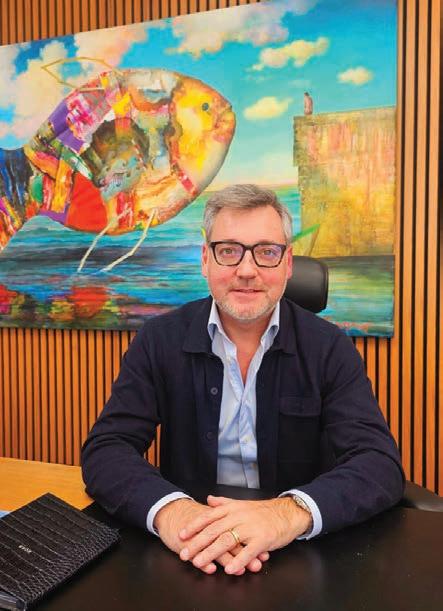
Rodrigo Díaz Cruzat Executive Director
“We specialise in the salmon segment in Chile, the shrimp segment in Ecuador, marine species in Southeast Asia, and are developing products for aquaculture in Europe,” says CEO Rodrigo Diaz. “We also provide products to the pet food industry. We are very concerned with innocuity, and that our clients are provided with sustainable raw materials that are viable for the healthy growth of the animal, meeting the standard the end consumer requires. We do not refine products, but homogenise and deliver a standardised product, with 100% traceability of raw materials. The key words for me are innovation, sustainability, and quality.”
Terramar dates back to 1980, when Díaz’s father, Gonzalo Díaz, began marketing fishmeal (aquaculture). Since then, it has been dedicated to supplying the raw materials needed for animal feed, cultivating and diversifying its products, and contributing to the introduction of new protein sources to the market. In 2020, Terramar opened a new plant in the Biobio region that offers a unique homogenisation system for the different oils required to feed fish; salmon have a diet of up to 40% lipids. The plant has distribution capacity of 1200 tonnes of oil per day, blended however the customer requires. Strictly speaking, Terramar uses a homogenization process, NOT a refining process, which allows it to process a wider range of higher-quality products through a considerably more sustainable process, a fundamental aspect of Terramar’s business model.
The company has been growing strongly internationally in recent years – indeed, it has been growing even more quickly than Diaz had anticipated; yet he emphasises that expansion must be confident and step-by-step.
“This growth means that the industry has recognised us, which has motivated us to continue growing, dedicating a lot of effort and human and economic capital,” he says.
While continuing to build its industrial base in Chile, the company is focusing on expansion in Europe over the next three to give years. It has invested in a plant in France with French agrifood business LDC Group, Europe’s largest producer of poultry meat, and sees potential for further partnerships.
“It has been a very good relationship with LDC,” says Diaz. “I like the idea of having partners who are strategic collaborators and can contribute as much as we do to the industry we are focused on.”
Diaz and Terramar put a strong emphasis on the team they have assembled. In a sector in which innovation and precision are so important, the significance of having the best people cannot be overstated. The CEO emphasises that he will seek out partners who recognise the importance of human capital development
“I find the people we have are the best there are in what we do,” says Diaz. “It’s super-important that the people I have, have a vision of growth. The people we have today, that we have developed, are like my family.”
Terramar’s strengths reflect those of its home country – innovation, high skills, an openness to the world, and a collaborative approach. Chilean salmon, like many of its products, meet the high standards of quality, sustainability, and traceability that are increasingly demanded by discerning global customers. Diaz argues that Chile must articulate these strengths more clearly around the world.
“We believe that Chile potentially has a very powerful brand and it has a lot to show abroad, especially in sustainability and, more broadly, the top-notch quality of Chilean products,” says Diaz. “On the other hand, we have to be better at exporting our products and promoting them. We are extremely competitive. Our human capital is excellent, we have great universities and sophisticated technicians specialised in different sectors. We have a very stable economy, political stability, and we make sure that investors are very well taken care of. And what makes Chile stand out is that, that no matter who is the head of the government, we as businesspeople have always engaged in dialogue with the government, to solve problems and deliver for our country. That is key.”
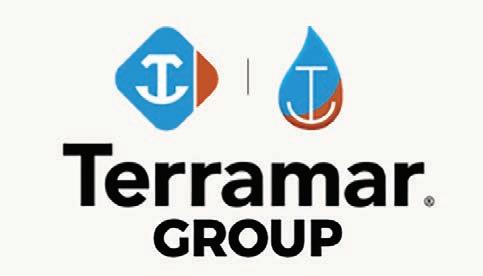
in the San Francisco Airport—the only place and time that worked for both of us. It was not an ideal location for a substantive meeting, but I was able to explain my process—interviews, testing, a report, a plan. She seemed amenable, and I found her to be pleasant and polite. No red flags.
Except the pace of the follow-up remained glacial. Esther gave me limited access to her team, making the process slower than normal. She also kept putting off her testing. When I had gotten about three-quarters of the way through the process—now a full three months after I had initially reached out to her—the board chairman called me and asked for a progress report. “Do you think she can get better?” he asked.
“I hope so—but I’m not sure. I have to admit, I haven’t even begun coaching her yet.”
“You’ve got to be kidding.”
I paused for a beat. “I’m sure Esther is coachable, I just—”
He cut me off. “I think you’ve given me what I was looking for,” the chairman said. “We’re going to let Esther go. She’s great, but just isn’t a fit for a startup. We have to move fast, and, like you’ve seen, she can’t.”
This was a perfect illustration of how a superstrength can also become a deadly blind spot. Esther prided herself on being cautious and deliberate, which were useful traits in her old role. But her new role required something else. By being cautious and deliberate now, Esther was failing. She couldn’t see the problem, because it had never been a problem for her before. With awareness and a plan, she could have fixed this. But she ran out the clock, and her extreme traits cost her the career opportunity she’d been so excited to earn.
Because there are a seemingly unlimited number of traits we might possess, it takes some focus to figure out which ones are most likely to lead to blind spots. I’m sure many of you have taken personality tests—Myers-Briggs, Enneagram, and others. While these tests are fun and yield findings that are interesting to explore, the Big Five traits (see table below) are a particular set of traits that have been developed and refined by research psychologists over the past 70 years.
Numerous teams of investigators, using robust statistical methods, have agreed that these five traits show remarkable stability throughout our lifespans and across cultures and contexts, and are orthogonal to each other, or statistically independent. This makes them a good place to start in any discussion about traits—and trait blind spots.
Psychologists believe that a bell curve exists for each of these traits. Many of us are somewhere in the middle—somewhat extroverted, not too extroverted—but some of us fall on the extremes, and that is where we run the risk of falling victim to a blind spot on the opposite side. What do I mean by that? You think your superstrength will always be the right approach, even when it isn’t. If you are very extroverted, you will be at a loss when being introverted would be the optimal trait for a particular situation. If you are extremely open to new experiences, you won’t adapt to a situation where what’s needed is deep focus on one domain.
A client named Mila, for instance, had experienced an exceptional rise at one of the most successful B2B companies in the world. She was known in the industry as a rock star: super smart, incredibly driven, and a key leader with a legendary ability to focus and quickly devise elegant technological solutions. Expectations were high when she jumped to a prominent startup and found herself elevated to CEO after an unexpected resignation. The marketing team was delighted to get Mila’s name out in the world even further, wanting to book her as a keynote speaker at conferences around the globe. The technologists couldn’t wait to see one of their own shining in a broader, more public-facing role. The sales team was thrilled to have her in the top spot at the company, because they knew her name would mean something to customers, and bringing her in to help close deals would give them a competitive advantage.
That is not how things played out. Mila was aware when she took the job that she was quite high in conscientiousness—she was, like Esther, slow and deliberate at times. She liked to spend time holed up in her office working through problems, and her previous role made it possible for her to do that. But unlike Esther, she knew that wouldn’t work as a CEO. She was pragmatic and had a strong bias to action, so she forced herself to act more quickly, to rely on her team, and to make big decisions on perhaps less data than she might have hoped for.
Extroversion/ When someone finds energy in the company of others (introversion—comfort being alone—is on the other side of the spectrum)
Openness to experience/ Curiosity and an eagerness to do and learn new things (as opposed to someone who thrives on routine)
Accommodation/ Agreeableness and trust (while people low in this trait are comfortable with disagreement and in environments where they may have to play politics or manipulate others)
Conscientiousness/ Discipline in the pursuit of goals (with relaxed spontaneity and a willingness to multitask at the other extreme)
Neuroticism/ Anxiety and irritability (as contrasted with an even mood and generally sunny disposition)
Still, the role of CEO has few day-to-day requirements, and is shaped by the person who occupies it. There were more decisions to make than in her previous role, and even with her conscious effort to speed up, she still found herself wanting more time alone to focus, recharge, and think. She was friendly and charismatic when forced to interact, but left to her own devices, tried her best to keep her schedule free of what she saw as social distractions. She told her team, “There’s lots of work to do, and I need the time to do it.”
There was no one to force Mila to add things to her schedule that she would rather avoid. So as much as possible, she sidestepped what made her uncomfortable. Salespeople had to ask her again and again to come to a closing to answer a client’s questions, or even just to say hello and lend some of her star power to the transaction. The marketing team got her to agree to just one keynote when they wanted to book her for a dozen.
One-on-one, Mila was warm and caring, but she did not take advantage of opportunities to rally the team in big ways, to give inspiring speeches, or to stand in front of them as their fearless leader. She became almost an invisible presence. Her internal leaders were frustrated that they had to spend time convincing Mila to do the things that they thought she should have naturally
Uruguay is emerging as a compelling economic success story in Latin America, boasting consistent growth, strong institutions, and investor-friendly policies. According to the International Monetary Fund (IMF), Uruguay’s GDP is forecast to grow by 3.7% in 2025, driven by a stable macroeconomic environment and improved investment flows. Deloitte highlights Uruguay as a “regional beacon of governance and transparency,” while the World Bank ranks it among the most business-friendly economies in Latin America, supported by a robust legal framework and prudent fiscal management. For international investors eyeing long-term stability and opportunity, Uruguay offers a uniquely fertile ground.
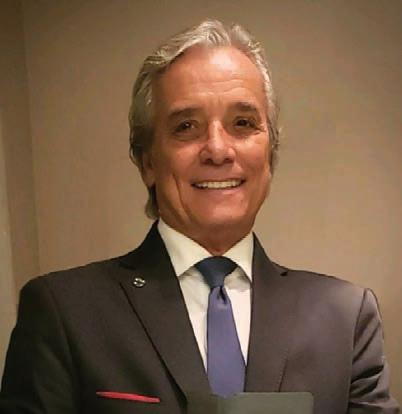
Néstor Gómez Alcorta CEO
One of the most promising yet underexplored sectors in this thriving economy is the chemical industry. While not the largest industrial branch in Uruguay, the chemical sector holds vast untapped potential. Mr. Néstor Gómez Alcorta, CEO of EFICE and a veteran board member of Uruguay’s Chemical Industry Chamber (ASIQUR), sees a bright future: “There are many opportunities for the chemical industry to grow. And not only in Uruguay—I am convinced that the chemical industry is going to grow significantly worldwide.” The chemical sector’s ability to integrate with everything from healthcare and sanitation to construction and agriculture makes it essential for modern economies, and Uruguay is positioning itself as a future leader.
At the heart of this transformation is EFICE, a Montevideo-based, family-owned company with more than a century of history and a legacy of firsts. Founded in 1925 by Domingo Giribaldo (Nestor Gómez Alcorta’s great-grandfather), a visionary professor trained at La Sorbonne-who once attended classes with Madame Curiehe designed and built the first Chlorine production plant in South America. This breakthrough helped Uruguay become the first country in Latin America to eradicate typhoid fever and cholera by chlorinating its drinking water supply.“That contributed a lot to the quality of life of people,” says Gómez Alcorta, proud of the impact EFICE has had on public health.
Today, EFICE is preparing for its most ambitious leap yet: the Omega Project. This cutting-edge chlorine manufacturing facility, slated to be the most modern of its kind globally, will not only quadruple production in phases but also reduce energy consumption per ton of product by 30%. With energy representing 50% of chlorine production costs, the Omega Plant is a game-changer in both efficiency and sustainability. “The Omega Project aims to multiply the current production by four,” says Gómez Alcorta. “We are now in phase one, which is a completely new production plant and the most modern in the world.”
This pioneering spirit extends to innovation. EFICE has developed a revolutionary product designed to eliminate airborne dust in unpaved urban areas—an issue plaguing thousands of towns across Latin America. “We have been applying it in different parts of the country for over 10 years with total success,” Gómez Alcorta explains. “It is applied once and the effect lasts for one year. When the vehicle passes by,
the dust cloud that is normally produced and inhaled by local residents is not generated.”
Once the Omega Plant launches at the end of 2025, EFICE will have the capacity to scale this product, transforming public health and environmental standards across the region.
Another of EFICE’s new innovations is a feed additive that boosts livestock productivity. The product increases meat production by 10% and milk production by another 10%—without increasing feed input. The implications for food security, agricultural efficiency, and environmental sustainability are profound, especially for Latin America’s agriculture-driven economies.
EFICE is also a rare industrial employer in the region with an impeccable labor relations record. “Throughout the history of EFICE, there has never been a labor dispute,” Gómez Alcorta shares. His connection to employees is personal and profound. “They come to greet me, they give me a hug and a kiss. That kiss is like saying thank you for moving forward with us. It’s affection.” That deep-rooted culture of mutual respect and collaboration has enabled the company to grow production volume thirtyfold since the 1970s.
When it comes to investment and expansion, EFICE walks a fine line. The company has funded the Omega Project through a mix of internal capital and support from the state-owned Bank of the Republic of Uruguay. EFICE is not actively seeking outside investors at the moment. “These are businesses very difficult to understand for a partner who is not from the industry,” Gómez Alcorta explains. However, the company is seeking to open conversations with international partners for future distribution, adoption of its proprietary technologies, and potential government collaborations, particularly for its dust suppression and livestock enhancement products.
As Gómez Alcorta puts it, Uruguay is not just the right environment for EFICE—it’s an ideal launchpad for any ambitious industrial venture: “Uruguay is an excellent place to invest. We also have a free trade zone, where if you install your plant within a free trade zone, you do not pay income tax. And the money you earn, without paying income tax, you can take it anywhere in the world, without any obstacles. And in dollars. That is what needs to be announced in the world.”
With a century of innovation behind it and a vision fixed on the future, EFICE represents both the industrial past and sustainable future of Uruguay’s chemical industry. As Gómez Alcorta says, “EFICE is a company projected for 100 years. A future of growth and improvement in quality of life for all of us who work at EFICE—and for Uruguay and the world.”
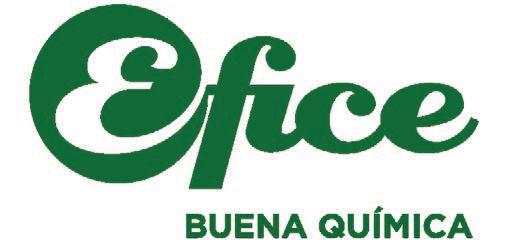
been seeking out and genuinely excited to pursue.
When I was brought in and interviewed her team, they were baffled. “Why do we have to beg our CEO to be the face of the company?” they asked. One of her senior leaders even confided in me, “It’s like Mila only wants to do the hard work. Getting interviewed is fun! Giving speeches is fun! People would love her. And she wants to look at spreadsheets all day?”
This was, as it turned out, an easy one. What Mila and her team didn’t realize was that she was an introvert in a job that required the behavior of an extrovert. The simple reality was that for Mila to leave her comfort zone—to meet with clients, lead company meetings, talk to the media—was exceptionally challenging. She coped with the stress of extroverted activities not just by avoiding as many as she could, but also by convincing herself that these tasks were extraneous, and that simply focusing on strategy and execution would be enough. She was blind to the reality that her innate introversion was holding her back as the company shifted from product development to commercialization, when a CEO needs to be external-facing.
Traits are hard to change, and I don’t intend to argue otherwise. Any attempt to change them is likely to end in frustration and failure. We are, for better or worse, who we are. Rather than fighting our instincts, it is almost always more productive to become aware of our traits and then manage around them or find a role where we can thrive not just despite who we are but because of our unique gifts and abilities.
Mila was never going to be the life of the party—but if she wanted to be a successful CEO, she needed to become aware of her blind spot, then adapt. To some degree, she needed to push herself out of her comfort zone. But she could also compensate by building a team around her that could own at least some of the tasks she didn’t want. I advised her to hire a “chief of communications and inspiration” to own some elements of the role that she didn’t feel comfortable with, and we worked on ways to strategically harness her limited tolerance for meetings by using her in only the most important sales closings.
While Mila was uncomfortable being on stage in front of large groups, I could see that her genuineness, warmth, and industry credentials made her quite charismatic in small group situations. I encouraged her to schedule monthly sessions—“Friday breakfasts with Mila”—and invite four employees at a time from different parts of the company to join her for a meal. She used these meetings effectively to connect with employees as individuals, inspire them about her vision for the company, and show them how much she appreciated their contributions.
She also worked with sales and marketing to help them shape her identity to the world as a brilliant, compassionate, introverted leader. This allowed her to stay in her comfort zone as much as possible while adjusting the world’s (and the company’s) expectations of who she was and how she might behave. Finally, she leaned on her extroverted CFO to take a more central role during board meetings in order to relieve her of “performing” for the board, letting her focus instead on building the one-on-one relationships.
Through understanding and accepting her blind spot, Mila was able to make changes that felt like a relief—and with help, she blossomed as a CEO and found success. Her introversion was something to address, not a fatal character flaw. Rather than trying to convince others that certain parts of the job weren’t important, she needed the self-awareness to know what she could and couldn’t do, and strategies to overcome any problems.
Strengths are not unqualified positives. Instead, our challenges often emerge from investing too heavily in our strengths.
As you read Mila’s story, you might have wondered how she got that role in the first place. Isn’t it obvious, you might ask, that an extrovert would be a better leader than an introvert?
As Mila’s company moved from developing its product to commercializing it, the answer was yes. But I wouldn’t make the case that this—or any trait—is universally valuable in every situation. I have seen CEO roles where deep thinking matters most, and the nature of the business doesn’t require the kind of robust presence that Mila’s team wanted from her. There may be leadership traits that prove useful in many cases, but even more important is the fit: Which traits are useful in a particular context?
Over time, I’ve found it interesting to discover that trait blind spots do tend to surface for entrepreneurs more than corporate leaders. The collection of traits needed to build is very different from the set of qualities required to lead. Successful leaders in established companies are often described as “well-rounded.” They have filled several different roles, and those with significant trait blind spots end up getting weeded out on the move up the hierarchy. You simply don’t become CEO if you don’t have the right mix of traits or can’t learn how to adapt to your own particular set. To the extent there are weaknesses, they are not blind spots; they are known and managed around.
Entrepreneurs, on the other hand, succeed because they are exceptional at something—maybe vision, maybe resilience, or maybe none of the leadership traits at all—and this exceptionalism is so strong that people are willing to overlook their other challenges. Think about the stereotypical brilliant founder with no people skills, where employees accept that he’s difficult and leave him alone to do his magic. People fear pointing out the issue because of the possibility of an adverse reaction, denial, or defensiveness. Some entrepreneurs, when confronted with evidence of their gaps, may argue that people are exaggerating. But there is a ceiling to growth when someone has an unaddressed blind spot standing in their way. Once the demands of the job shift to encompass far more than just product development and rapid growth—once the founders must become managers of people—they’re exposed as fundamentally flawed CEOs. They are “spiky, odd-shaped polygons,” as I like to put it, and don’t fit as leaders in a more established enterprise.
Costa Rica has firmly established itself as one of Latin America’s most promising economies, driven by political stability, sustainability, and a highly educated workforce. The International Monetary Fund (IMF) reported that Costa Rica’s GDP growth has averaged above 5% through 2024, outpacing many regional peers. This economic resilience, paired with a commitment to green energy and digital transformation, has positioned the country as a magnet for foreign investment and entrepreneurial ventures.
At the heart of this success story lies tourism, a sector that continues to fuel Costa Rica’s economy. In 2024, the country welcomed 2.66 million tourists by air—a 7.7% increase from the previous year and the highest in over 16 years. Tourism generated a record $5.43 billion in foreign currency earnings, reflecting global demand for Costa Rica’s unique blend of eco-adventures, pristine beaches, and sustainable luxury. As travelers increasingly seek destinations that ofer both natural beauty and responsible development, Costa Rica stands out as a global leader.
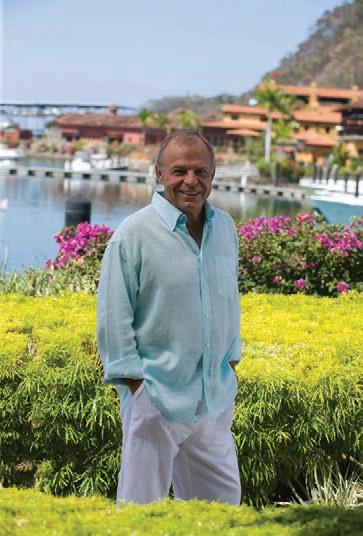
William Royster President
It was this untapped potential that captivated Californian entrepreneur William Royster when he sailed into Costa Rica in 1991. What began as a sabbatical turned into a lifelong mission after Royster purchased 1,100 acres of coastal land. “When I bought this property, it was like an uncut diamond. Now, I’m cutting it and making it brilliant,” he recalls. That diamond would become Los Sueños Resort and Marina—today regarded as one of Central America’s premier luxury destinations, seamlessly blending high-end living with environmental stewardship.
From the outset, Royster envisioned more than just a resort. “We wanted to be a model for the country,” he says, reflecting on how Los Sueños set new standards in sustainable development. Among its pioneering initiatives, Los Sueños was one of the first in Costa Rica to install a wastewater treatment plant, reusing water for landscaping and preserving 600 acres of forest as a permanent ecological reserve. The resort’s guiding philosophy—“visions of man joined with nature”— is evident in every aspect of its design and operations.
For much of the 1990s and early 2000s, Royster wasn’t just building a resort—he was helping put Costa Rica on the global map. At a time when many in the U.S. thought Costa Rica was an island, Royster tirelessly promoted both his project and the country at international boat shows, luxury expos, and through strategic media partnerships. Collaborations with popular television programs like Offshore Adventures, which reached over 42 million viewers, showcased not only Los Sueños but also Costa Rica’s breathtaking coastline and world-class fishing. This grassroots marketing efort played a pivotal role in reshaping perceptions and attracting a wave of high-net-worth visitors and investors to the country.
Today, Los Sueños is a thriving, self-suficient community featuring
a world-class marina, luxury residences, fine dining, and a championship golf course. The marina, renowned globally for sportfishing, is fully occupied year-round by homeowners in the resort, attracting elite clientele from the U.S., particularly from the Gulf states and eastern seaboard, as well as the Midwest. With approximately 800 homes delivered—most pre-sold before a single brick is laid—Los Sueños has demonstrated an unparalleled ability to anticipate and meet market demand. The company is now approaching $1.5 billion in total business, a testament to its operational excellence and visionary leadership.
Yet, beyond the luxury and numbers lies a deeper legacy—one rooted in community and long-term impact. Royster proudly notes, “I see every day what we do, and I applaud my team every day.” Many of his employees have been with him for over 20 years and some for 30, growing alongside the resort and transforming their own lives through education and opportunity. Los Sueños is not just a destination for visitors; it’s a source of pride and stability for hundreds of Costa Rican families.
As Los Sueños approaches the culmination of its development phase, Royster’s vision extends far beyond real estate. His focus is now on preserving the community, environment, and operational excellence that define the resort. With a dedicated team ready to steer the future, Los Sueños is poised to remain a benchmark for sustainable luxury living. Royster’s commitment to conservation, evidenced by the millions invested in reforestation and infrastructure gifted to public utilities, ensures that his legacy isn’t just measured in buildings—but in a thriving ecosystem where nature and human ambition coexist in harmony.
Having witnessed Costa Rica’s evolution from a little-known destination to a global hotspot, Royster remains one of its most passionate advocates. “You can travel all over the world, but you’re never going to find better people than those here in Costa Rica,” he says. For investors, he emphasizes the country’s unique advantage: full property ownership rights for foreigners, political stability, and a welcoming culture that values progress without sacrificing its natural heritage.
Los Sueños stands as a shining example of what visionary entrepreneurship can achieve when aligned with sustainability and respect for local communities. In many ways, its journey mirrors that of Costa Rica itself—a country transformed from a hidden paradise into a beacon of opportunity, beauty, and resilience.
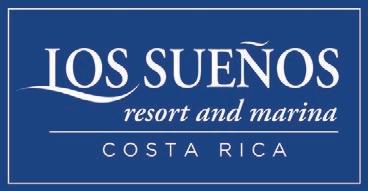
If you are struggling, one of your first questions should be whether you are missing a particular trait. But the very next question should be whether one or more of your inherent traits are hindering you rather than helping you achieve results. If you want to identify your blind spots, here’s where to start.
The first step is awareness. You need to understand who you are, and what core traits define you. Personality tests, like one to measure where you stand on the Big Five traits, do not provide the whole picture, but they can be a useful place to begin.
Looking at your results, do a gut check. In which categories are you at one extreme or the other, and how does that play out in your life? If any of these traits were overused, how might that negatively impact you? Everything can be taken to an extreme, and that’s what we need to catch. By looking at the Big Five and how they play out in leadership, it is easy to see how being at either extreme for any of the traits can be harmful.
When it comes to neuroticism, if you are too reactive, you will be unlikely to maintain your equilibrium through the endless pressure and the ups and downs of business. You may be too unpredictable to your colleagues and subordinates. Being too calm, on the other hand, has the potential to make you appear as if you are unaffected by difficulties, and others may doubt that you are taking problems seriously enough.
What about openness to experiences? If you are too imaginative, it becomes toxic to productivity. But if you are too conventional and cautious, you can’t move at the required speed.
Pure extroverts may lack the internal focus to put in the solitary efforts that are sometimes required on the road to success, while introverts may not be able to handle the social and interpersonal demands of any career that involves interaction with others. Being too agreeable can affect potential business gains, while being too critical can harm needed relationships.
Being too high on conscientiousness may lead to discomfort with risk and ambiguity, while being too carefree can lead to mistakes.
Ask yourself the top adjectives others use to describe you, and then reflect on what happens if you modify them with the word “too”—are you too smart, too energetic, too selfless? These are probably things you like about yourself, but that’s what makes them even more dangerous. If you are proud of these facets of yourself, you are less likely to try to extinguish them or control them. Who wants to act less smart, for example, or less careful?
You may not be able to see all of this yourself—and in fact, you probably can’t. Ask others to help. How do they perceive you when it comes to the Big Five and other leadership traits? How would they describe you, and, if asked directly, what do they say you are too much of? Do you have a trait blind spot—either an overused strength or a critical gap—that needs addressing?
After awareness, the next step is action. Once you’ve identified your traits, you need to examine whether they match your current context. Within an organization, you know the landscape better than a coach like me ever could. Are your traits bumping up against expectations in ways that are holding you back? Where are you consistently finding yourself struggling, and does it come back to an area where you are “too much” of something, or where a different trait is needed?
You might ask yourself to think about the people succeeding in your organization or your profession, and whether they embody different traits than you. Do the truly persistent individuals around
The collection of traits needed to build [a company] is very different from the set of qualities required to lead.
you seem to be getting things done in a way that you’re having trouble with? Does that mean persistence is a helpful trait here, and is that something you might be willing to grow within yourself, or might it mean you are in the wrong role?
Are there mechanisms you can put in place to guard against overrelying on certain aspects of yourself? If, for example, you have too much of an ownership mindset, can you force delegation and outsourcing so that you mitigate your inclination to do everything yourself?
Remember, there are no universals; different traits are useful in different roles. Your default responses may be perfect, or they may need some adjustment. For Esther, whose caution caused her to lose her job, there could have been a three-step action plan to address the problem:
1/ Recognize that your superstrength (in this case, caution) is a blind spot in your current context.
2/ Ask yourself: Can you shift? Do you even want to shift?
3/ Find a solution. Coming forward with honesty about Esther’s strengths and limitations could have prompted a discussion between her and the board about how to move forward productively. Perhaps she could have convinced the board that the company didn’t need to move as quickly as they believed, and that her more deliberative style was a benefit in an industry prone to missteps. Perhaps she could have brought in a “number two” to own some of the decision-making that depended most on speed and yet still have given herself the space to focus on the company’s larger strategy.
There wasn’t necessarily a right or wrong answer, just the opening for a discussion that could happen only once Esther recognized her blind spot. No matter what trait you are trying to manage, when you are no longer blind to your blind spot, solutions come into focus.
Reprinted by permission of Harvard Business Review Press. Excerpted from Blindspotting: How to See What’s Holding You Back as a Leader by Martin Dubin. Copyright © 2025 Martin Dubin. All rights reserved.
Benefitting from its “large reserves of valuable minerals, vast forests, abundant water and marine resources, and fertile land for agriculture”, Papua New Guinea’s economy will grow by an impressive 4.8% in 2024, according to the World Bank.
The growth of natural resources industries, particularly LNG, over the past decade has driven huge demand for transport and logistics services, with companies able to deliver services and infrastructure in complex environments in particular demand.
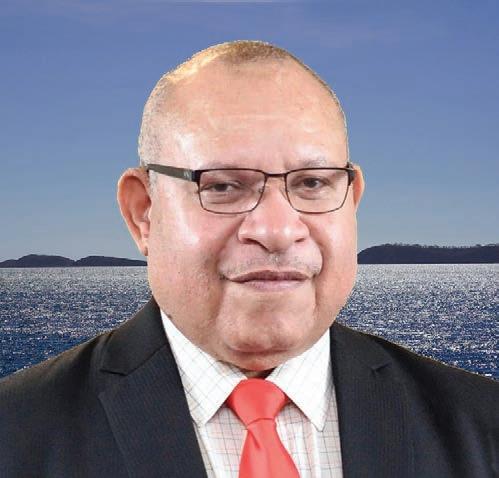
Larry Andagali Managing Director
Trans Wonderland Limited (TWL) is one of PNG’s leading integrated logistics companies. It is one of the country’s largest “landowner” companies (“lancos”), that are owned by traditional landowners in areas of oil and gas activity. It was established in 2009 with a $192mn contract from ExxonMobil on its landmark PNG LNG contract. This required TWL to coordinate logistics and transport more than 26,000 loads over 800km of PNG’s Highlands Highway, managing a fleet of more than 600 vehicles. Over the past 15 years it has grown and diversified, working with a range of natural resource companies and leveraging its core business capabilities to develop new market opportunities in adjacent and complementary businesses. It now operates in segments including marine, fuel, freight forwarding, aerial survey, heavy lifting and engineered transport. TWL prides itself on its strong partnerships with international companies, inking a number of deals in recent years to expand its capacity in new niches.
“We started conversations with international partners back in 2019,” says Larry Andagali, TWL’s group managing director. “Our joint venture partners are pretty much in place, and we don’t want to over-extend. This year is about consolidation. Then in 2026 is hopefully when we close all that out, and start integrating our systems as an international plan.”
In 2019, TWL acquired 50% ownership of the business now known as Argo Marine, which supports the planning and execution of marine projects in PNG, providing flexible and practical bespoke solutions. It can supply vessels including landing craft, offshore support vessels, tugs and barges. Argo Marine’s subsidiary TWL Fuels deals in the wholesale supply and distribution of petroleum products, providing end-to-end fuel supply and logistics services ensuring secure supply in challenging marine environments.
Following a hiatus due to the pandemic, in 2022 TWL formed a joint venture, PenTrans PNG, with Pentagon Freight Services, a prominent global freight forwarding and warehousing business which has been servicing the PNG oil and gas sector since 2012. Pentagon has extensive knowledge of customs clearances for vessels, oil rigs, floating oil production systems, and other project equipment. The company’s 24/7 customers brokerage operation can lodge import customs declarations in major PNG ports and airports at any time, meeting demanding client deadlines in this sensitive industry.
The same year, TWL also formed Sarens PNG, a JV with Belgium’s Sarens, world leaders in heavy-lift and engineered transport solutions, particularly cranes.
“This venture gives us great leverage into the heavy haulage engineered logistics and heavy lifting business,” says Andagali.
Another deal in 2022 saw TWL Energy Ventures acquire 100% of Arran Energy and its subsidiaries, taking over all the latter’s assets with total resources of 2.29trn cubic feet of natural gas and 74.2mn barrels of oil. It thus became the first lanco to be directly engaged in the upstream oil and gas industry.
These relatively new ventures complement TWL’s existing businesses, which include the trucking arm, which has grown consistently over the past decade, and TWL Data, an aerial mapping and geographical information company. The latter has been contracted across Australasia, including in Queensland, Palau, Micronesia, and further afield. TWL also has a stake in Tolu Minerals, an Australian listed company operating in the PNG mining sector.
As a leading lanco, TWL is truly a business rooted in the country it serves, reflecting its diversity and values. It puts an emphasis on sharing the wealth it generates from its activities with the communities in which it operates.
“We’ve taken the cultural structure of the local communities and embedded it in our corporate structure,” says Andagali. “Over 10,000 shareholders, nine ethnic groups, seven petroleum development licences, four provinces, all coming together. It’s unique – there’s no other company like ours in PNG. We can speak nine different languages, but we speak only one commercial language when we’re together.”
With several of the directors nearing retirement age, TWL is in the process of identifying the next generation of directors from local communities to ensure that the company’s corporate culture is maintained, and that the leadership continues to have the skills required to manage an increasingly diversified and complex organisation. The company recruits young graduates and gives them experience across departments, equipping them with knowledge of varied business units and ensuring that activities are not siloed.
TWL is also a major sponsor for important conferences in PNG and abroad, whether they focus on mining or indigenous issues; the company’s executives are regular keynote speakers at such events. Andagali is proud of his association with the country, and TWL’s leading role in promoting it internationally, putting this hugely promising market on the radar of international investors.
“There are a lot of PNG companies, like ourselves, that are investing in internal development and are achieving international standards,” says Andagali. “There are a lot of companies which are looking for international partners they can help to navigate PNG, that are just crying out for partnerships that will help us grow. The prime minister has said he would like to see successful private companies and particularly those which already work with international companies be a little bit more proactive in promoting the opportunities here. It’s very important for us to help to do that. We’ll look after the country.”


As AI gets more realistic, scammers are making millions. But entrepreneurs are seeing opportunity too—by stopping the bad guys. If they can.
by LIZ BRODY

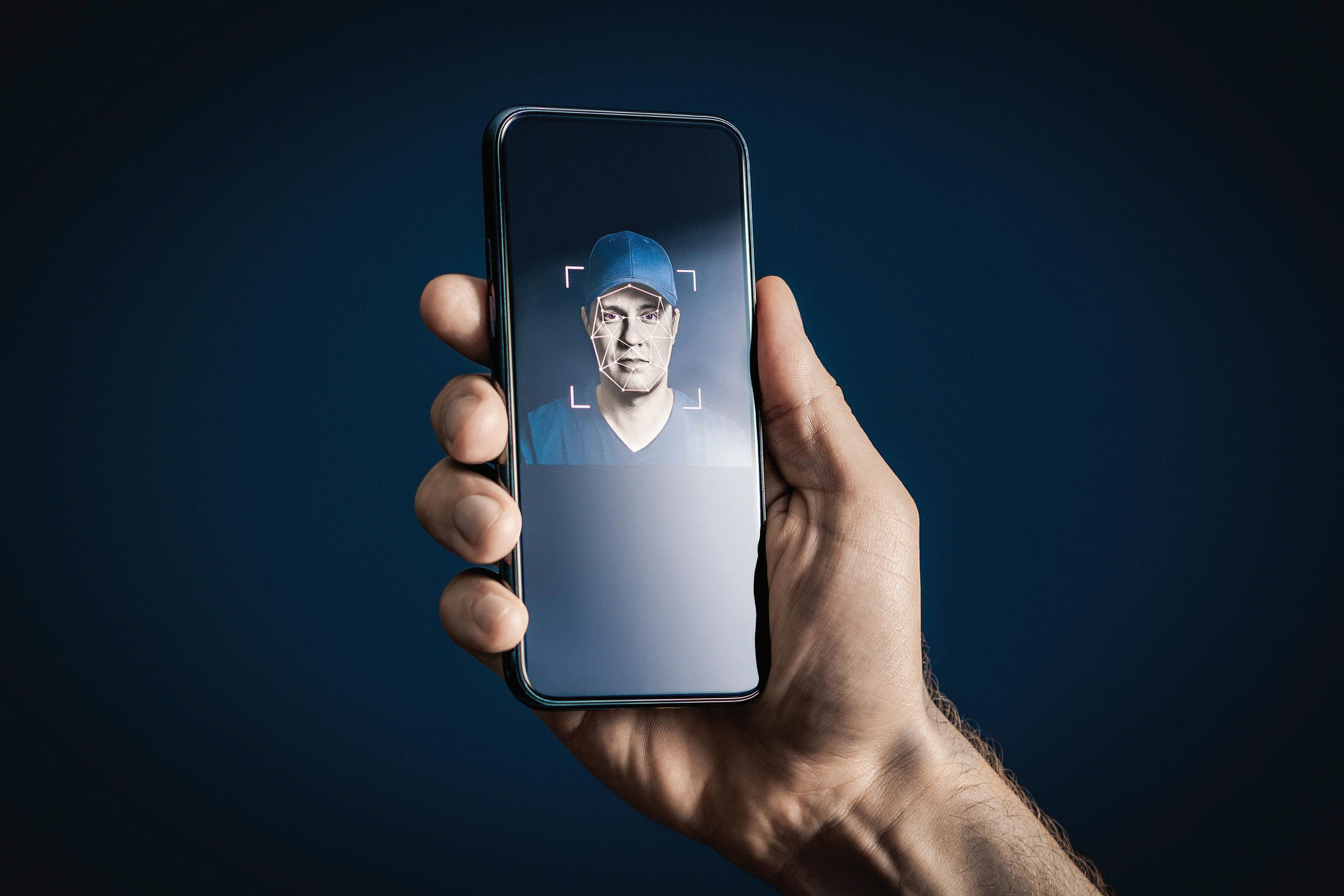
Y our CFO is on the video call asking you to transfer $25 million. He gives you all the bank info. Pretty routine. You got it. But, What the—? It wasn’t the CFO? How can that be? You saw him with your own eyes and heard that undeniable voice you always half-listen for. Even the other colleagues on the screen weren’t really them. And yes, you already made the transaction.
Ring a bell? That’s because it actually happened to an employee at the global engineering firm Arup last year, which lost $25 million to criminals. In other incidents, folks were scammed when “Elon Musk” and “Goldman Sachs executives” took to social media enthusing about great investment opportunities. And an agency leader at WPP, the largest advertising company in the world at the time, was almost tricked into giving money during a Teams meeting with a deepfake they thought was the CEO Mark Read.
Experts have been warning for years about deepfake AI technology evolving to a dangerous point, and now it’s happening. Used maliciously, these clones are infesting the culture from Hollywood to the White House. And although most businesses keep mum about deepfake attacks to prevent client concern, insiders say they’re occurring with increasing alarm. Deloitte predicts fraud losses from such incidents to hit $40 billion in the United States by 2027.
Obviously, we have a problem—and entrepreneurs love nothing more than
finding something to solve. But this is no ordinary problem. You can’t sit and study it, because it moves as fast as you can, or even faster, always showing up in a new configuration in unexpected places.
The U.S. government has started to pass regulations on deepfakes, and the AI community is developing its own guardrails, including digital signatures and watermarks to identify their content. But scammers are not exactly known to stop at such roadblocks.
That’s why many people have pinned their hopes on “deepfake detection”—an emerging field that holds great promise. Ideally, these tools can suss out if something in the digital world (a voice, video, image, or piece of text) was generated by AI, and give everyone the power to protect themselves. But there is a hitch: In some ways, the tools just accelerate the problem. That’s because every time a new detector comes out, bad actors can potentially learn from it—using the detector to train their own nefarious tools, and making deepfakes even harder to spot.
So now the question becomes: Who is
up for this challenge? This endless catand-mouse game, with impossibly high stakes? If anyone can lead the way, startups may have an advantage—because compared to big firms, they can focus exclusively on the problem and iterate faster, says Ankita Mittal, senior consultant of research at The Insight Partners, which has released a report on this new market and predicts explosive growth.
Here’s how a few of these founders are trying to stay ahead—and building an industry from the ground up to keep us all safe.
If deepfakes had an origin story, it might sound like this: Until the 1830s, information was physical. You could either tell someone something in person, or write it down on paper and send it, but that was it. Then the commercial telegraph arrived—and for the first time in human history, information could be zapped over long distances instantly. This revolutionized the world. But wire transfer fraud and other scams soon followed, often sent by fake versions of real people.
We’re entering a ‘new chapter of human productivity potential that’s multiple orders of magnitude beyond the past.’

As small- and medium-size been
Artificial intelligence isn’t a tool for only enterprises anymore. As generative AI tools have become increasingly accessible, small- and medium-size businesses (SMBs) have been integrating AI into their everyday operations. As it turns out, 75% of SMBs say they are investing in AI, and growing SMBs are nearly two times more likely to invest in AI than their declining peers1. That’s huge.
faster,
audience
75% of SMBs say they are are in AI than their .
These businesses and data and a clear of their customers. As the wave of AI way to a AI systems to act autonomously, constant human are
These businesses recognize the importance of embracing AI and prioritizing data strategies that provide speed, reliability, and a clear understanding of their customers. As the wave of generative AI gives way to a new era of agentic AI—allowing AI systems to act autonomously, making decisions and taking actions without constant human oversight—SMBs are realizing even greater opportunities.
“We’re embarking on a new chapter of human productivity potential that’s multiple orders of magnitude beyond the past, and this will have effects on all businesses, especially for SMBs,” says Adam Evans, Executive Vice President and General Manager of Salesforce AI. Evans oversees Agentforce, a digital labor platform for bringing trusted, autonomous AI agents into the flow of work. Built on Salesforce’s unified platform, it enables companies to “agentify” every workflow and app for customer success, he says.
“We’re the and this will have effects on all businesses, for President and of Salesforce AI. Evans oversees a trusted, on Salesforce’s unified it enables to and app for customer success, he says.
Prior to his current role, Evans co-founded a of AI businesses both of which someone who built businesses from up, startups and and more than have the time or resources for,” Evans
unlimited
Prior to his current role, Evans co-founded a pair of AI businesses—both of which were acquired by Salesforce.“As someone who built businesses from the ground up, startups and small businesses are always going to be scrappy and doing more than they have the time or resources for,” Evans says.“With Agentforce, small teams will be able to scale faster with a 24/7 digital workforce across sales, service, marketing, and e-commerce. It can unlock unlimited capacity for your business.”
Here, Evans discusses three ways high-growth SMBs will be utilizing AI this year to achieve their ambitious goals.
1. Reaching more customers with marketing campaign automation
Here, Evans discusses three ways SMBs will be Oftentimes, SMBs have small marketing teams or even successful is difficult with limited resources. Thankfully, that’s
Oftentimes, SMBs have small marketing teams or even marketing teams of one. Building and managing successful campaigns is difficult with limited resources. Thankfully, that’s where automation comes in.
With smart AI tools like Agentforce, marketers can build better campaigns faster, using AI-powered agents to generate campaign briefs, identify target audience segments, create content, or even build a customer journey—with a single prompt.“And because Agentforce never sleeps, it will continually analyze performance against KPIs and proactively recommend improvements over the course of the campaign,” Evans says.
create content, or even build a customer a because never it will continually analyze KPIs and over the course of the Evans says.
With agentic AI, SMBs can create higher-quality content. In sales, for example, businesses can use agentic AI to personalize outreach to leads.
In sales, for businesses can use personalize outreach to leads.
interaction that’s been CRM as well as data as sales enablement materials,” Evans to
Tools like Agentforce receive data from the most recent interaction that’s been stored in a company’s CRM as well as third-party data about their company profile.“The agent also draws on documents you upload that share your selling best practices, such as sales enablement materials,” Evans explains.“Then it uses sophisticated reasoning to personalize emails to individual prospects, according to their profiles and interests.”
if you could offer e-commerce customers a them to the without extra from sales or customer service. It’s AI.
Imagine if you could offer e-commerce customers a completely AI-powered personal shopper that helps steer them to the perfect product without extra lifting from sales or customer service. It’s possible thanks to agentic AI.
With Agentforce, customers can have personalized conversations with agents directly on a website or using a messaging app like WhatsApp. Because Agentforce has access to secure customer data, AI-powered agents are able to help customers find products and make purchases based on their unique preferences.
conversations with agents directly on a website or using a app like access to secure based on their
“Two of the top new ,” Evans says. miss a
“Two of the top challenges for SMBs is acquiring new customers and retaining existing ones1,” Evans says. “With 24/7 digital labor, SMBs can make sure they never miss a sale and create positive experiences to keep loyal customers.”
To learn more about agentic AI and how Agentforce can help scale your SMB, visit Salesforce.com/Agentforce
























Western Union was one of the first telegraph companies—so it is perhaps appropriate, or at least ironic, that on the 18th floor of the old Western Union Building in lower Manhattan, you can find one of the earliest startups combatting deepfakes. It’s called Reality Defender, and the guys who founded it, including a former Goldman Sachs cybersecurity nut named Ben Colman, launched in early 2021, even before ChatGPT entered the scene. (The company originally set out to detect AI avatars, which he admits is “not as sexy.”)
Colman, who is CEO, feels confident that this battle can be won. He claims that his platform is 99% accurate in detecting real-time voice and video deepfakes. Most clients are banks and government agencies, though he won’t name any (cybersecurity types are tight-lipped like that). He initially targeted those industries because, he says, deepfakes pose a particularly acute risk to them—so they’re “willing to do things before they’re fully proven.” Reality Defender also works with firms like Accenture, IBM Ventures, and Booz Allen Ventures—“all partners, customers, or investors, and we power some of their own forensics tools.”
So that’s one kind of entrepreneur involved in this race. On Zoom, a few days after visiting Colman, I meet another: He is Hany Farid, a professor at the University of California, Berkeley, and cofounder of a detection startup called GetReal Security. Its client list, according to the CEO, includes John Deere and Visa. Farid is considered an OG of digital image forensics (he was part of a team that developed PhotoDNA to help fight online child sexual abuse material, for example). And to give me the full-on sense of the risk involved, he pulls an eerie sleight-of-tech: As he talks to me on Zoom, he is replaced by a new person—an Asian punk who looks 40 years younger, but who continues to speak with Farid’s voice. It’s a deepfake in real time. Truth be told, Farid wasn’t originally sure if deepfake detection was a good business. “I was a little nervous that we wouldn’t be able to build something that actually worked,” he says. The thing is, deepfakes aren’t just one thing. They are produced in myriad ways, and their creators are always evolving and learning. One method, for example, involves using what’s called a “generative adversarial network”—in short, someone builds a deepfake generator, as well as a deepfake detector, and the two systems compete
There’s a hitch.Every time a new detector comes out,bad actors can potentially learn from it— using the detector to train their own nefarious tools and making deepfakes even harder to spot.
against each other so that the generator becomes smarter. A newer method makes better deepfakes by training a model to start with something called “noise” (imagine the visual version of static) and then sculpt the pixels into an image according to a text prompt.
Because deepfakes are so sophisticated, neither Reality Defender or GetReal can ever definitively say that something is “real” or “fake.” Instead, they come up with probabilities and descriptions like strong, medium, weak, high, low, and most likely—which critics say can be confusing, but supporters argue can put clients on alert to ask more security questions.
To keep up with the scammers, both companies run at an insanely fast pace— putting out updates every few weeks. Colman spends a lot of energy recruiting engineers and researchers, who make up 80% of his team. Lately, he’s been pulling hires straight out of Ph.D. programs. He also has them do ongoing research to keep the company one step ahead.
Both Reality Defender and GetReal maintain pipelines coursing with tech that’s deployed, in development, and ready to sunset. To do that, they’re organized around different teams that go back and forth to continually test their models. Farid, for example, has a “red team” that attacks and a “blue team” that defends. Describing working with his head of research on a new product, he says, “We have this very rapid cycle where she breaks, I fix, she breaks—and then you see the fragility of the system. You do that not once, but you do it 20 times. And now you’re onto something.”
Additionally, they layer in non-AI sleuthing techniques to make their tools more accurate and harder to dodge. GetReal, for
example, uses AI to search images and videos for what are known as “artifacts”—telltale flaws that they’re made by generative AI—as well as other digital forensic methods to analyze inconsistent lighting, image compression, whether speech is properly synched to someone’s moving lips, and for the kind of details that are hard to fake (like, say, if video of a CEO contains the acoustic reverberations that are specific to his office).
“The endgame of my world is not elimination of threats; it’s mitigation of threats,” Farid says. “I can defeat almost all of our systems. But it’s not easy. The average knucklehead on the internet, they’re going to have trouble removing an artifact even if I tell ’em it’s there. A sophisticated actor, sure. They’ll figure it out. But to remove all 20 of the artifacts? At least I’m gonna slow you down.”
All of these strategies will fail if they don’t have one thing: the right data. AI, as they say, is only as good as the data it’s trained on. And that’s a huge hurdle for detection startups. Not only do you have to find fakes made by all the different models and customized by various AI companies (detecting one won’t necessarily work on another), but you also have to compare them against images, videos, and audio of real people, places, and things. Sure, reality is all around us, but so is AI, including in our phone cameras. “Historically, detectors don’t work very well once you go to real world data,” says Phil Swatton at The Alan Turing Institute, the United Kingdom’s national institute for AI and data science. And high-quality, labeled datasets for deepfake detection remain scarce, notes Mittal, the senior consultant from The Insight Partners.
Increasing urbanisation, a large and young population, and strong consumer demand make the Philippines “one of the most dynamic economies in the East Asia and Pacific region”, according to the World Bank. These factors are driving increasing demand for healthcare services, with the private sector to the fore in pursuing investments, acquiring smaller hospitals, and upgrading hospital infrastructure, according to the US International Trade Administration.
St. Luke’s Medical Center is one of the leading healthcare providers in the Philippines, with two world-class hospitals and a third at the design stage. The organisation, a private nonprofit institution, is to a great extent the public face of the country’s medical sector, a pioneer and trendsetter in the healthcare industry, continuously taking the lead in its development, and working as a strategic partner to international businesses.
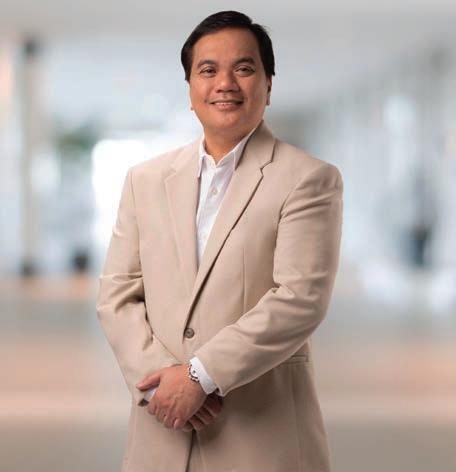
Dennis P. Serrano, M.D., MHA President & CEO
“Whenever St. Luke’s pushes the envelope towards healthcare improvement, we notice that other hospitals follow,” says Dennis P. Serrano, President and CEO of St. Luke’s Medical Center. “As the leading hospital in the country, as the hospital that drives excellence in healthcare, we have a responsibility to push and to elevate healthcare. I keep telling people that being the best is not an objective that I think is worthwhile for us. The objective is to become better every day. When we become the best in the Philippines, will that end for us? No! As a market leader, I see it as a responsibility to ensure that we continuously improve and make the Philippines known as a country that can provide reliable and good medical care with good outcomes.”

St. Luke’s has been a leader in technology adoption, among the first hospitals in the country to adopt system-wide electronic health records, a trend that all other healthcare facilities are expected to follow. The systems allow seamless integration of patients’ medical records with international healthcare providers, allowing them to be accessed when the patients go abroad. Digitalisation has helped enhance the organisation’s efficiency, quicken processes, and supported the integration of units by providing instant access to results and records – all improving the quality of patient care.
St. Luke’s commitment to the best technology applies equally to its medical equipment. It offers the most modern diagnostics, with fast CT scans and MRIs, and has equipped its hospitals with imaging machines and surgical robots. Yet Dr. Serrano emphasises that this is secondary to the organisation’s primary concern: a culture of care.
“When you are a patient at one of St. Luke’s hospitals, there are three things that are a priority for you,” he says. “Number one, you want a good outcome - good diagnostics, good equipment, but also with good doctors. That is why we have the best doctors in the Philippines joining us. Second, you want this good outcome to be delivered promptly. And the third is you want to feel that when you leave the hospital, you were really cared for. You felt the caring attitude of your doctor, your nurse, even the chambermaid of your room. That is where our culture of care now evolves. I think delivering these three things is paramount to getting patients to keep coming back to us and to recommend us to other patients.”
St. Luke’s two currently operating hospitals are located in Quezon City and Global City, Taguig, and offer care at par with the most advanced hospitals in the world. Its third hospital is set to open by 2030 in Aseana City, on reclaimed land on Manila Bay near the city’s international airport. The area is expected to see growing demand for hospital care in the coming years as residential areas and businesses around grow. The new hospital is also expected to cater to the growing market for medical tourism and international patients, and Dr. Serrano sees substantial potential in these areas. St. Luke’s already leads the way in care for visitors to the Philippines and expatriates, treating 24,000 international patients last year, and estimates that around 10% of their current inpatients are non-residents. The organisation has reached out to Pacific island markets including Guam, Micronesia, Saipan, and Palau, which are under-served in top-quality hospital care.
“The medical tourism market is a sizable one, and one we see growing,” says Serrano. “And as the Philippines becomes an investment opportunity for many companies, we feel we should answer the growing need for healthcare for their employees, for expats, and for visiting business partners. In case something happens, they know there’s a world-class hospital, and the expertise is there. We are well-equipped to give the same kind of care you would get in your own country. Building a hospital that is on par in terms of service and technology with the best hospitals in Asia or even the rest of the world will make the Philippines a destination for medical tourism.”
In November, St. Luke’s launched the SLMC Health Equity and Research (HERE) Foundation, a non-stock, not-for-profit research foundation dedicated to funding and supporting research designed to increase access to healthcare, particularly for disadvantaged groups. The foundation is dedicated to investigating healthcare inequality and proposing solutions to address it. It aims to support policymakers in highlighting areas that require investment and reform, from oncology to pediatric medicine. In doing so, it will fill a significant research gap and help the delivery of better healthcare to all Filipinos; meanwhile, St. Luke’s is allocating nearly $9mn a year to support patients who are less able to afford its services.
“We don’t want St. Luke’s just to be known as the best hospital,” says Serrano. “We hope to alleviate the issue of the poor having less access to healthcare than the rich. We have a responsibility.”

Colman has tackled this problem, in part, by using older datasets to capture the “real” side—say from 2018, before generative AI. For the fake data, he mostly generates it in house. He has also focused on developing partnerships with the companies whose tools are used to make deepfakes—because, of course, not all of them are meant to be harmful. So far, his partners include ElevenLabs (which, for example, translates popular podcaster and neuroscientist Andrew Huberman’s voice into Hindi and Spanish, so that he can reach wider audiences) along with PlayAI and Respeecher. These companies have mountains of real-world data—and they like sharing it, because they look good by showing that they’re building guardrails and allowing Reality Defender to detect their tools. In addition, this grants Reality Defender early access to the partners’ new models, which gives it a jump start in updating its platform.
Colman’s team has also gotten creative. At one point, to gather fresh voice data, they partnered with a rideshare company—offering their drivers extra income by recording 60 seconds of audio when they weren’t busy. “It didn’t work,” Colman admits. “A ridesharing car is not a good place to record crystal-clear audio. But it gave us an understanding of artificial sounds that don’t indicate fraud. It also helped us develop some novel approaches to remove background noise, because one trick that a fraudster will do is use an AI-generated voice, but then try to create all kinds of noise, so that maybe it won’t be as detectable.”
Startups like this must also grapple with another real-world problem: How do they keep their software from getting out into the public, where deepfakers can learn from it? To start, Reality Defender’s clients have a high bar for whom within the organizations can access their software. But the company has also started to create some novel hardware.
To show me, Colman holds up a laptop. “We’re now able to run all of our magic locally, without any connection to the cloud on this,” he says. The loaded laptop, only available to high-touch clients, “helps protect our IP, so people don’t use it to try to prove they can bypass it.”
Some founders are taking a completely different path: Instead of trying to detect fake people, they’re working to authenticate real ones.
“The average knucklehead on the internet,they’re going to have trouble removing an artifact. A sophisticated actor,sure.But to remove all 20 of the artifacts? At least I’m gonna slow you down.”
That’s Joshua McKenty’s plan. He’s a serial entrepreneur who cofounded OpenStack and worked at NASA as Chief Cloud Architect, and this March launched a company called Polyguard. “We said, ‘Look, we’re not going to focus on detection, because it’s only accelerating the arms race. We’re going to focus on authenticity,’” he explains. “I can’t say if something is fake, but I can tell you if it’s real.”
To execute that, McKenty built a platform to conduct a literal reality check on the person you’re talking to by phone or video. Here’s how it works: A company can use Polyguard’s mobile app, or integrate it into their own app and call center. When they want to create a secure call or meeting, they use that system. To join, participants must prove their identities via the app on their mobile phone (where they’re verified using documents like Real ID, e-passports, and face scanning). Polyguard says this is ideal for remote interviews, board meetings, or any other sensitive communication where identity is critical.
In some cases, McKenty’s solution can be used with tools like Reality Defender. “Companies might say ‘We’re so big, we need both,’” he explains. His team is only five or six people at this point (whereas Reality Defender and GetReal both have about 50 employees), but he says his clients already include recruiters, who are interviewing candidates remotely only to discover that they’re deepfakes, law firms wanting to protect attorney-client privilege, and wealth managers. He’s also making the platform available to the public for people to establish secure lines with their attorney, accountant, or kid’s teacher.
This line of thinking is appealing—and gaining approval from people who watch
the industry. “I like the authentication approach; it’s much more straightforward,” says The Alan Turing Institute’s Swatton. “It’s focused not on detecting something going wrong, but certifying that it’s going right.” After all, even when detection probabilities sound good, any margin of error can be scary: A detector that catches 95% of fakes will still allow for a scam 1 out of 20 times.
That error rate is what alarmed Christian Perry, another entrepreneur who’s entered the deepfake race. He saw it in the early detectors for text, where students and workers were being accused of using AI when they weren’t. Authorship deceit doesn’t pose the level of threat that deepfakes do, but text detectors are considered part of the scam-fighting family.
Perry and his cofounder Devan Leos launched a startup called Undetectable in 2023, which now has over 19 million users and a team of 76. It began by building a sophisticated text detector, but then pivoted into image detection, and is now close to launching audio and video detectors as well. “You can use a lot of the same kind of methodology and skill sets that you pick up in text detection,” says Perry. “But deepfake detection is a much more complicated problem.”
Finally, instead of trying to prevent deepfakes, some entrepreneurs are seeing the opportunity in cleaning up their mess.
Luke and Rebekah Arrigoni stumbled upon this niche accidentally, by trying to solve a different terrible problem—revenge porn. It started one night a few years ago, when the married couple were watching HBO’s Euphoria. In the show, a character’s nonconsensual intimate image was shared

Hungary’s economy continues to outperform many of its regional peers, becoming an increasingly attractive destination for business growth and international partnerships. One of the key sectors benefitting from this positive momentum is cosmetics and personal care. Globally, the demand for natural and sustainably sourced beauty products is accelerating. McKinsey’s 2024 Beauty Report identifies “clean beauty” and “eco-authenticity” as defining consumer trends, especially in Europe and North America. Hungary’s deep-rooted traditions in herbal remedies, spa culture, and natural wellness give it a unique advantage in this evolving landscape. Local companies that combine tradition with science are carving out premium positions in the global market—none more so than Ilcsi Cosmetics.
Ferenc Molnar Owner

Ilcsi Cosmetics is a company built on almost seven decades of knowledge, passion, and family heritage. Founded in 1958 by pioneering beautician Ilona Katona, the brand quickly became a favorite among professionals for its highly effective natural formulations. Today, Ilcsi remains family-owned and operated, led by Katona’s son, Ferenc Molnár, and Managing Director Zsolt Lengyel. The company has earned the rare and prestigious title of “Hungarikum,” a state-certified recognition of uniquely Hungarian excellence. Every product is developed, grown, and manufactured entirely within Hungary—a testament to their values and a powerful differentiator in an increasingly globalized industry.
“Our story began because my mother couldn’t find the right productsforherclients,”saysFerencMolnár,OwnerofIlcsiCosmetics.
“She turned to nature and ancestral knowledge to create what didn’t exist. That foundation is still the core of everything we do today.”
This foundational belief in natural healing is still visible in every step of Ilcsi’s process. Unlike many beauty brands that outsource production, Ilcsi controls every aspect—from seed to serum. The company’s 20-hectare certified organic garden grows over 100 species of herbs, fruits, and vegetables, which are hand-harvested and processed onsite at their production facility in Budapest. This vertical integration ensures unmatched traceability, quality, and sustainability. Moreover, all of Ilcsi’s products are BDIH-COSMOS certified, verifying their natural origin and ecological footprint.
What sets Ilcsi apart is not just what they put into their products— but how they deliver them. The company proudly operates under a “bakery model,” producing skincare fresh based on real-time demand, not speculation. Their products have a shelf life of 18–24 months, but clients often receive items made within days or weeks of ordering.
“We produce what is needed, like a bakery,” explains Managing Director Zsolt Lengyel. “Our products are 100% natural, BDIH-
COSMOS certified, and always fresh. It’s part of the trust we’ve built with our customers over decades.”
This combination of authenticity, quality, and freshness has helped Ilcsi dominate the natural cosmetics sector in Hungary. The company currently holds over 60% of the domestic market share, outperforming all competitors combined. But the brand is not resting on its laurels. International growth is now the company’s main focus. Ilcsi already exports to 32 countries, including the United States, Canada, Japan, New Zealand, and numerous EU nations. The team’s goal is to expand to 50 markets within the next three years.
The U.S. market in particular presents significant opportunity. There, Ilcsi operates under the brand name “iLike”—a clever nod to the Hungarian nickname “Ilcsi,” and a name that resonates with English-speaking consumers. Though the branding differs slightly in appearance, the productformulationsremainexactlythesame,emphasizingcontinuity in quality and philosophy.
Unlike many companies seeking venture capital or buyouts to fuel their growth, Ilcsi is steadfast in its independence. The company is looking for passionate partners—distributors, retailers, and skincare professionals—who share their values and are ready to help expand the reach of the brand globally.
Even as Ilcsi expands internationally, the team remains grounded in their Hungarian roots. Education, transparency, and community are key parts of the brand’s DNA. Ferenc Molnár himself attends over 100 events each year, training beauticians and educating customers on the power of natural skincare. For him, Ilcsi is not just a business—it’s a family mission with global resonance.
“It’s important not only because it’s Hungarian,” Molnár reflects, “but because it delivers quality. We are proud to be a Hungarian brand—but even more proud to be known as a truly world-class product.”
Ilcsi’s journey from a small herbal kitchen in Budapest to an international player in the clean beauty movement is a story of resilience, vision, and uncompromising values. For global partners looking to work with an authentic, high-quality, and eco-conscious brand, Ilcsi offers more than just products—it offers a legacy and a future.

online. “I guess out of hubris,” Luke says, “our immediate response was like, We could fix this.”
At the time, the Arrigonis were both working on facial recognition technologies. So as a side project in 2022, they put together a system specifically designed to scour the web for revenge porn—then found some victims to test it with. They’d locate the images or videos, then send takedown notices to the websites’ hosts. It worked. But valuable as this was, they could see it wasn’t a viable business. Clients were just too hard to find.
Then, in 2023, another path appeared. As the actors’ and writers’ strikes broke out, with AI being a central issue, Luke checked in with former colleagues at major talent agencies. He’d previously worked at Creative Artists Agency as a data scientist, and he was now wondering if his revenge-porn tool might be useful for their clients—though in a different way. It could also be used to identify celebrity deepfakes—to find, for example, when an actor or singer is being cloned to promote someone else’s product. Along with feeling out other talent reps like William Morris Endeavor, he went to law and entertainment management firms. They were interested. So in 2023, Luke quit consulting to work with Rebekah and a third cofounder, Hirak Chhatbar, on building out their side hustle, Loti.
“We saw the desire for a product that fit this little spot, and then we listened to key industry partners early on to build all of the features that people really wanted, like impersonation,” Luke says. “Now it’s one of our most preferred features. Even if they deliberately typo the celebrity’s name or put a fake blue checkbox on the profile photo, we can detect all of those things.”
Using Loti is simple. A new client submits three real images and eight seconds of their voice; musicians also provide 15 seconds of singing a cappella. The Loti team puts that data into their system, and then scans the internet for that same face and voice. Some celebs, like Scarlett Johansson, Taylor Swift, and Brad Pitt, have been publicly targeted by deepfakes, and Loti is ready to handle that. But Luke says most of the need right now involves the low-tech stuff like impersonation and false endorsements. A recently-passed law called the Take It Down Act—which criminalizes the publication of nonconsensual intimate images (including deepfakes) and requires online platforms to remove them when reported—helps this process along: Now, it’s much easier to get
“We said,‘Look,we’re not going to focus on detection,because it’s only accelerating the arms race. We’re going to focus on authenticity.’ I can’t say if something is fake,but I can tell you if it’s real.”
the unauthorized content off the web.
Loti doesn’t have to deal with probabilities. It doesn’t have to constantly iterate or get huge datasets. It doesn’t have to say “real” or “fake” (although it can). It just has to ask, “Is this you?”
“The thesis was that the deepfake problem would be solved with deepfake detectors. And our thesis is that it will be solved with face recognition,” says Luke, who now has a team of around 50 and a consumer product coming out. “It’s this idea of, How do I show up on the internet? What things are said of me, or how am I being portrayed? I think that’s its own business, and I’m really excited to be at it.”
All tech aside, do these anti-deepfake solutions make for strong businesses? Many of the startups in this space are early-stage and venture-backed, so it’s not yet clear how sustainable or profitable they can be. They’re also “heavily investing in research and development to stay ahead of rapidly evolving generative AI threats,” says The Insight Partners’ Mittal. That makes you wonder about the economics of running a business that will likely always have to do that.
Then again, the market for these startups’ services is just beginning. Deepfakes will impact more than just banks, government intelligence, and celebrities—and as more industries awaken to that, they may want solutions fast. The question will be: Do these startups have first-mover advantage, or will they have just laid the expensive groundwork for newer competitors to run with?
Mittal, for her part, is optimistic. She sees significant untapped opportunities
for growth that go beyond preventing scams—like, for example, helping professors flag AI-generated student essays, impersonated class attendance, or manipulated academic records. Many of the current anti-deepfake companies, she predicts, will get acquired by big tech and cybersecurity firms.
Whether or not that’s Reality Defender’s future, Colman believes that platforms like his will become integral to a larger guardrail ecosystem. He compares it to antivirus software: Decades ago, you had to buy an antivirus program and manually scan your files. Now, these scans are just built into your email platforms, running automatically. “We’re following the exact same growth story,” he says. “The only problem is the problem is moving even quicker.”
No doubt, the need will become glaring at some point soon. Farid at GetReal imagines a nightmare like someone creating a fake earnings call for a Fortune 500 company that goes viral.
If GetReal’s CEO, Matthew Moynahan, is right, then 2026 will be the year that gets the flywheel spinning for all these deepfake-fighting businesses. “There’s two things that drive sales in a really aggressive way: a clear and present danger, and compliance and regulation,” he says. “The market doesn’t have either right now. Everybody’s interested, but not everybody’s troubled.” That will likely change with increased regulations that push adoption, and with deepfakes popping up in places they shouldn’t be.
“Executives will connect the dots,” Moynahan predicts. “And they’ll start saying, ‘This isn’t funny anymore.’”
Liz Brody is a contributing editor at Entrepreneur
Taiwan’s economy is showing remarkable strength in 2025, driven by robust export performance and domestic investment.
The International Monetary Fund has boosted its forecast for Taiwan’s 2025 GDP growth to 2.9%, up 0.2 points from earlier projections—placing it ahead of regional peers. In Q1, annualized growth was revised upward to 5.48%, with resilient performance in production, exports, and investments—prompted by rising demand for semiconductors and AI-enabled technologies. In response, the government raised its full-year GDP forecast to 3.6%, up from the earlier estimate of 3.14%, positioning Taiwan for sustained economic momentum despite global uncertainties. These impressive figures reinforce the country’s capacity to invest significantly in strategic sectors such as pharmaceuticals and biotechnology.
At the core of Taiwan’s pharmaceutical ascent lies a deep-rooted culture of innovation and collaboration between academia, industry, and government. Taiwan’s National Health Research Institutes and top universities are spearheading breakthroughs in biologics, precision medicine, and AI-driven drug discovery. Public–private partnerships are flourishing, with local biotech firms co-developing novel therapies alongside global pharmaceutical leaders and contract research organizations. This ecosystem is further catalyzed by streamlined regulatory pathways and government incentives aimed at fast-tracking R&D and commercialization. As a result, Taiwan is swiftly evolving from a generic drugs producer into a global contender in cutting-edge
As global supply chains recalibrate in the post-pandemic era, Taiwan has emerged as a quiet powerhouse—a model of economic resilience and industrial precision. According to Allianz Trade, the island’s “solid business environment,” low public debt, and “well-developed and resilient financial system” have all played critical roles in supporting its sustained economic momentum. Even during the depths of the COVID-19 pandemic, Taiwan managed to maintain positive GDP growth—an outlier performance by any global standard.
This stability has created fertile ground for Taiwan’s biomedical sector, which now generates over $24 billion in annual revenues, according to the U.S. International Trade Administration. One of the key drivers of this growth is EirGenix, Taiwan’s largest biologics-focused contract development and manufacturing organization (CDMO).
Founded in 2012, EirGenix has carved out a niche in monoclonal antibody development and biopharmaceutical manufacturing, offering end-to-end services that span from early clinical trials to full-scale commercial production. Its state-ofthe-art facility in Zhubei is equipped for high-volume antibody production and has become a strategic hub for global biotech firms looking for trusted manufacturing partners in Asia.
“From the beginning, our vision has been international,” says Lee-Cheng Liu, Chairman and President of EirGenix.
That vision is bearing fruit. Today, around 65% of the company’s revenue comes from Japan, a market where it has established a strong reputation in the biosimilar space—thanks in large part to two ongoing commercial collaborations. EirGenix is also deepening its presence in the U.S. and Europe, with dedicated teams on both American coasts and active M&A efforts underway.
Among its most prominent partnerships is one with Sandoz, a global leader in biosimilars. Together, the two companies co-developed EG12014, a trastuzumab biosimilar that has already secured marketing approvals in both Europe and
therapeutics.
President Lai Ching-te, himself a physician, has been a vocal champion of this transformation. He has stated: “The government has earmarked NT$5 billion this year for new cancer drugs and will expand to NT$10 billion as part of our Healthy Taiwan plan.” This demonstrates his commitment to allocating public resources toward pharmaceutical innovation that directly impacts public health. In another address, Lai emphasized that “our communication and collaboration with the private sector will improve people’s health and allow Taiwan’s biotechnology and medical care to shine on the international stage.” These medium-sized quotes reveal a coherent vision: government funding plus private ingenuity equals global medical leadership.
A clear example of this synergy is Taiwan’s investment in precision oncology. The Healthy Taiwan Promotion Committee, which Lai chairs, allocated NT$6.8 billion in the 2025 budget to expand national cancer screening programs. This funding supports genetic testing, earlier detection, and the development of targeted therapies—areas where domestic firms are quickly gaining ground. Taiwan’s pharmaceutical companiesarealsoadvancingnovelcancerdrugs,rarediseasetreatments, and biosimilars, many of which are entering international clinical trials and attracting foreign investment.
Taiwan’s pharmaceutical innovation is further amplified by its vibrant startup ecosystem, which is nurtured by government grants, venture capital, and specialized incubators. Startups are developing everything from advanced biologics to AI-enabled drug discovery platforms, while multinational firms are setting up R&D centers on the island. Clinical trial infrastructure meets international standards, enabling quicker approval timelines and facilitating global collaboration.
Taiwan stands at the forefront of pharmaceutical innovation. Its economic backdrop, bolstered by IMF and World Bank endorsements, provides solid footing. President Lai’s funding commitments and public statements reflect strategic leadership. Meanwhile, a dynamic confluence of academia, biotech startups, and global partners is rapidly transforming Taiwan into a global hub for next-generation therapeutics, putting it on track to make a profound impact on health outcomes both locally and worldwide.
the U.S.—a milestone that underscores EirGenix’s credibility in highly regulated markets.
Beyond its strategic alliances, what truly sets EirGenix apart is its deep scientific expertise and culture of manufacturing excellence. Taiwan’s unique talent pool—engineers, scientists, and leaders with hands-on manufacturing experience—forms the backbone of the company’s operations. These professionals don’t just understand the science; they grasp the entire lifecycle of biologics production, from cell line development to fill-finish.
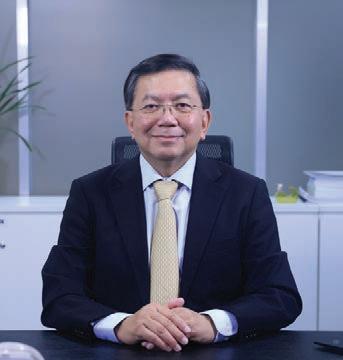
“Taiwan offers two core advantages: exceptional talent and a manufacturingoriented mindset,” Liu explains.
“Our teams are not only scientifically trained—they think like manufacturers, which is rare in the CDMO world.”
Infrastructure is another key differentiator. EirGenix operates Taiwan’slargest biologics facility, equipped with twelve 2,000-liter bioreactors. Looking ahead, the company plans to expand its production capacity with an additional 150,000 liters of bioreactor volume to meet the expected demand from new commercial projects.
The global landscape appears to be shifting in EirGenix’s favor. Regulatory pathways for biosimilars are poised to become more streamlined over the next few years—potentially cutting development costs by up to 60%. Meanwhile, the proposed U.S. Biosecure Act, which seeks to limit reliance on Chinese biotech suppliers, could open new doors for trusted, regionally aligned partners like EirGenix.
With a strong domestic ecosystem, global ambitions, and a relentless focus on quality, EirGenix isn’t just riding the wave of biomanufacturing’sfuture— it’s helping shape it



























































































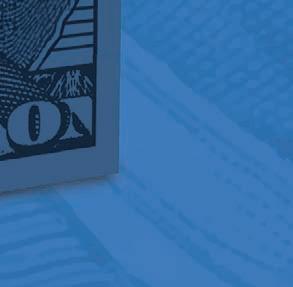





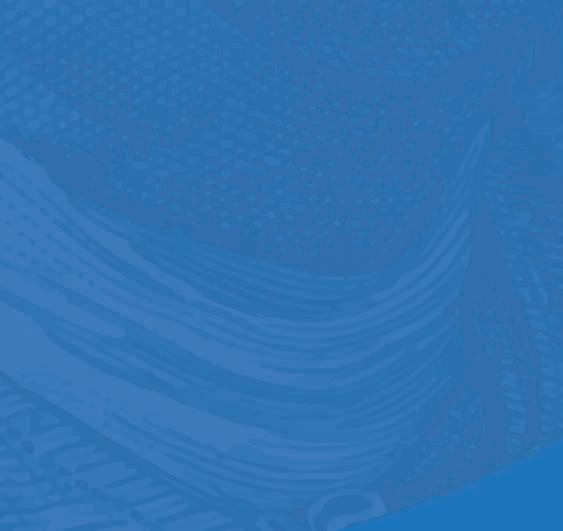
Want to buy a top-tier franchise that’s growing and profiting? These brands rise above the rest.
by TRACY STAPP HEROLD
CONTENTS and These brands rise above the rest.

If you want to buy a franchise, start by asking yourself: “What’s my appetite for risk?”
You could bet on a new franchise, join a small but stable one, or pick many other pathways. But if you want to shoot for the top performers, then this list is for you. On the following pages, we list the “best of the best”—which is what we call the brands that ranked at the very top of their industry categories in our Franchise 500 ranking. To put that into context: More than 1,300 companies applied for our ranking, and now we’re showing you the most elite tier—the brands that outscored all their competitors. In this list, you’ll find the top brand in every conceivable franchise category—from tried-and-true ones like Childcare, Pizza, and Restoration Services to new, emerging categories like Autism Services and Self-Pour Bars. Like every franchise brand applying
for the 2025 Franchise 500, these companies were evaluated and scored based on more than 150 data points in the areas of costs and fees, system size and growth, franchisee support, brand strength, and financial strength and stability. Based on their scores, they were ranked against all other applicants, and their rankings placed them ahead of all other brands within their categories.
Remember as you peruse this list that it is not intended as an endorsement of any particular company. These are the No. 1 companies based on our criteria, but you will have your own criteria for deciding what would be the best franchise opportunity for you, so it’s important to always do your own homework before investing in any brand. Always carefully read the company’s legal documents, consult with an attorney and an accountant, and talk to current and former franchisees.

AUTOMOTIVE
Appearance Services
Ziebart Auto detailing, films, appearance and protection services
STARTUP COST
$470.1K-$944K
TOTAL UNITS
(Franchised / Co.-Owned) 339/11
Oil-Change Services
Valvoline Instant Oil Change
Oil changes and preventive maintenance
STARTUP COST
$193.4K-$3.5M
TOTAL UNITS
(Franchised / Co.-Owned) 926/881
Repair & Maintenance Services
Midas
Auto repair and tires
STARTUP COST
$341.7K-$916.9
TOTAL UNITS
(Franchised / Co.-Owned) 1,971/0
Wheels & Tires
Big O Tires
Tires, tire services, auto products
STARTUP COST
$511.5K-$1.9M
TOTAL UNITS
(Franchised / Co.-Owned) 463/0
Window Tinting
Tint World
Auto, home, and business window tinting; vehicle wraps, mobile electronics, auto accessories, detailing services
STARTUP COST
$239.95K-$449.95K
TOTAL UNITS
(Franchised / Co.-Owned) 155/0
Miscellaneous Automotive Products & Services Tommy’s Express Car Wash Car washes
STARTUP COST
$4.9M-$9.3M
TOTAL UNITS
(Franchised / Co.-Owned) 254/11
$96.7K-$122.5K
TOTAL UNITS (Franchised / Co.-Owned) 485/1
Business Coaching & Consulting
The Entrepreneur’s
Source
Franchise/business
coaching and development
STARTUP COST
$114.4K-$133.5K
TOTAL UNITS (Franchised / Co.-Owned) 242/0
Coworking Spaces Office Evolution
Virtual office services, coworking spaces, executive-suite and conference-room rentals
STARTUP COST
$187.8K-$2.5M
TOTAL UNITS (Franchised / Co.-Owned) 80/0
$44.6K-$233.3K TOTAL UNITS (Franchised / Co.-Owned) 205/83
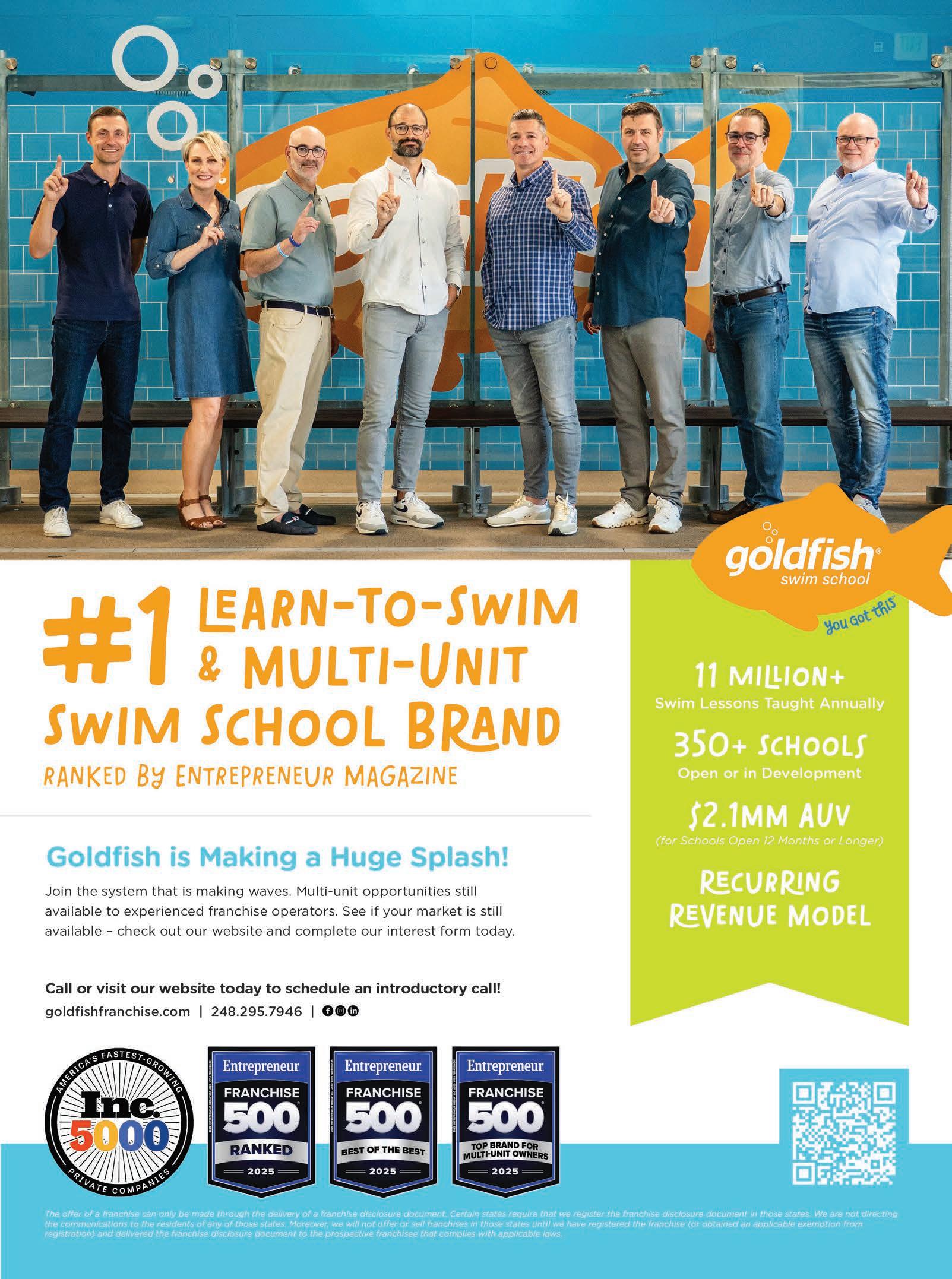











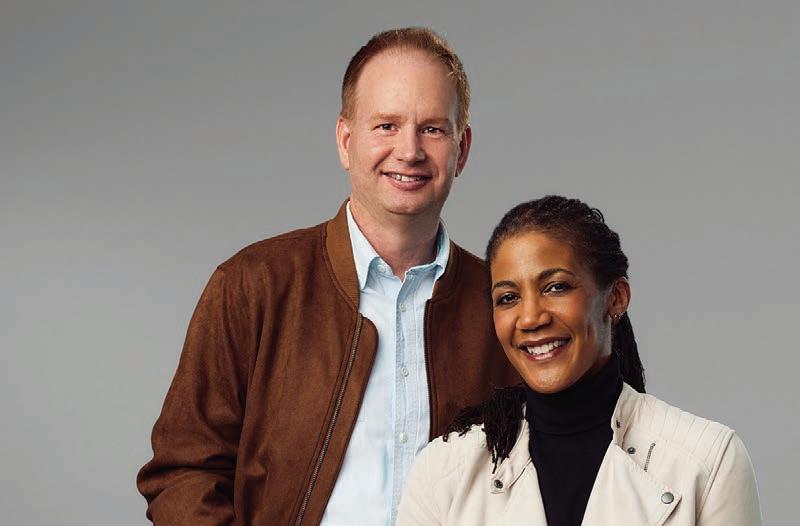



















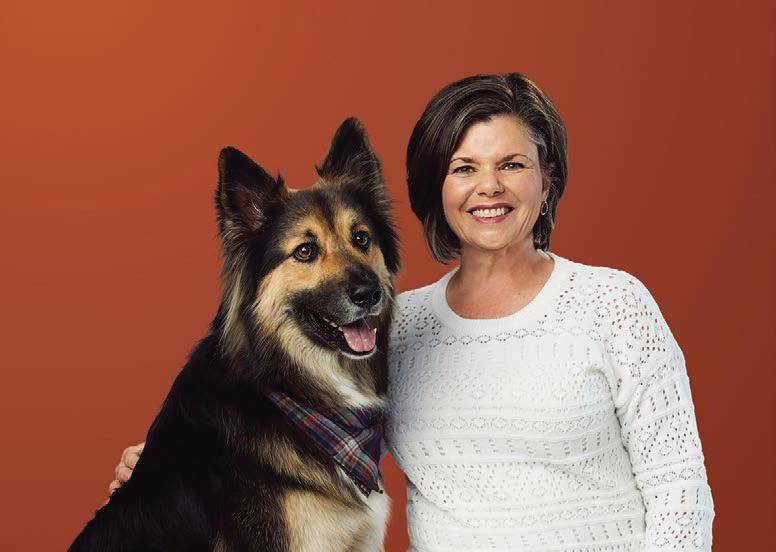







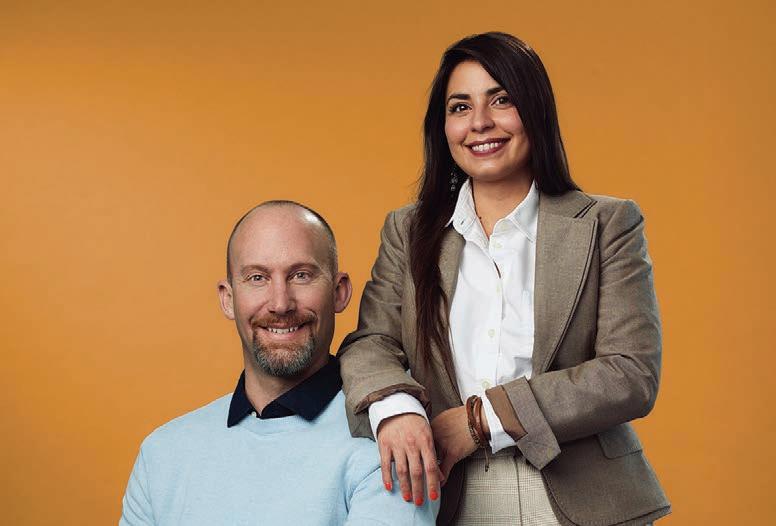















$132K-$391K
/ Co.-Owned)
$780.8K-$5.6M
Children’s Enrichment Programs: Music School of Rock Music education
STARTUP COST
$387.3K-$663.7K
TOTAL UNITS (Franchised / Co.-Owned) 331/50
Children’s Enrichment Programs: STEM Snapology STEAM education programs STARTUP COST
$75.3K-$541.5K
TOTAL UNITS
(Franchised / Co.-Owned) 182/2
Children’s Enrichment Programs: Miscellaneous Drama Kids After-school drama classes and summer camps
STARTUP COST
$43.5K-$64.5K
TOTAL UNITS
(Franchised / Co.-Owned) 214/0
Children’s Fitness Programs: Sports D-BAT Academies
Indoor baseball and softball training, batting cages, merchandise
STARTUP COST
$536.5K-$1M
TOTAL UNITS
(Franchised / Co.-Owned) 163/0
Children’s Fitness Programs: Miscellaneous KidStrong
Physical fitness, leadership, and confidence-building training for children
STARTUP COST
$342.7K-$691.2K
TOTAL UNITS
(Franchised / Co.-Owned) 118/8
Children’s Retail Once Upon A Child
New and used children’s clothing, equipment, and accessories
STARTUP COST
$327K-$462K
TOTAL UNITS
(Franchised / Co.-Owned) 430/0
Fundraising
Fundraising University
Fundraising
STARTUP COST
$102.2K-$108.3K
TOTAL UNITS
(Franchised / Co.-Owned) 65/9
What qualities do you think set the best franchisors apart?
“They’re visionaries, with a game plan. They know how to build a brand that’s not just a business, but a movement, and are set apart by their dedication to transparency, consistency, and culture. They give their franchisees the tools, the playbook, and the freedom to win, without losing the essence of what makes the brand great.”
—Adam
—Adam Sartin, vice president of franchise growth and development, Motto Mortgage
vice of franchise growth and development, Motto Mortgage
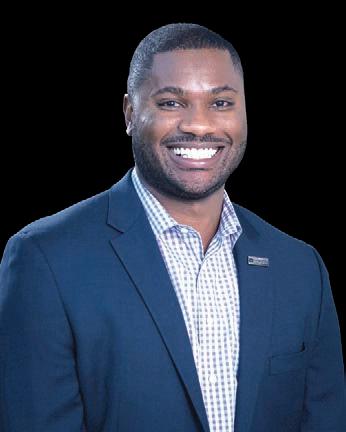
“Good franchisors listen to their owners. Great franchisors create advisory councils and have a feedback loop that allows franchisees to share what is working and opportunities for improvement. The best of the best aggregate mistakes and create open channels for the sharing of best practices among franchisees.”
—Eric Martin, senior vice president of franchise development, Lawn Doctor
—Eric senior vice of franchise Lawn Doctor
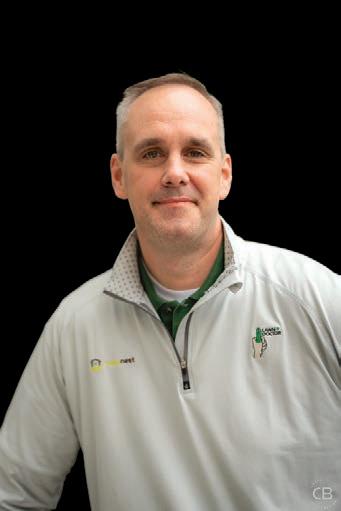
“The best franchisors have an entrepreneurial mindset. They approach the business with a creative and innovative spirit, always looking for new opportunities and ways to grow and evolve. An entrepreneurial franchisor is willing to take calculated risks, adapt to changes in the market, and be proactive in driving the success of their franchise network.” —Doug Dickison, founder and chairman, Destination Athlete
Doug Dickison, founder and
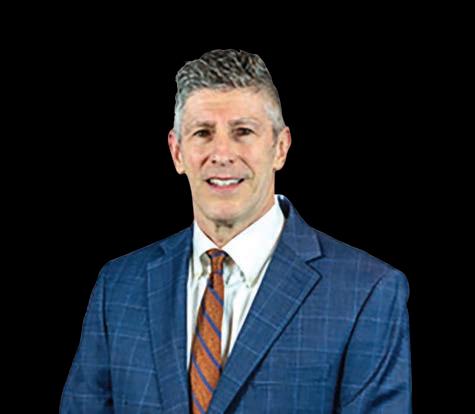



























$2.6M-$6M
/ Co.-Owned) 182/6
$73.8K-$165.9K TOTAL
Business
Acai Bowls Playa Bowls
Acai, pitaya, coconut, chia-pudding, and oatmeal bowls; smoothies, juices STARTUP COST
$188.7K-$636.5K
TOTAL UNITS
(Franchised / Co.-Owned) 239/24
Asian Food Jinya Ramen Bar Ramen, tapas, craft beer STARTUP COST
$1.4M-$3M
TOTAL UNITS (Franchised / Co.-Owned) 60/3
Baked Goods: Cookies Great American Cookies Cookies, cookie cakes, brownies STARTUP COST
$308.5K-$484.7K
TOTAL UNITS (Franchised / Co.-Owned) 412/0
Baked Goods: Doughnuts Shipley Do-Nuts Doughnuts, kolaches, pastries, coffee STARTUP COST
$496.4K-$1M
Breakfast/Brunch Restaurants IHOP
Family restaurants
STARTUP COST
$1.8M-$4.4M
TOTAL UNITS (Franchised / Co.-Owned) 1,815/0
Pizza Restaurants
Boston’s Pizza Restaurant & Sports Bar Restaurants and sports bars
STARTUP COST
$1M-$2.9M
TOTAL UNITS
(Franchised / Co.-Owned) 414/2
Self-Pour Bars
Tapville Social Self-service beer taproom restaurants/kiosks/mobile units
STARTUP COST
$147.8K-$2.1M
TOTAL UNITS
(Franchised / Co.-Owned) 29/2
Sports Bars/Pubs Buffalo Wild Wings Wings, bar food, alcohol STARTUP COST
$2.9M-$4.8M
TOTAL UNITS
(Franchised / Co.-Owned) 598/652
Steakhouses Golden Corral Family steakhouses, buffets, and bakeries
STARTUP COST
$2.1M-$8.5M
TOTAL UNITS
(Franchised / Co.-Owned) 352/3
Miscellaneous Full-Service Restaurants
Denny’s Full-service restaurants STARTUP COST
$953.4K-$3.1M
TOTAL UNITS (Franchised / Co.-Owned) 1,470/64
TOTAL UNITS
(Franchised / Co.-Owned) 345/11
Baked Goods: Pretzels Auntie Anne’s Soft pretzels STARTUP COST
$149.6K-$624.8K
TOTAL UNITS (Franchised / Co.-Owned) 2,006/11
Baked Goods: Miscellaneous Cinnabon Cinnamon rolls, baked goods, coffee STARTUP COST
$254.8K-$674.4K
TOTAL UNITS (Franchised / Co.-Owned) 1,956/28
Bakery Cafes Paris Baguette Bakery cafes STARTUP COST
$718.1K-$1.8M
TOTAL UNITS (Franchised / Co.-Owned) 3,883/19
Chicken Popeyes Louisiana Kitchen Fried chicken, seafood, biscuits
STARTUP COST
$471K-$3.9M
TOTAL UNITS (Franchised / Co.-Owned) 4,756/40
Coffee Dunkin’ Coffee, doughnuts, baked goods
STARTUP COST
$435.5K-$1.8M
TOTAL UNITS (Franchised / Co.-Owned) 13,758/32
Frozen Desserts: Ice Cream Baskin-Robbins Ice cream, frozen beverages
COST $307.4K-$657.9K
UNITS (Franchised / Co.-Owned) 7,755/0 Frozen Desserts: Ices Kona Ice Shaved-ice trucks STARTUP COST $173.4K-$222.1K TOTAL UNITS (Franchised / Co.-Owned) 1,810/4 Frozen Desserts: Miscellaneous Yogen Fruz Frozen yogurt, soft-serve ice cream STARTUP COST
$285.1K-$754.7K TOTAL UNITS (Franchised / Co.-Owned) 516/1
Hamburgers Culver’s Frozen custard, specialty burgers STARTUP COST $2.8M-$6.9M TOTAL UNITS (Franchised / Co.-Owned) 971/7 Hawaiian Food L&L Hawaiian Barbecue Hawaiian-style food STARTUP COST $210.2K-$839.9K
TOTAL UNITS (Franchised / Co.-Owned) 220/7
Dogs Wienerschnitzel Hot dogs, ice cream STARTUP COST $600K-$2.2M
TOTAL UNITS (Franchised / Co.-Owned) 330/0






Mediterranean Food Nick the Greek Souvlaki and gyros STARTUP COST
$414.8K-$597K
TOTAL UNITS
(Franchised / Co.-Owned) 68/10
Mexican Food Taco Bell
Mexican-inspired food
STARTUP COST
$610.8K-$3.98M
TOTAL UNITS
(Franchised / Co.-Owned)
8,077/488
Pizza Papa Johns Pizza STARTUP COST
$272.9K-$989.4K
TOTAL UNITS
(Franchised / Co.-Owned)
5,501/570
Poke Pokemoto
Poke bowls, burritos, salads, boba tea
STARTUP COST
$184.5K-$378.4K
TOTAL UNITS
(Franchised / Co.-Owned) 36/3
Sandwiches: Philly
Cheesesteak Charleys Cheesesteaks & Wings
Philly cheesesteaks, fries, wings, lemonade
STARTUP COST
$202.1K-$935.7K
TOTAL UNITS
(Franchised / Co.-Owned) 735/57
Sandwiches: Submarine Jersey Mike’s Subs Subs and Philly cheesesteaks
STARTUP COST
$203.6K-$1.3M
TOTAL UNITS (Franchised / Co.-Owned)
2,825/36
Sandwiches: Miscellaneous Arby’s
Sandwiches, fries, shakes
STARTUP COST
$644.95K-$2.5M
TOTAL UNITS
(Franchised / Co.-Owned)
2,516/1,097
Seafood Captain D’s Seafood
STARTUP COST
$898.6K-$1.4M
TOTAL UNITS
(Franchised / Co.-Owned) 242/295
Smoothies/Juices Tropical Smoothie Cafe
Smoothies, salads, wraps, sandwiches, flatbreads
STARTUP COST
$300K-$720.5K
TOTAL UNITS
(Franchised / Co.-Owned) 1,550/1
Teas
Gong cha
Bubble tea
STARTUP COST
$174.5K-$619.5K
TOTAL UNITS
(Franchised / Co.-Owned) 2,027/90
Miscellaneous Quick-Service Restaurants
Clean Eatz
Healthy food STARTUP COST
$353.7K-$798K
TOTAL UNITS
(Franchised / Co.-Owned) 107/2
Candy Kilwins
Chocolates, fudge, ice cream
STARTUP COST
$239.3K-$870.1K
TOTAL UNITS
(Franchised / Co.-Owned) 163/4
Miscellaneous Food/Beverage Businesses
Nothing Bundt Cakes
Bundt cakes and gifts
STARTUP COST
$585K-$1.1M
TOTAL UNITS
(Franchised / Co.-Owned) 595/17
HEALTH & WELLNESS
Assisted Stretching StretchLab
Assisted stretching
STARTUP COST
$156.2K-$386.1K
TOTAL UNITS
(Franchised / Co.-Owned) 514/0
What is your company doing to stay at the top of your industry?
“We’ve found the perfect sweet spot by cobranding Great American Cookies with our sister brand, Marble Slab Creamery. Since launching this concept in 2014, we’ve grown to over 170 cobranded locations worldwide, with franchisees seeing a 10% to 20% lift in incremental sales.” —Allison Lauenstein, president, Great American Cookies
—Allison
Lauenstein, —Adam vice of franchise development, CertaPro Painters

“We stay ahead by continuously investing in technology, enhancing customer experience, and listening closely to our franchise owners. Our focus on operational excellence, brand consistency, and local community engagement helps drive both customer loyalty and raving fans.” —Adam Biedenbender, vice president of franchise development, CertaPro Painters
“We’ve focused on delivering a personalized, world-class customer service model that is re silient during uncertain times. And we continue to grow and outperform market conditions by relentlessly listening to our franchisees and customers and pursuing opportunities that earn our customers’ loyalty.” —Steve Chambers, vice president, retail and business development, The UPS Store
retail and business devel-
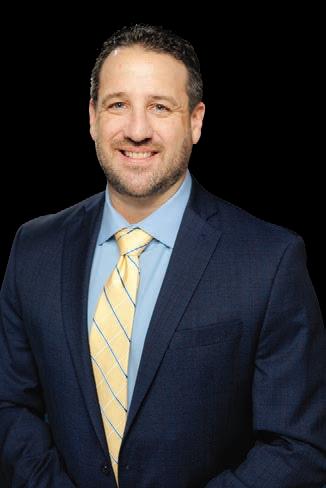
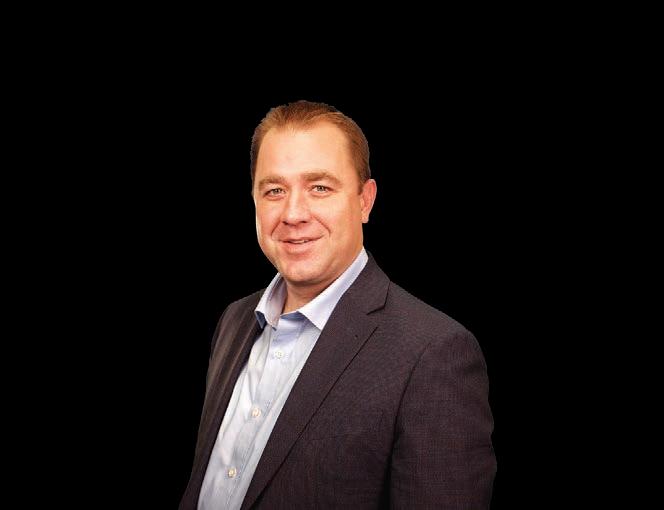




















































































































Miscellaneous Health Services Pearle Vision
Eye care and eyewear
STARTUP COST
$70.9K-$1.3M
TOTAL UNITS (Franchised / Co.-Owned) 461/106
Concrete Coatings
Granite Garage Floors
Garage floor coatings
STARTUP COST
$227.4K-$390.4K
TOTAL UNITS (Franchised / Co.-Owned) 55/0
Fencing
Superior Fence & Rail
Fence sales and installation
STARTUP COST
$130.5K-$206.8K
TOTAL UNITS (Franchised / Co.-Owned) 295/2
Flooring Floor Coverings International Flooring STARTUP COST
$180.4K-$243.5K
TOTAL UNITS (Franchised / Co.-Owned) 273/0
Insulation USA Insulation
Home insulation and energy-efficient products STARTUP COST
$299.5K-$470K
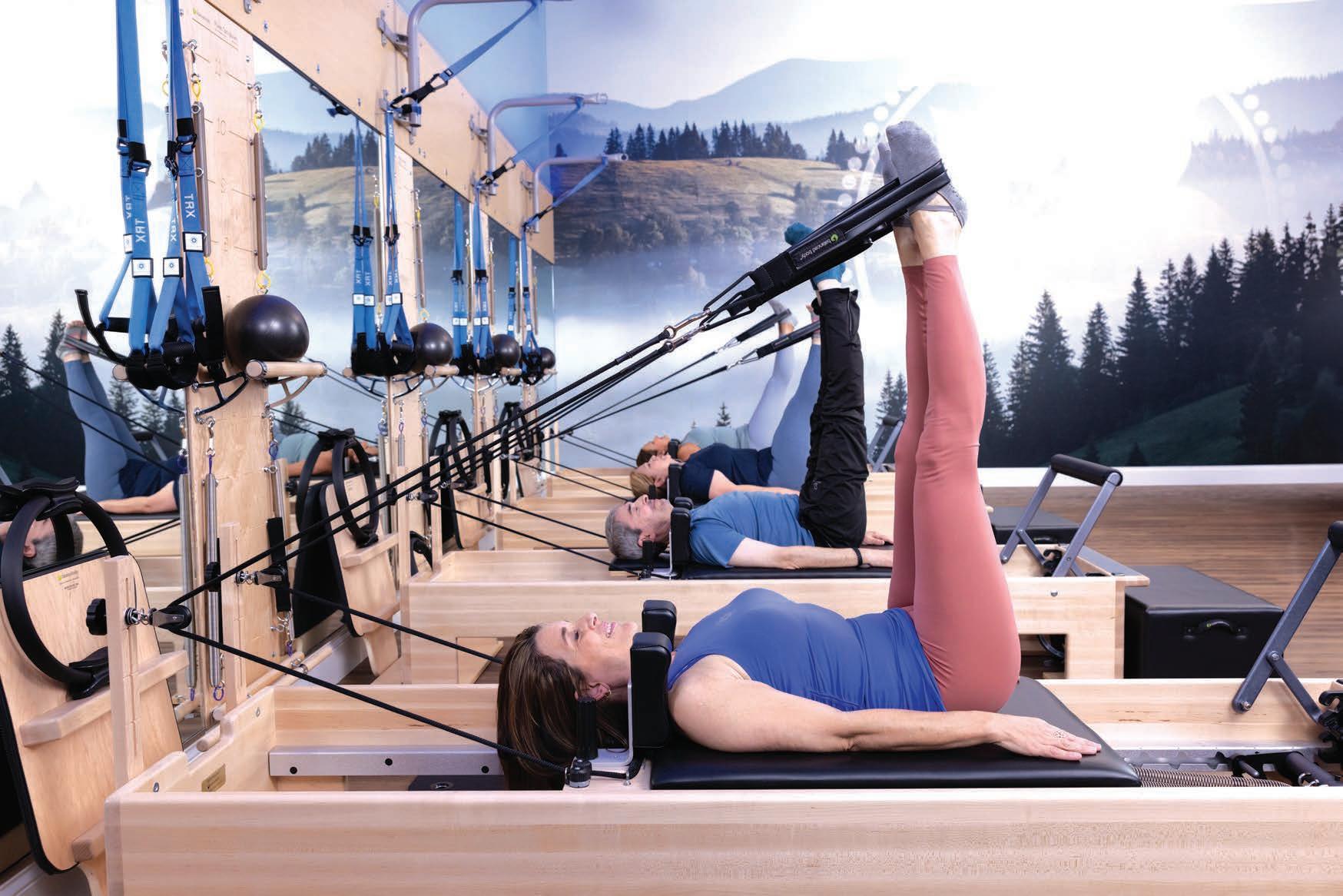
$254.3K-$520.8K
$164.5K-$610.1K
STARTUP COST
$145.8K-$509K
TOTAL UNITS
(Franchised / Co.-Owned) 535/60
Miscellaneous Health Products The Good Feet Store
Arch supports, related products
STARTUP COST
$255.5K-$595K
TOTAL UNITS
(Franchised / Co.-Owned) 254/21
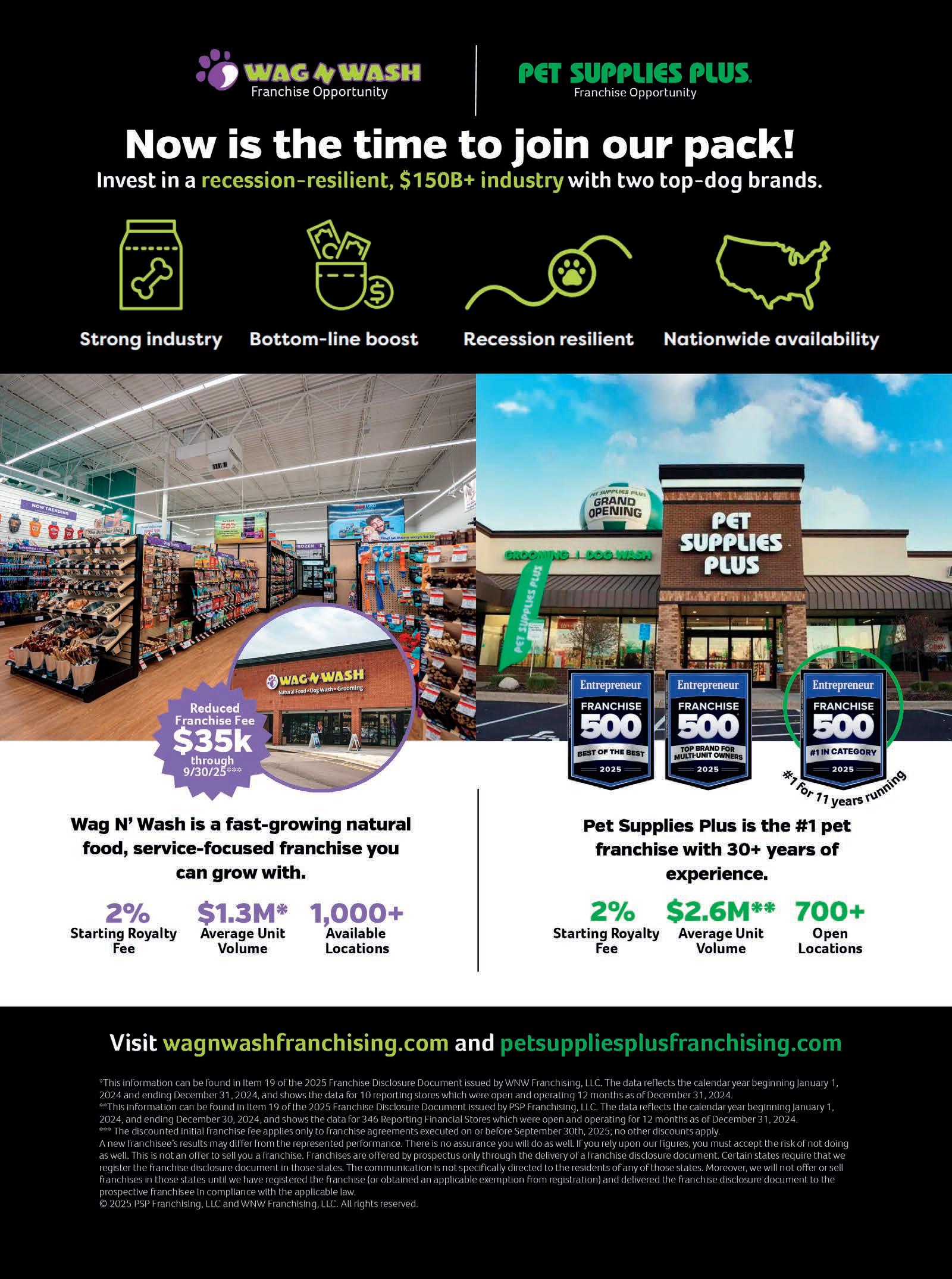
Home Repairs/Handyman Services

$147.2K-$427.2K
COST
$80.7K-$159.4K
TOTAL UNITS
(Franchised / Co.-Owned) 166/0
Drywall Repair
The Patch Boys Drywall repair
STARTUP COST
$59.4K-$90.4K
TOTAL UNITS
(Franchised / Co.-Owned) 290/0
Electrical Services
Mr. Electric
Electrical services
STARTUP COST
$152K-$314.5K
TOTAL UNITS
(Franchised / Co.-Owned) 237/0
Garage-Door Repair/ Installation
Precision Garage Door Service
Residential garage door repair, installation, and service
STARTUP COST
$145.4K-$317.9K
TOTAL UNITS
(Franchised / Co.-Owned) 133/0
Glass Repair
Glass Doctor
Auto/residential/ commercial glass installation, repair, and replacement
STARTUP COST
$152.9K-$317.1K
TOTAL UNITS
(Franchised / Co.-Owned) 186/0
Grout Maintenance
Sir Grout
Residential hard surface restoration and maintenance
STARTUP COST
$127.4K-$197.1K
TOTAL UNITS
(Franchised / Co.-Owned) 71/0
Ace Handyman Services
Residential and commercial repairs, restoration, and maintenance
STARTUP COST
$131.1K-$220.3K
TOTAL UNITS
(Franchised / Co.-Owned) 367/13
HVAC/Duct-Cleaning Services
Aire Serv
HVAC services
STARTUP COST
$107.3K-$253.1K
TOTAL UNITS
(Franchised / Co.-Owned) 245/0
Lawn & Tree Care
Lawn Doctor
Lawn, tree, and shrub care; mosquito and tick control
STARTUP COST
$133.5K-$149K
TOTAL UNITS (Franchised / Co.-Owned) 644/0
Leather & Vinyl Repair
Color Glo
Leather, vinyl, fabric, carpet, and surface repair and restoration
STARTUP COST
$63.3K-$68.4K
TOTAL UNITS
(Franchised / Co.-Owned) 139/0
Odor Control
Aire-Master
Commercial scent marketing and odor control services
STARTUP COST
$45.9K-$171.4K
TOTAL UNITS (Franchised / Co.-Owned) 115/7
Pavement Maintenance
SealMaster
Pavement maintenance products and equipment
STARTUP COST
$579.8K-$924.5K
TOTAL UNITS (Franchised / Co.-Owned) 42/4
Pest Control Mosquito Shield Outdoor pest control STARTUP COST
$120.5K-$157.95K
TOTAL UNITS (Franchised / Co.-Owned) 435/1


/ Co.-Owned) 402/256
Waxing European Wax Center
Body waxing services, skin and beauty products
STARTUP COST
$363.6K-$641.95K
TOTAL UNITS (Franchised / Co.-Owned) 1,053/5
Miscellaneous Personal-Care Businesses
$173.6K-$203.3K
TOTAL UNITS
(Franchised / Co.-Owned) 395/0
Pet Care Dogtopia
Dog daycare, boarding, and spa services
STARTUP COST
$607.8K-$1.3M
TOTAL UNITS
(Franchised / Co.-Owned) 270/6
Pet
$817.7K-$1.3M
TOTAL UNITS (Franchised / Co.-Owned) 500/232
$3.6M-$8.3M
TOTAL UNITS (Franchised / Co.-Owned)
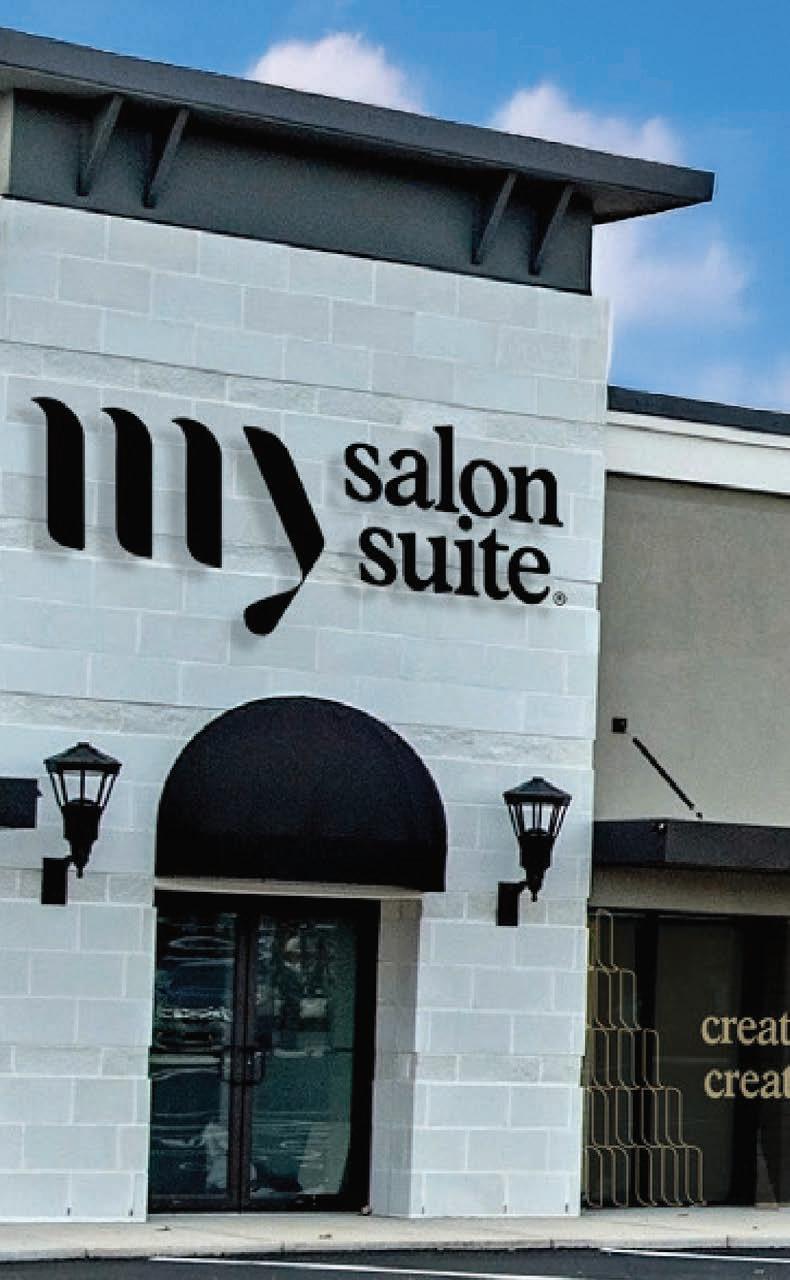
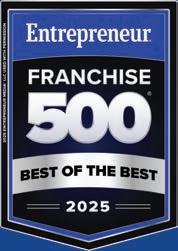
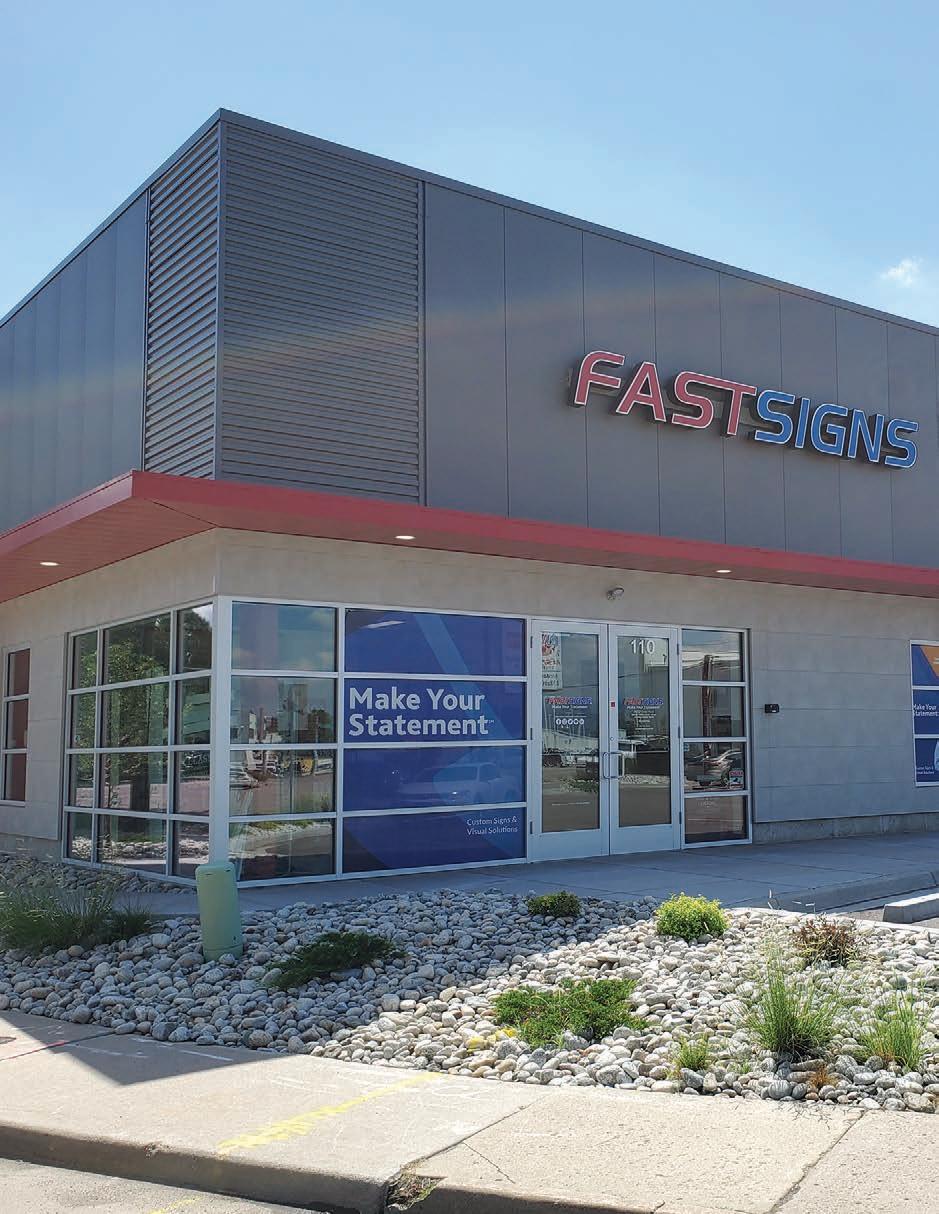


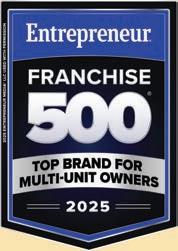
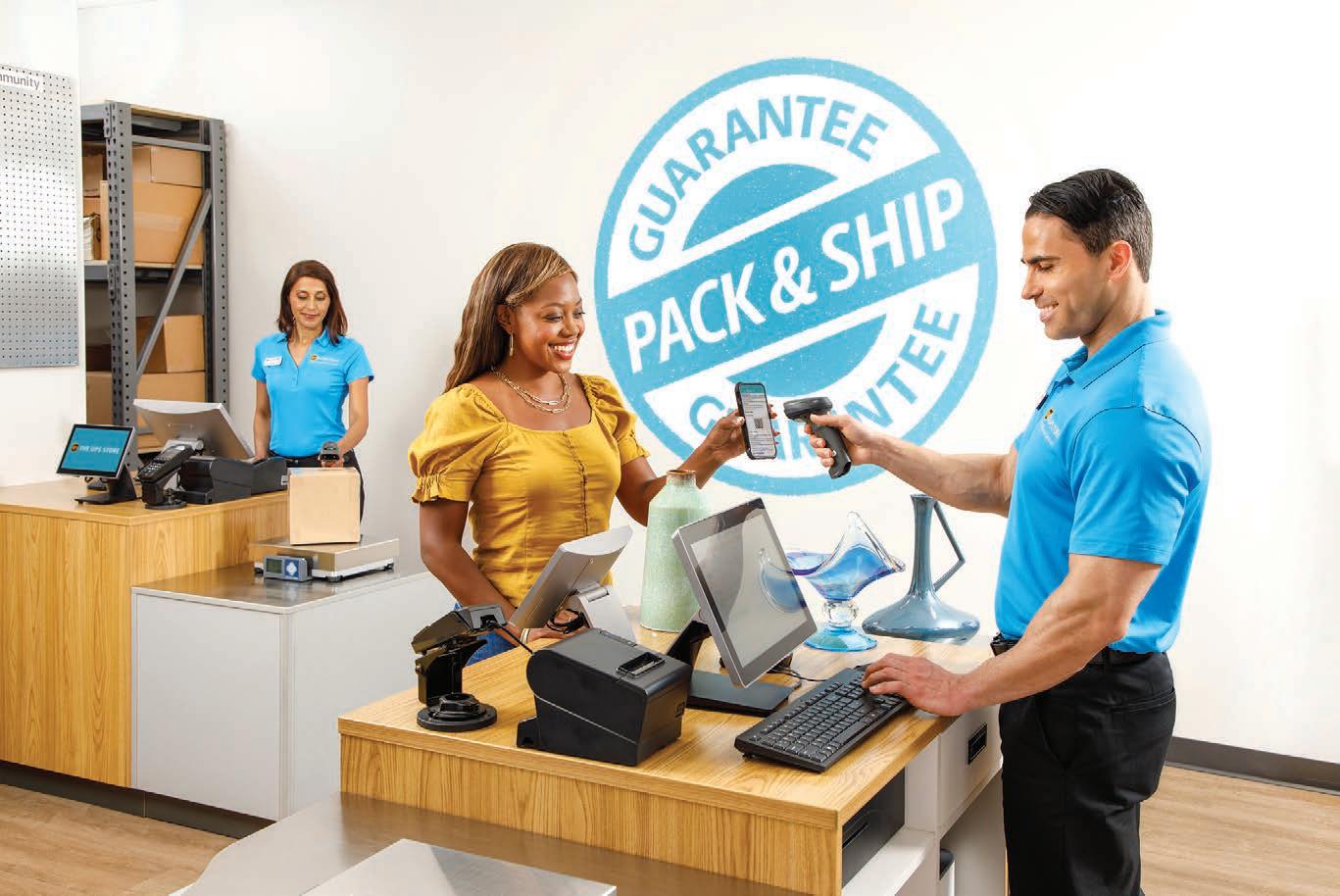
Home Inspections WIN Home Inspection Home inspections
STARTUP COST
$49.7K-$55.4K
TOTAL UNITS
(Franchised / Co.-Owned) 259/0
Embroidery & Screen Printing Fully Promoted Branded products and marketing services
STARTUP COST
$120K-$354.3K
TOTAL UNITS (Franchised / Co.-Owned) 273/0
Estate Sales Caring Transitions
Senior transition and relocation, online auctions, and estate liquidation management
STARTUP COST
$63.6K-$108.6K
TOTAL UNITS (Franchised / Co.-Owned) 344/0
(Franchised / Co.-Owned) 291/0
Hydraulic Hose Services PIRTEK
Hydraulic and industrial hose maintenance, repair, and replacement
STARTUP COST
$216.4K-$619.3K
TOTAL UNITS
(Franchised / Co.-Owned) 707/0
Laboratory Services Any Lab Test Now Health and wellness, drug and alcohol, and DNA lab testing services
STARTUP COST
$171.4K-$298.4K
TOTAL UNITS
(Franchised / Co.-Owned) 237/7
Laundromats
WaveMax Laundry
Laundromats
STARTUP COST
$351.5K-$1.5M
TOTAL UNITS
(Franchised / Co.-Owned) 55/1
Locksmith Services Pop-A-Lock Mobile locksmith and security services
STARTUP COST
$169.6K-$227.6K
TOTAL UNITS (Franchised / Co.-Owned) 445/7
Moving/Junk-Removal Services Two Men and a Truck
Moving, storage, and junk removal services
STARTUP COST
$107.1K-$538.7K
TOTAL UNITS
/ Co.-Owned)
Be a part of the hottest and fastest growing full size fitness franchise.
• IndustryLeader: Recognized as the most competitive and innovative brand in the $40 billion fitness industry
• Award-WinningExcellence: Ranked #1 in the Fitness Category for 2025 by Entrepreneur Magazine
• IconicBrandLegacy: A trusted name in fitness with over 35 years of history and industry expertise
• ImpressiveFranchiseGrowth: Over 1,600 franchise rights sold, showcasing strong market demand.
• GlobalImpact: One of the largest member bases in the worldwide fitness industry

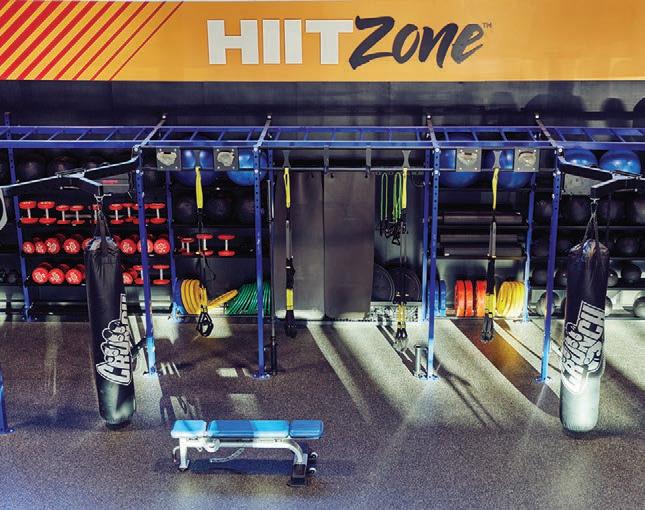

Inquire at crunch.com/franchise for more info or email John Merrion at john.merrion@crunch.com to learn more about available territories. at or Merrion more
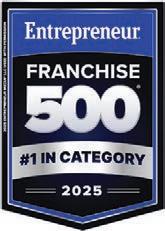













When Rochelle Hendricks jumped into a new career, she bet on herself—and brought her family along.
by CARL STOFFERS
Rochelle Hendricks moves fast.
In 2022, a decade after opening her own insurance brokerage, she decided to try her hand at the siding business—fast-tracking the purchase of an Ideal Siding franchise in Ontario, Canada, in less than two months. Over the next two years, she opened three more locations and has now surpassed $1 million in annual sales.
But what’s most important to her? It isn’t just the numbers. It’s the way her business benefits her family. She’s transformed her Ideal Siding franchises into a true family operation, including immediate and extended relatives. Here, she shares how she built momentum, how working with family has been a game changer, and the advice she has for women ready to bet on themselves.
You opened your siding franchise in just six weeks. What made you move so fast?
I had gotten interested in the siding business because it’s visual—people notice how beautiful the house is from the curb. And I briefly looked at buying a business a couple of years previously, but it was an individual person and came with no franchise support, so I stepped away. When I heard of Ideal Siding and found out that they do the marketing and provide the leads, I was interested. Once I saw the head office and how much passion there was for the business, it was an easy decision for me. I moved quickly, because at that point, I already had a firm belief in the brand.
What’s been the key to scaling your franchises?
It definitely didn’t come from aggressive sales tactics. It came
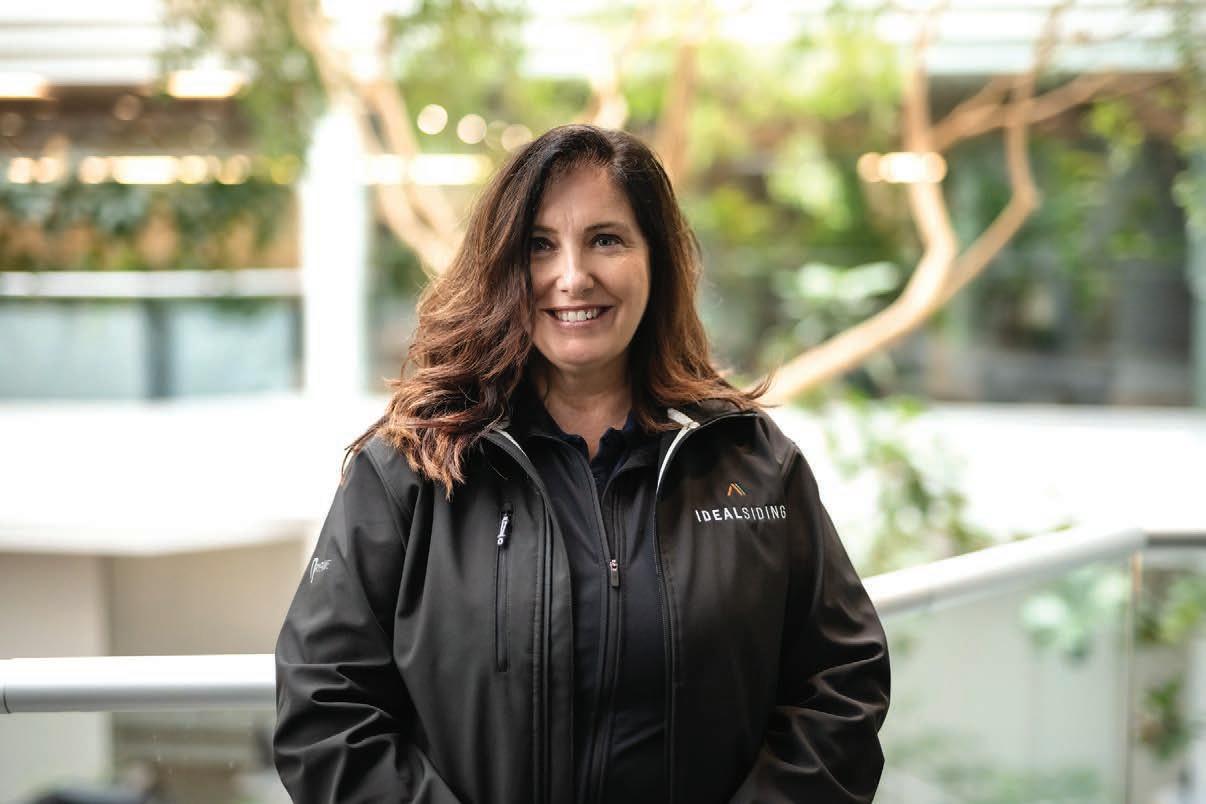
from building relationships and establishing trust with clients and partners. It happened organically, by surrounding myself with family and friends who share the same passion for growth via quality and relationships as I do.
What’s it like working so closely with your family every day?
I love it. I’ve surrounded myself with my oldest son and other family members. My partner in the Cambridge area is my daughter-in-law’s father. My partner in the Muskoka area is my niece’s father-inlaw. I wanted to build something sustainable where we’d be known for quality and consistency, and I knew they had the same goal.
How do you manage boundaries when your business is a family affair?
We respect our personal space.
Business is one thing, personal life is another thing. The staff meets once a month at work to address any issues or difficulties we encounter and find solutions together. All stakeholders have to come away with a win-win situation. That’s been the heartbeat and culture in our company, and what keeps things balanced between that personal and business relationship.
Construction is still a male-dominated sector. Have you faced any pushback as a woman leading in this space? When I first started, some people looked at me like I was playing at this. But it’s also worked as an advantage,
because I’ve had clients tell me they’re happy dealing with a woman. If you have a passion and believe in it, just do it. I didn’t have any safety net, I just had that deep belief in doing things differently in the construction world—that we make sure there are standards and protocols in the industry—and that women can be valuable to this industry.
Are there any lessons you’ve learned while scaling?
In the beginning, I was hard on myself—mentally beating myself up because I expected to know everything in the beginning. I realize now it takes time to learn the business and best practices.
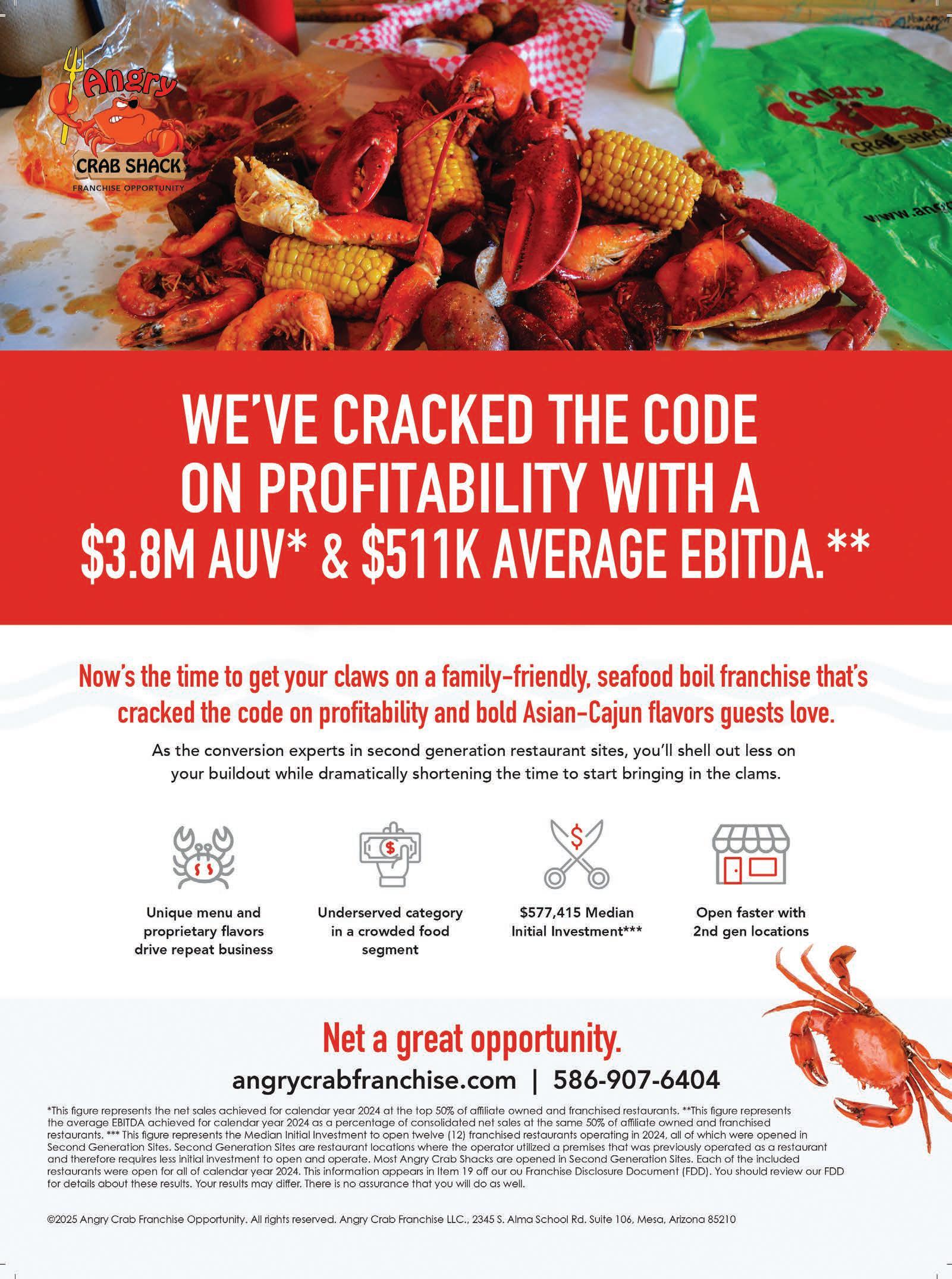
Susan Valverde built thriving franchises in economically disadvantaged areas. Now she’s leading other franchisees to success. Her game plan: Make an impact, and revenue will follow.
by CARL STOFFERS
Susan Valverde is the brand president of Sylvan Learning, a tutoring and test prep center franchise. She describes her career as “a series of fortunate but very unexpected turns.”
Valverde was born in northern Mexico, immigrated to the U.S. as a child in the early 1980s, and learned entrepreneurship from her parents, who built a truck ing business in Mississippi. She became the first college graduate in her family, then worked in banking and economic develop ment—until her career changed in an unforeseen way.

truckdeveloprun-
It happened in the year 2000, when Valverde’s husband needed to take a professional exam. He did it at a Sylvan Learning franchise location near their south Texas home. While her husband took his test, Valverde observed the center in action. “It just struck a chord,” she recalls. “I saw kids run ning in after a long day of school. I’ve been that kid who needed extra support when I was learning English.”

She saw opportunity. Within weeks, she became a franchisee—and went on to build multiple successful units, which she sold in 2016 in order to join the Sylvan leadership team. She then rose from vice president to chief franchise operations officer—and finally, in 2024, she became president. Here, she shares how her time in the trenches helped define her vision.
Your territories in south Texas were some of the most economically disadvantaged areas in the country, yet they were consistently top performers. What were some challenges you faced in that environment? I hesitate to call them challenges, because I find that areas with limited resources are very resourceful. But there were definite barriers we had to overcome. For instance, all of our marketing messaging was in
English, so we had to roll up our sleeves and translate. Luckily, we’re all bilingual.
What were some initiatives you put in place specific to your clientele?
We created a mobile model so that we could take our tutoring to schools, because in Texas there are some rural pockets that are hard to reach. The other thing that we pioneered in my market is partnering with low-income
access our services.
Is there something about the franchise model that you find particularly effective?
It’s locally owned and operated. To these people that I was trying to partner with, I wasn’t just a vendor. These are folks I run into at the grocery store. We live in the same community. So there’s a level of accountability, acceptance, and true partnership that a corporate-owned business cannot reach.
What was the most challenging part of transitioning from franchisee to corporate leadership?
It required a complete shift in perspective. As a franchisee, I had a very localized scope and saw a direct impact; if I needed to grow, it was within my hands to do that. But if you’re wearing
How has your background as a franchisee influenced you as an executive and a leader?
Because I’ve been in the trenches and understand the sacrifices that a franchisee goes through, that a small business owner goes through, I filter all my decisions through that lens.
Is there an overarching business philosophy that has enabled you to be successful?
What I believe—and this goes for my whole team—is that success is about impact. If we’re seeing students grow, then school districts, communities, and families will embrace what we do. So if we believe in what we’re doing and we do a really great job, we’re winning because of the impact. Then the revenue follows—not the other way around.
• $2.6M average and median gross revenue*
• 160+ centers open or in development across 15 states
• 40% of franchisees own more than one location with 75% of centers owned by Multi-Unit Operators
• Comprehensive support from site selection to grand opening
• Multi-Unit incentives & growth-friendly territories available

“Our biggest motivation in pursuing a franchise was to create a better worklife balance and be more present for our children. Just as important was finding a franchise brand with deep expertise in child care—a trusted partner we could grow with and learn from.”
Bhavna Ajwani | Franchise Owner
It can be an incredible journey—but you must look closely before you buy.
by MATT HALLER, president and CEO, International Franchise Association
People often ask me the same question: “How do I know if franchising is the right decision for me?”
As the leader of the International Franchise Association (IFA), I know some things to be true: Franchising is an incredibly powerful business model. It has opened the door for hundreds of thousands of entrepreneurs as well as millions of employees. And according to IFA members, despite recent macroeconomic challenges, franchisors are seeing more interest from potential franchisees than last year.
But that doesn’t mean franchising is right for everyone, or that every brand is right for you. So here’s what I (and the IFA) always tell people, whenever they ask if they should buy a franchise.
Your north star must be conducting due diligence in the presale process. Gather as many data points as you can to make the most informed decision before investing—and once you’re looking at a brand, focus on these three areas:
1/ Understand the brand. Compare offerings across multiple franchise brands to ensure that the brand is the right fit for your values and interests. This should involve a thorough review of the Franchise Disclosure Document (FDD), as well as a complete understanding of the financial obligations on franchisees—not just initial costs, but ongoing cost requirements and fees, such as marketing, technology, and remodels, and how they may change over time. When franchisees are dissatisfied with their investment, it is often because they did not fully understand the amount and timing of these costs. Any prospective franchi-
sees should also consult with a franchise attorney—a professional who focuses on franchise agreements (which is different from your franchise broker, personal accountant, or attorney). While the FDD contains 23 pieces of critical information, it is an unwieldy and dense document not readily digestible to newcomers.
2/ Talk to franchisees.
It’s important to talk with franchisors, but remember: They’re incentivized to present their brand in the best light. A brand’s franchisees might speak differently. They’ll often give you unfiltered, real-world insights into factors like day-to-day operations, training, how long it took to become profitable,

system changes implemented, and whether they would make the same decision again. That’s why you should speak to as many franchisees as possible. Also, ask to speak to the leadership of the brand’s franchise advisory council and independent franchisee association.
Franchising is an established pathway to business ownership, but success in business is never guaranteed. More importantly, not all franchise brands are created equal.
For example, many franchise brands are very new. It might be exciting to join them, but they can also be riskier, particularly if they’re undercapitalized or have inexperienced leadership. Industry research by FranConnect suggests that many early-stage franchise brands will never make it past 27 locations.
That’s why it’s critical to understand the many factors that impact whether franchise brands continue to grow—
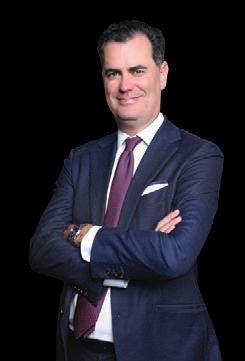
including consumer demand, market conditions, competition, unit economics of the franchised businesses, brand leadership’s experience in franchising, access to capital, and regulatory changes, among others.
Ask yourself if your lifestyle and personality are compatible with handling the ups and downs of small business ownership. Are you prepared to run your own business, build a team of employees, and navigate relationships with suppliers, landlords, and lenders? Are you committed to serving your customers to the fullest—in accordance with the standards established by the franchisor—to protect the equity in your own franchised business, and also that of other franchisees, your employees, and your customers?
To make a franchise succeed, everyone involved must work together. That’s why, ultimately, the question is yours to answer: Once you know all this, is franchising right for you?






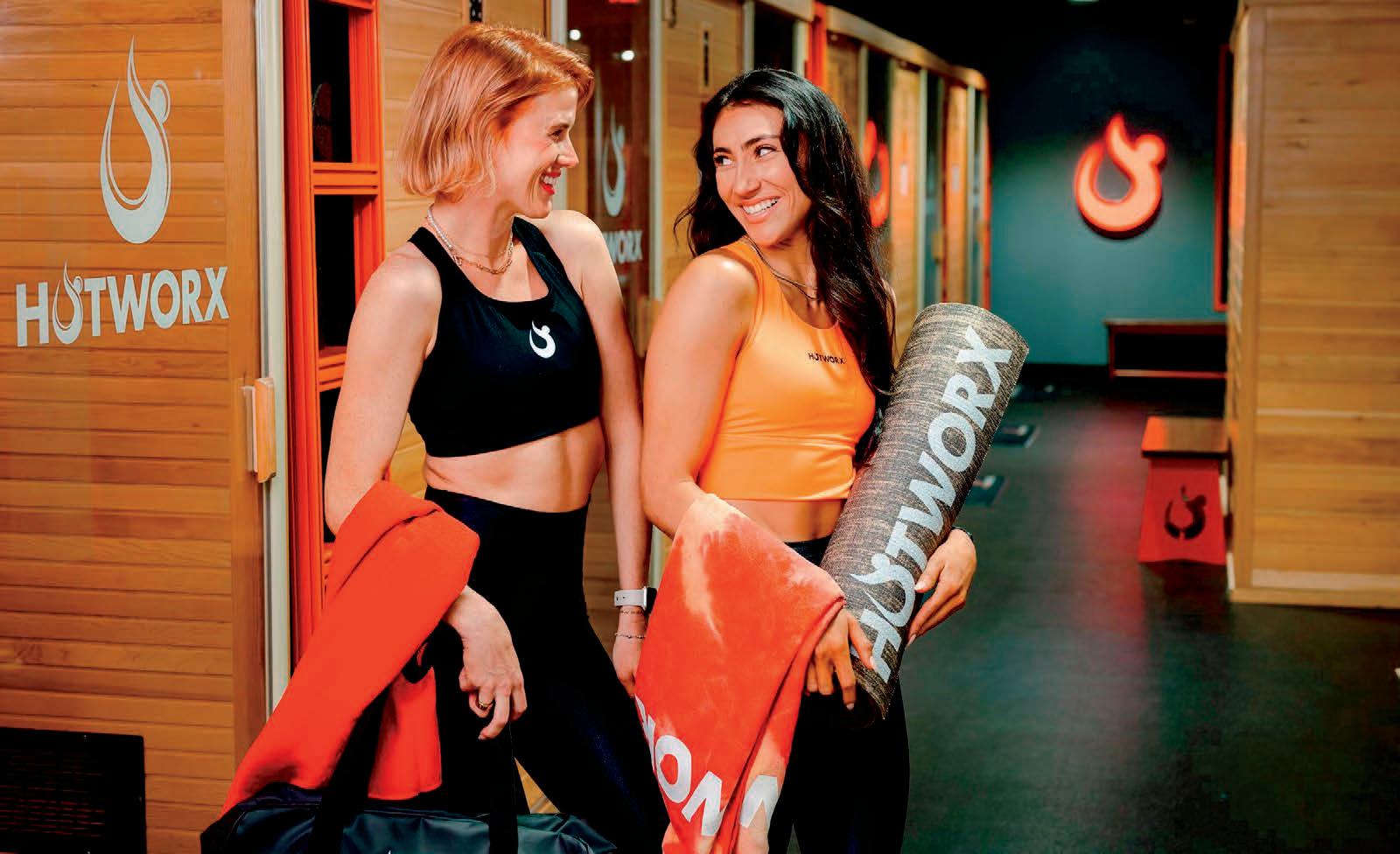


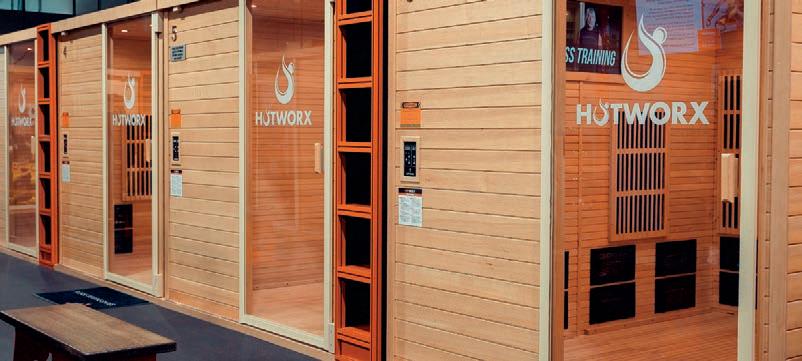
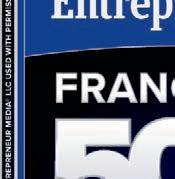




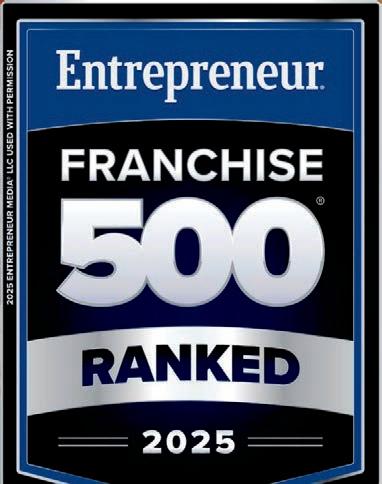



Young entrepreneurs are embracing franchising at a significant clip. They’re changing everything from training to marketing—and they’re teaching older generations a thing or two along the way.
by KIM KAVIN


Picture it: An aspiring franchisee sits in an audience, listening to a franchise CEO speak. Now, a question: How old are those people?
A generation ago, the answer would have been easy: The aspiring franchisee is a late-career corporate professional looking for a change, as is the audience, and the CEO is a near-retirement leader who’s spent a lifetime in franchising. That was the stereotype, anyway, and it often proved to be true.
But by the time Katie Webb wanted to be a franchisee, things looked different. Four years ago, when she was in her early 30s, she attended a Stretch Zone discovery day. That’s when she heard from Stretch Zone CEO Tony Zaccario, who was in his late 20s. “Every time I’d write down a question to ask, it would get answered,” Webb remembers. “Tony was a big part of it. Him being young and energetic and so forward-thinking—he assumed the questions you
would have, and he had the answers for you.”
Fast-forward to today, and Webb is a multi-unit owner with five Stretch Zone locations in Florida. “I would say a good 50% of our franchisees are below 40,” says Zaccario, “and you probably have around 10% in the age-30 range.” Some are even in their 20s. And franchising at large is starting to look different.
Traditionally, becoming a franchisee was considered a “second act” business venture,
but lately, certain types of franchises—those with lower fees and simpler operation parameters—are seeing an increasing number of young applicants. These “first act” entrepreneurs are being exposed to the business model earlier in life, with colleges and universities offering franchising certificates and specialized programs in franchise management. These burgeoning franchisees have also come of age in an era that included the Great Recession and pan-






















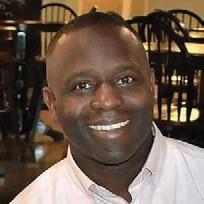













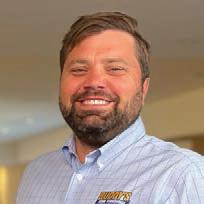































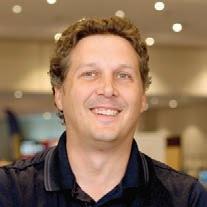

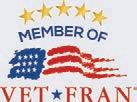





demic layoffs, contributing to the belief among nearly 20% of Gen Z that companies have no loyalty to employees anymore. Their instinct is to carve out their own path: 53% of skilled Gen Z knowledge workers are already freelancing, according to a report from Upwork, and among Gen Zers, 70% of respondents to a Fiverr global study are either actively freelancing or plan to do so in the future.
“The days of people working for major corporations and waiting years and years for an opportunity for a promotion—I don’t think that is attractive to a lot of these franchisees,” Zaccario says. “When you are able to deliver a simple business model that doesn’t require a lot of money or experience, it falls into what they’re looking for.”
Meanwhile, the franchise industry is evolving to make it more accessible to young people. This is according to Daniel Hayes at Hundred Acre Consulting, which has advised entrepreneurs and nonprofits since 2008, and works with more than 800 franchises in 78 industries. Not only are there more low-cost franchises than ever before, he says, but it’s also gotten easier to launch new franchise concepts. “Years ago, you’d have to have several actual businesses working, maybe a little longitudinal information, maybe two or three years of net revenue generation,” he says. “Now, if the business model makes sense and it can be taught and duplicated and be put into a territory with the demographics to help it work, you don’t really need to have five or six franchises operating to say it works.”
The sea change isn’t complete; people under 35 still
only own close to 8% of franchises. “But I’m a big believer in Moore’s law—technology doubles itself every two years— and the franchise industry is advancing and doubling,” he says. “So I wouldn’t think it’s going to take too long.”
Where are all these young, aspiring franchisees coming from? Here’s one place: boot camps.
In 2018, Hayes attended an entrepreneurial boot camp that helped MBA grads go into franchising. It taught a very specific strategy: Buy three or so licenses from the same franchise to get a price break, and then build toward selling them in two or three years. “You’re creating income for yourself for that period of time, and at the end of about seven years, you’ve tripled or quadrupled your initial investment,” Hayes says. “We’re talking service, usually,
Frios Gourmet Pops is that kind of franchisor. A modern take on the classic ice cream truck, Frios sells gourmet pops from tie-dye-wrapped vans, trailers, and carts. The brand had 18 locations when CEO Cliff Kennedy bought it in December 2018, and now has more than 110, with an increasing number of franchisees younger than 30. “I think it’s in this crazy world that they’ve seen their parents lose their job or whatever, and they want to control their own destiny,” Kennedy says. It doesn’t hurt that a franchise unit costs $37,500 (with total initial investment from $59,548 to $101,417), and that Frios pops are easily Instagrammable— enabling these new owners to use their social media savvy to grow their business.
Kennedy, who is 42, says Gen Z’s hyperfocus on self-reliance is distinct from what he sees in Millennials, Gen X, and Baby Boomers. “It’s different
they’re turning out to be about 60% of the top performers.
“If they’re in college, the traditional career path of Gen X and Baby Boomers, that’s a pipe dream,” Scott says. “They sit around and go, ‘Who the hell thought that up? Why would I want to spend 40 hours in a cubicle farm paying my dues? I’ve had access to YouTube since I was a kid, and I know that if you want to do anything in life, you start a business.’”
There’s another reason that young people are interested in franchising: Entrepreneurship has become a big part of online influencer culture.
In 2023, a survey by Junior Achievement USA and EY revealed that 76% of teens would be likely to consider becoming an entrepreneur, with their top inspirations including social media influencers and successful businesspeo-
THEY SIT AROUND AND GO, ‘WHY WOULD I WANT TO SPEND 40 HOURS IN A CUBICLE FARM PAYING MY DUES? I’VE HAD ACCESS TO YOUTUBE SINCE I WAS A KID, AND I KNOW THAT IF YOU WANT TO DO ANYTHING IN LIFE, YOU START A BUSINESS.’”
because these folks don’t have a whole lot of money.”
Some younger franchisees get started with family money, he says, but the majority go for Small Business Administration approval and financing with a credit score over 690 and onethird of the loan amount. “A lot of franchises today are under $150,000, so you can do SBA express loans,” he says. “It’s easier for people who don’t have a lot of money to step into one of these things.”
from somebody coming out of corporate and it’s their first job that’s not a W-2,” Kennedy says. “This generation is less apprehensive about the future. They’re ‘full steam ahead, let’s get multiple territories.’”
And they can be serious earners, according to Thomas Scott, founder and CEO of Home Run Franchises, whose brands include Up Closets and The Lighting Squad. While younger owners make up only about 30% of his franchisees,
ple they see in the media.
Micro-influencers—noncelebrities with 10,000 to 100,000 followers—have a particular impact on Gen Z, according to Jay Sinha, an associate professor at Temple University’s Fox School of Business, whose recent study published in the Journal of Brand Strategy investigated the characteristics that make Generation Z a different type of consumer.
“They are a new consumer in the U.S. market and are





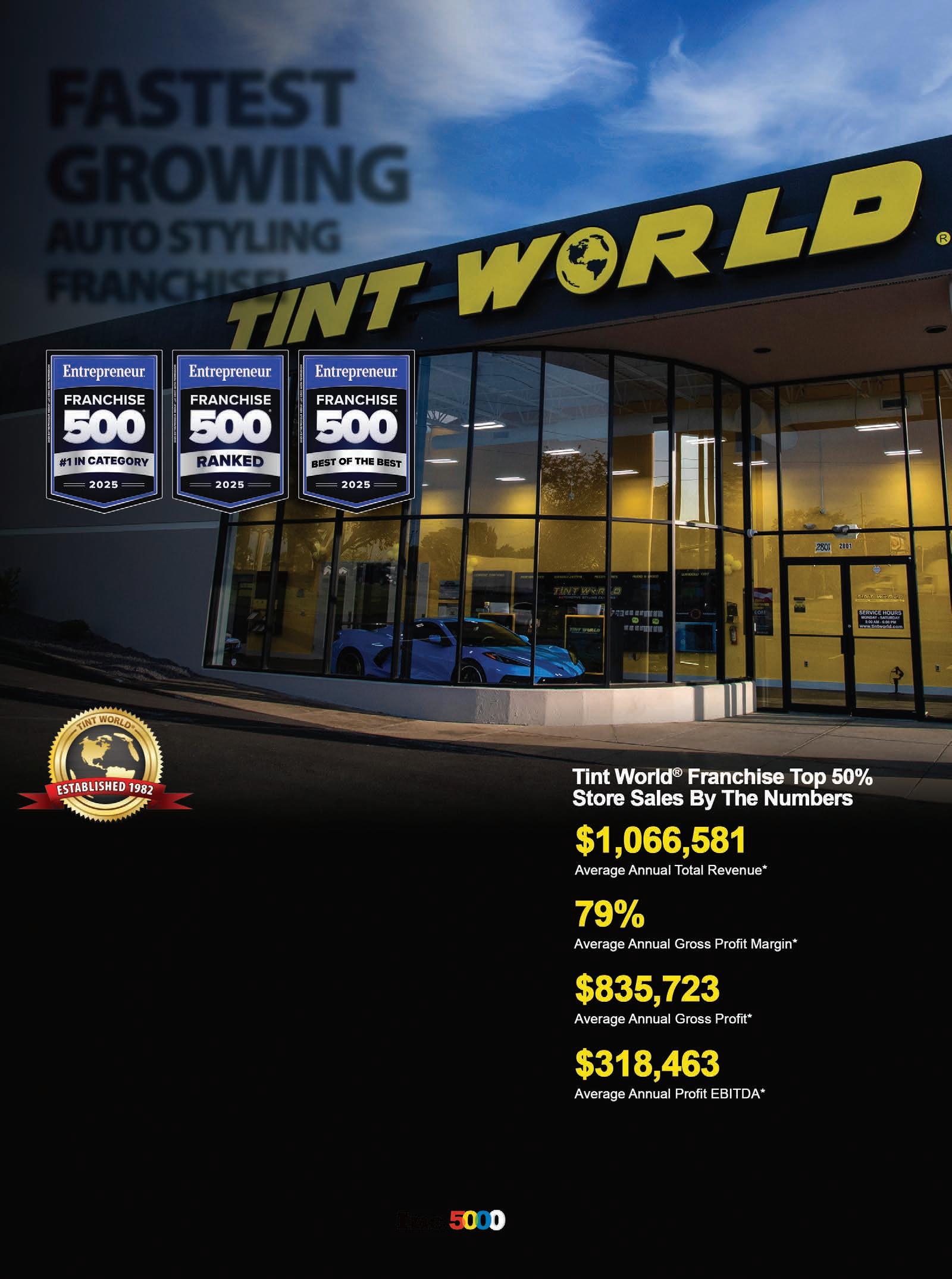
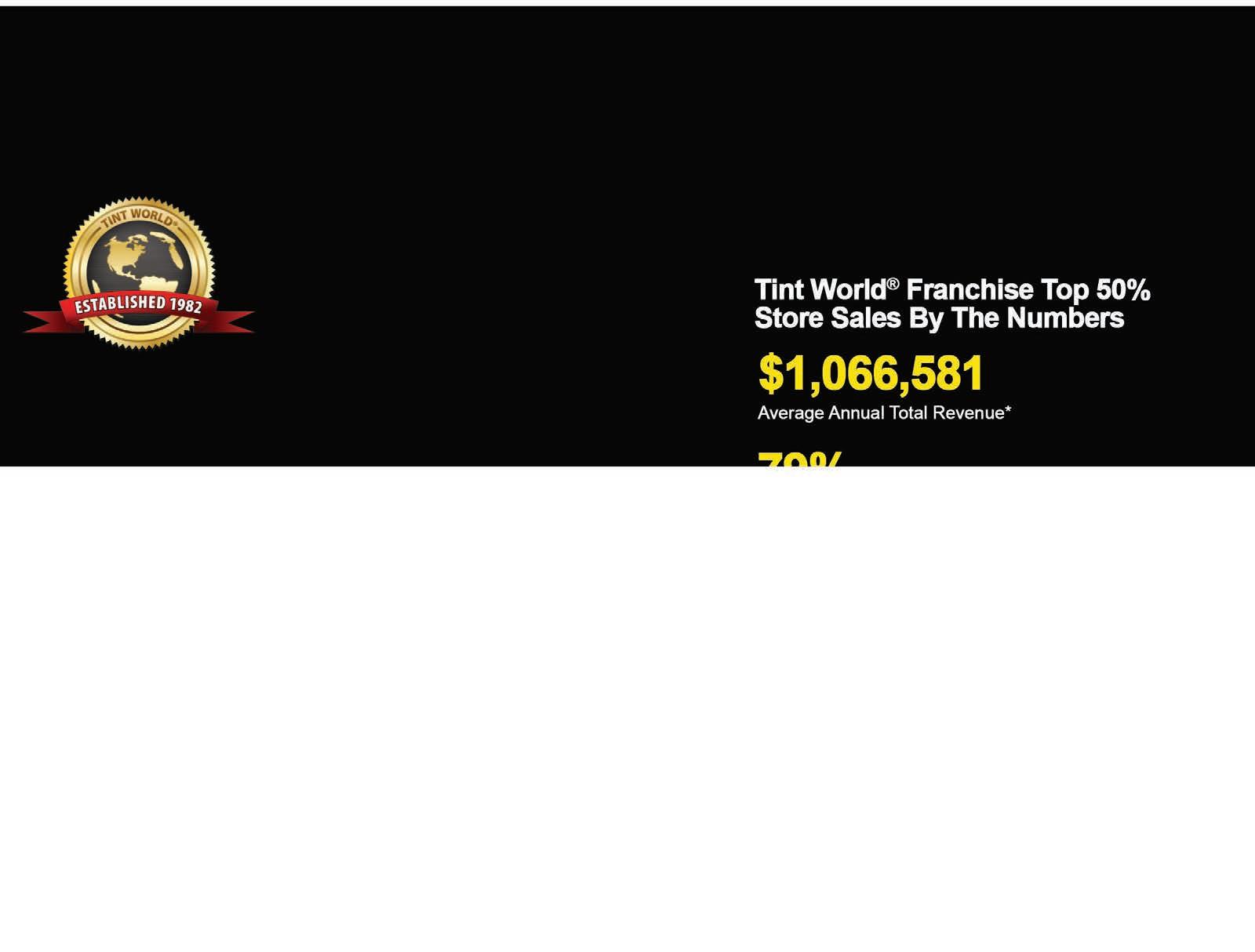

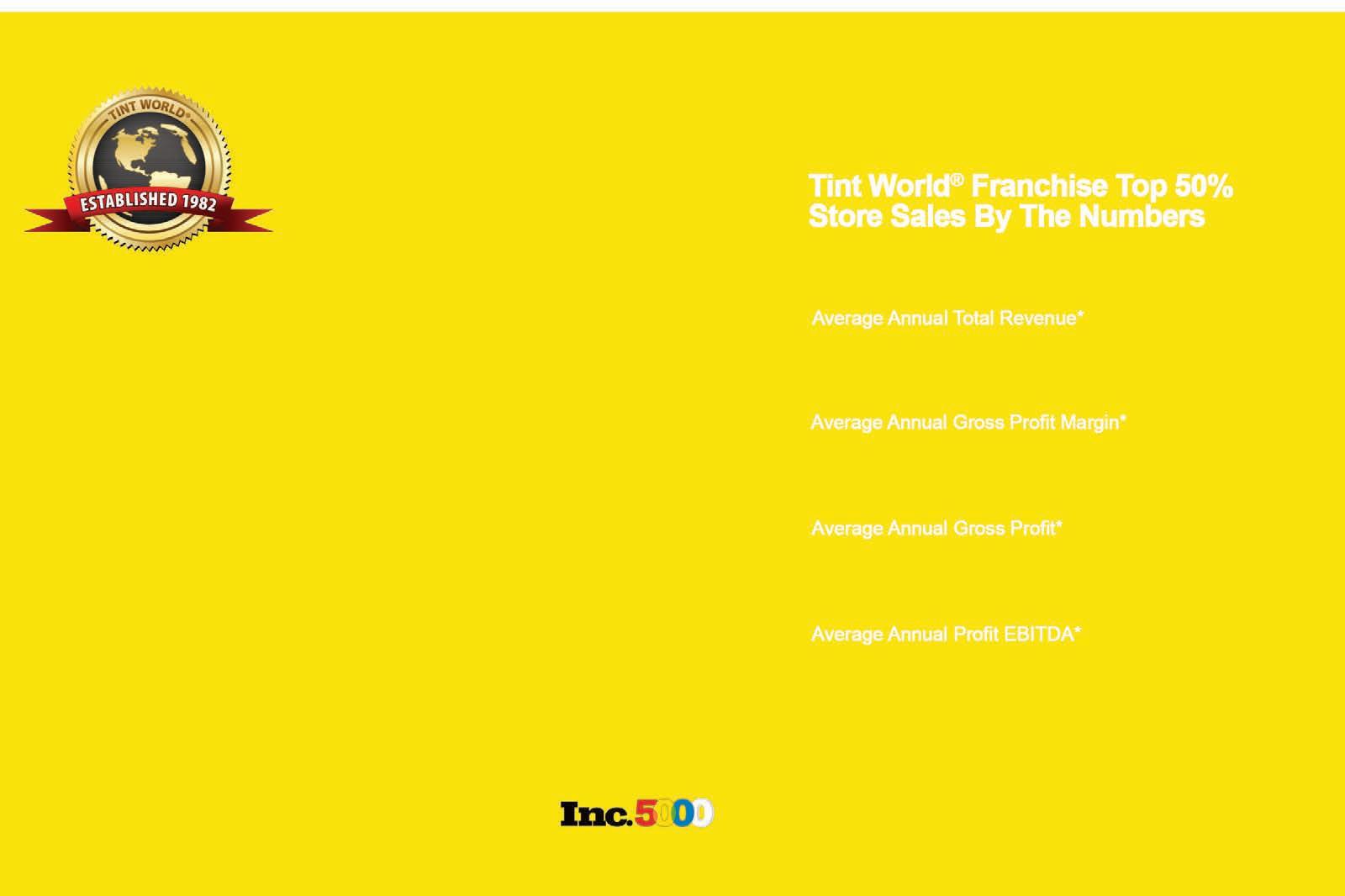
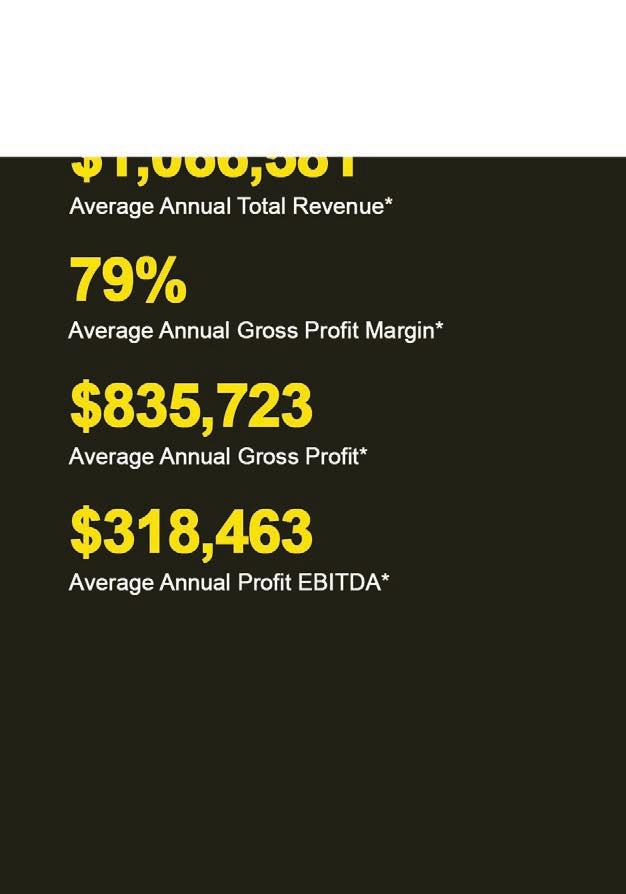
very different from past generations,” Sinha says. “The traditional ways to appeal to consumers are not as effective with this audience, which is why it’s imperative that companies adapt.”
Past research has shown that Gen Z’s peers, not authority figures, are most likely to get their attention. This generation spends significant time online, seeking virtual connections and virtual friendships, and especially values authenticity—which is where micro-influencers excel.
“Generation Z finds micro-influencers to be more credible,” Sinha says. “Microinfluencers communicate and engage with them on a very personal level, which heightens engagement.”
But of course, if a franchise wants to attract young franchisees, it can’t just start paying some influencers. A more fundamental shift is required. At Stretch Zone, Zaccario says, they’ve had to change the way the brand communicates—like making training materials more fast-paced and putting new information into short-form videos.
“When we tracked it, people’s attention span—the ability to finish even a 30-minute video—was dropping steadily over time,” Zaccario says. Anything more than a few minutes, he says, is not optimal in a world where younger people expect short, effective, immediately relevant content.
Frios Gourmet Pops has seen another interesting shift: Although Gen Z franchisees are fluent in social media marketing, they need a lot of training to market outside those channels—such as learning who to call at a country club, or who to ask for when
contacting a school. “We’re training them on how to connect with people,” Kennedy says. “Like, ‘Here’s how that conversation is going to flow. Here’s an email template for a school, or a little bit different language for a business. Here’s a sample LinkedIn message.’”
But even as it trains franchisees in more traditional outreach methods, Frios Gourmet Pops makes sure to encourage Gen Z owners to express themselves in ways that feel natural, realizing how beneficial that kind of energy is for the whole company. Sometimes young franchisees ask to include the CEO in whatever they come up with, and Kennedy is game.
“One of them said, ‘Hey, Cliff, put on these glasses and do this,’” he recalls. “Then she said, ‘Come look at my Instagram.’ It was all these dances and things. She was doing it all. They get a following and people get excited about it. That’s where they interact.”
shirts that they make themselves. They’re getting sweaters and T-shirts that personify who they are. That’s where the younger generation is. They’re happiness-hustlers.”
Here’s something that doesn’t change across generations: New franchisees want to make money. But Gen Z thinks bigger than previous generations—or, seen another way, Gen Z carries more financial anxiety and is seeking more stability.
Empower recently found that, although most Americans say a salary of $270,000 indicates financial success, Gen Z’s expectations are much higher. To be comfortable, they want to make nearly $600,000 a year. Meanwhile, their reality falls far short of that, with the median income for fulltime wage and salary workers ages 25 to 34 projected to be about $61,500 in 2025. When you first start franchising,
THE YOUNGER
FRANCHISEES POST
EACH
ONLINE. THE OLDER
GENERATION,
ONCE
Gen Z doesn’t think about that kind of plan as a big risk, Hayes adds. Their mentality toward taking chances is far different from Baby Boomers and Gen X.
“The W-2 world does not hold the kind of draw and mythical allure for that generation that the corner office did for us,” he says. “It seems much easier for them to do it than it was for us.”
Kennedy, the Frios CEO, also says he sees this difference play out in the way his Gen Z franchisees think, from the instant they sign on the dotted line. “We have a lot of first-time business owners, and at that last moment before they sign on, they think, Oh my goodness, I’m betting on myself,” he says. “The younger generation has never felt that. They’re like, ‘Let’s go. I get to make all the calls? Let’s do this.’”
To Webb, it all comes down to another word that young people love: balance. She
OTHER’S THINGS FROM
THEY SEE HOW MANY LIKES AND COMMENTS THESE POSTS ARE GETTING, SAY, ‘WOW, THIS IS HOW I WANT THINGS TO BE FOR MY BUSINESS TOO.’”
This enthusiasm even flows upward to Kennedy’s older franchisees. “It’s a breath of fresh air,” he says. “The younger franchisees post each other’s things from online. The older generation, once they see how many likes and comments these posts are getting, say, ‘Wow, this is how I want things to be for my business too.’”
Embracing that mentality ultimately translates into realworld marketing ideas, he says: “They literally get custom
that $600,000 goal may be a stretch, but it’s totally possible to be 24 years old, buy a pet-walking or a heat-pumpcleaning location, and make $200,000 a year.
“The business may generate $300,000 or $400,000 a year, and you’ll be doing 50% or 70% of that in net, depending on how many people you hire to help you,” Hayes says. “Even if you hate it after five years, you sell it. What’s the difference? You’re 29.”
wants to make money, but also enjoy her life outside of work. “I’m coming off that hustle mentality,” she says, now five years shy of her 40th birthday. “When I was 20, it was work all the time, hustle, hustle, hustle. But you have to know: When is the stopping point where I’ve worked really hard and set things up so they can run themselves?”
Kim Kavin is a regular contributor to Entrepreneur
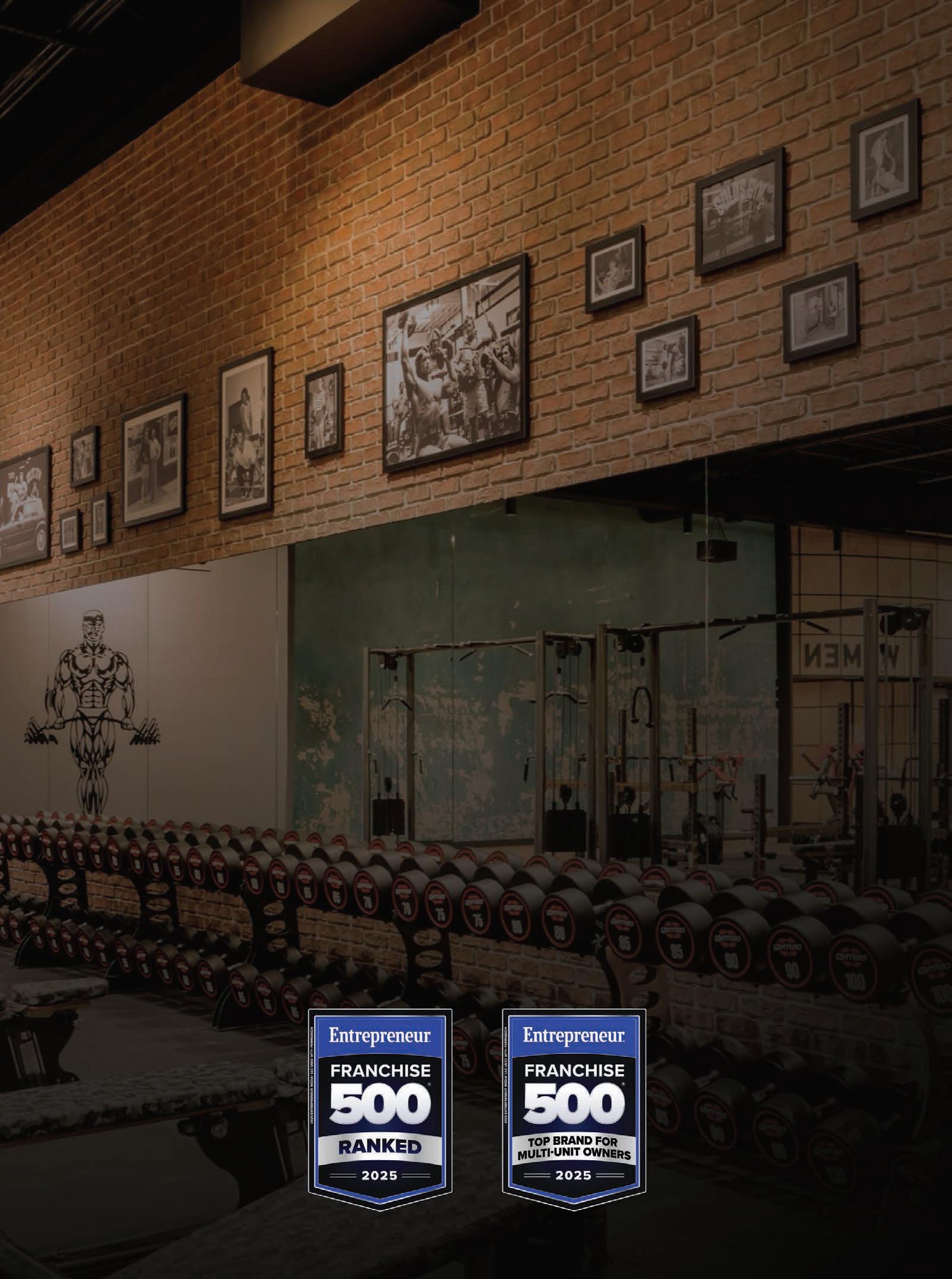
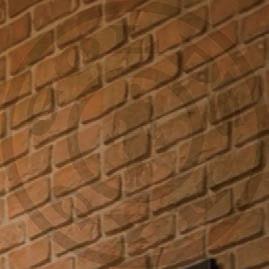
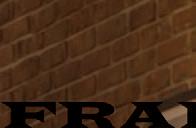


BUILD STRENGTH.
BUILD LEGACY.




FRANCHISE WITH THE ICON.



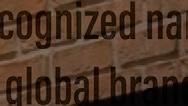


Gold’s Gym is more than a gym — it’s the most recognized name in fitness, with over 550 locations in 29 countries and 96% global brand awareness.
Founded in 1965, Gold’s Gym is a proven, flexible business model backed by a legacy of transformation.
JOIN THE FITNESS FRANCHISE THAT’S HELPED SHAPE AN $84B GLOBAL INDUSTRY. YOUR JOURNEY TO OWNERSHIP STARTS HERE.

Scan to explore available markets and start your journey.
These franchises are looking for leaders like you to run them.

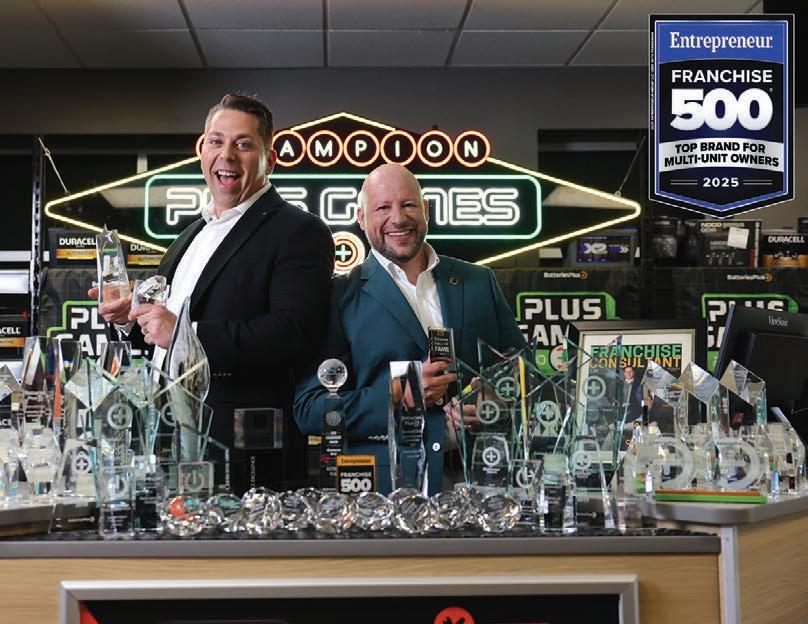
Batteries Plus has cultivated a winning culture, one that thrives on competition and expertise, driving franchisees to success. That mission to win has become contagious throughout the entire Batteries Plus franchise system.
“It’s in the Batteries Plus DNA to be a winner,” said Joe Malmuth, Chief Development Officer. “From individual franchisee honors to national growth awards, our consistent recognition reflects a system built to succeed.”
Batteries Plus has raised the bar for prospective franchisees, challenging its network to aim higher. The result? Prestigious recognition across the industry, including a dramatic rise in Entrepreneur’s Franchise 500 ranking.
That winning mentality carried through to the reinvention of the company’s annual franchise convention: PlusCon. The event

Batteries Plus is the nation’s leading battery and power solutions service center, offering a comprehensive selection of products, technical expertise, and customized services through a nationwide network of over 800 locations open and in development. Headquartered in Hartland, Wisconsin, and owned by Freeman Spogli, Batteries Plus is dedicated to providing reliable, commercial and residential power solutions – including batteries, lighting, and repair services – to help organizations and customers minimize downtime and maximize efficiency. For more information about Batteries Plus and its franchising opportunities visit batteriesplusfranchise.com.
gamified the brand’s success and put franchisees’ expertise to the test during the final rounds of the inaugural Plus Games, a bracket-style competition that challenged owners and associates in everything from company history trivia and product knowledge, to key fob programming and battery installation.
“Our vision of Plus Games was to re-train the system for the benefit of our franchisees while fostering the spirit of competition among all store associates with $30k up for grabs,” said Jon Sica, Chief Operating Officer of Batteries Plus. “We wanted to do something our system had never seen before and something many thought wasn’t possible and we exceeded all expectations.”
The Plus Games delivered tangible results across participating stores. Between November 2024 and January 2025, the top
three quartile stores saw a median total sales growth of 5.9-7.4%, while stores in the top quartile boosted median key fob sales by 12.3% compared to the previous year.
In a brand where franchisees compete to be the best, and where corporate executives lead by example, Batteries Plus has proven that building a winning system starts with building a winning mindset.
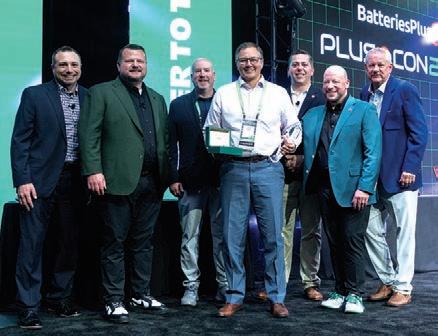
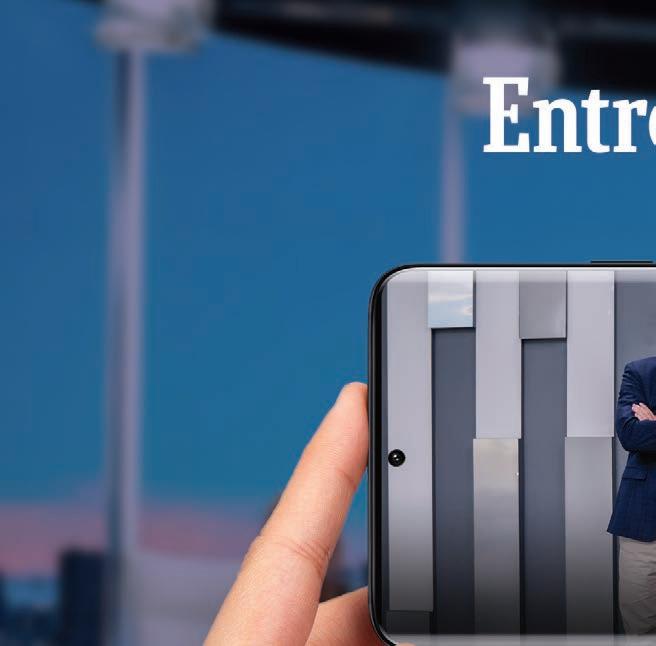
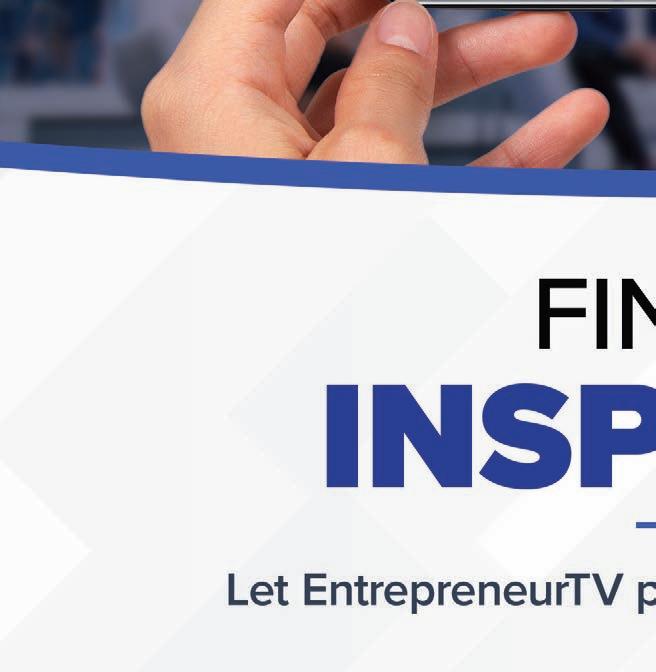
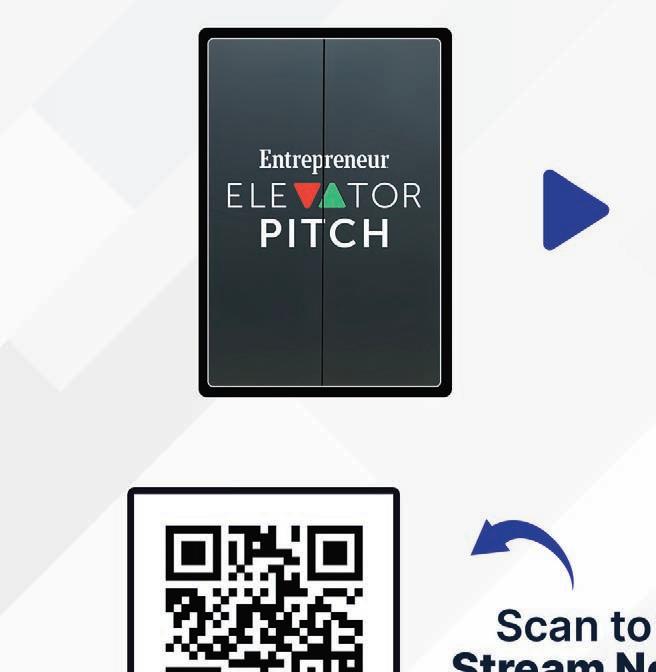
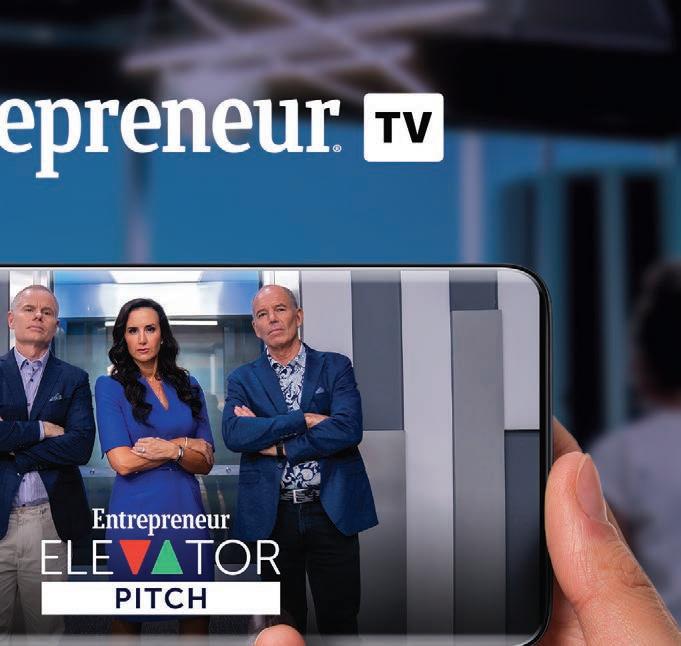
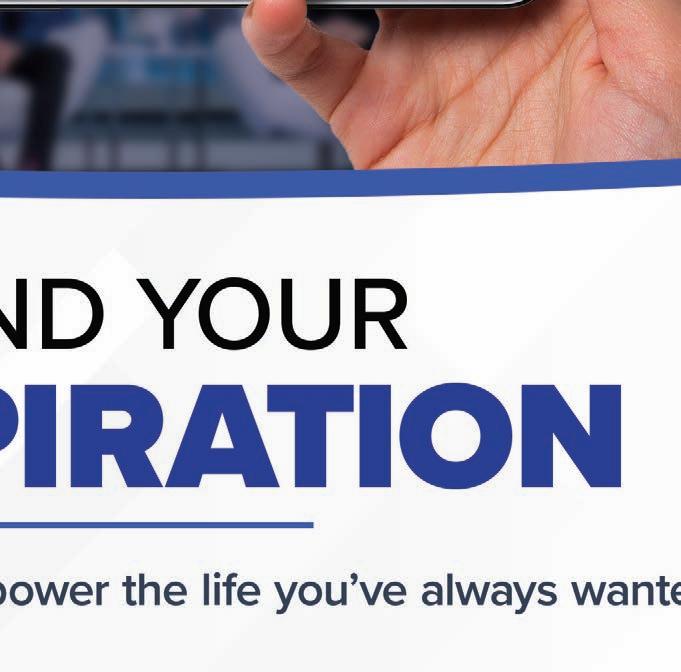
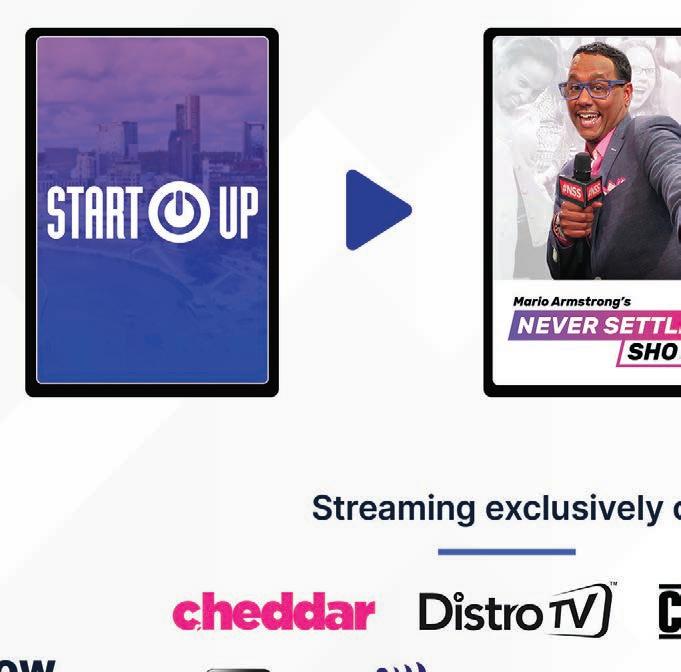

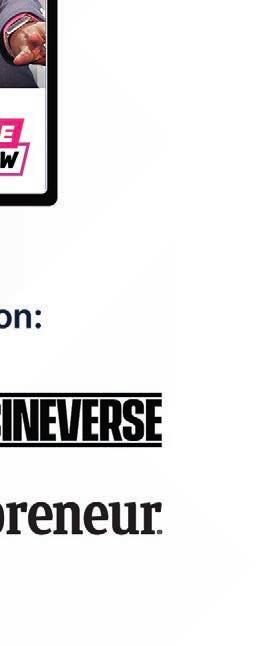
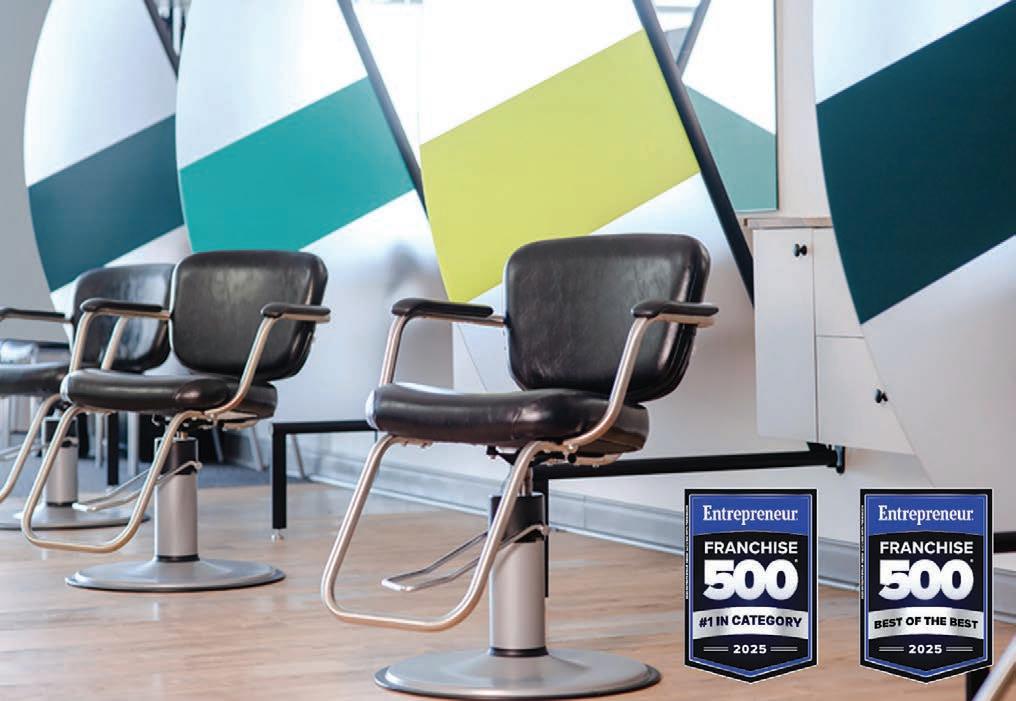
At Great Clips, everything starts—and ends—with the franchisee. As the world’s largest salon brand, Great Clips has built its reputation not just on convenient haircuts, but on unmatched support for its more than 700 franchisees. From day one, the company has prioritized franchisee success through technology, training, and marketing resources tailored to help each salon thrive.
Founded in 1982, Great Clips changed the industry by offering convenient, affordable haircuts in a no-appointment-needed setting. Early leaders like Ray Barton and current vice chair-person Rhoda Olsen championed a vision of growth and innovation, transforming the brand from a local

startup into a household name. Today, there are over 4,400 Great Clips salons across the U.S. and Canada.
What sets Great Clips apart is its unwavering commitment to support that starts the moment someone first considers becoming a franchisee. Developing relationships with corporate staff and current Great Clips franchisees starts during the research process and those connections are as critical as the systems and defined processes used to guide prospective franchisees through their evaluation of the business. Real people with real world experience who care deeply about the success of each other, and the brand is what has driven the growth of Great Clips for over 40 years.
Great Clips is the world’s largest salon brand with 4,400+ franchised locations. Known for affordable, walk-in haircuts and strong franchisee support, it offers a well-established, techforward model in the $50B haircare industry—built entirely for franchisees.
Great Clips Facts
Initial Investment: $187,800-$419,900
“Great Clips helped us build greatness from day 1 with a business plan set up for success.”
“I chose Great Clips because of their strong brand, proven model, and commitment to the success of their franchisees.”
The brand is also a tech leader. Great Clips was the first in the industry to launch Online Check-In and Clip Notes, two innovations that improve customer experience and build loyalty across locations. These tools, combined with major marketing partnerships (like NHL, College Football Playoffs, and March Madness), elevate brand visibility and drive traffic to local salons.
From initial training to daily operations to legacy planning, Great Clips supports its franchisees every step of the way.
That’s why Great Clips isn’t just a salon brand—it’s a franchise opportunity built for long-term success.

Want to own multiple franchise locations?
These are the best brands for multi-unit owners. by TRACY STAPP HEROLD
In franchising, the growth opportunities are endless. You could buy one unit—and then, if you succeed, you could buy a second. Then a third. Then onward into the hundreds or even thousands!
The franchise industry is full of people like that. More than 40% of all franchise units are owned by multi-unit franchisees, and the average franchisee owns 2.4 units. (That’s data we collected from applicants for our 2025 Franchise 500 ranking.) There’s plenty of variation within the industry, of course, with some systems still dominated by single-unit owners and others made up entirely of multi-unit franchisees. But ultimately, there’s no doubt that multiunit franchise ownership continues to gain popularity, which is why we’ve ranked the top brands for existing and prospective franchisees who are interested in it.
To do that, we first took into account each company’s 2025 Franchise 500 score, which is based on an analysis of more than 150
data points in the areas of costs and fees, size and growth, support, brand strength, and financial strength and stability. Then we looked at factors related more specifically to multi-unit ownership, such as discounts offered for multi-unit franchisees, whether brands sell only multi-unit or master license deals, what percentage of a brand’s franchisees own multiple units, what percentage of a brand’s total units are owned by multi-unit franchisees, and how many units the average franchisee within each brand owns.
This list should not be seen as a recommendation of any particular brand. But whether you’re just starting to think about buying a franchise and already have your sights set on multi-unit ownership, or whether you’re an experienced owner looking to expand your portfolio, it can serve as a great jumping-off point for your own research. Always read the company’s legal documents, consult with an attorney and an accountant, and talk to existing and former franchisees before investing.
1
Taco Bell Mexican-inspired food STARTUP COST
$610.8K-$3.98M TOTAL UNITS (Franchised / Co.-Owned) 8,077/488
2 Great Clips Hair salons STARTUP COST
$182.95K-$414.4K
UNITS (Franchised / Co.-Owned) 4,427/0
3
Jersey Mike’s Subs Subs and Philly cheesesteaks STARTUP COST
$203.6K-$1.3M
UNITS (Franchised / Co.-Owned) 2,825/36
4 KFC Chicken STARTUP COST
$1.9M-$3.8M TOTAL UNITS (Franchised / Co.-Owned) 30,246/434
5 Sport Clips Haircuts Haircuts for men and boys STARTUP COST
$276.8K-$463K TOTAL UNITS (Franchised / Co.-Owned) 1,820/82
6 Palm Beach Tan Tanning and wellness services STARTUP COST
$639K-$1M
UNITS (Franchised / Co.-Owned) 402/256
7 McAlister’s Deli Sandwiches, salads, baked potatoes STARTUP COST
$1.1M-$2.5M TOTAL UNITS (Franchised / Co.-Owned) 516/34
8
The UPS Store Shipping, packing, package management, mailboxes, printing, faxing, shredding, notary services
STARTUP COST
$100.9K-$495.9K TOTAL UNITS (Franchised / Co.-Owned) 5,678/15
9 Pet Supplies Plus Pet food and supplies, bathing/grooming services
STARTUP COST
$498.3K-$1.98M TOTAL UNITS (Franchised / Co.-Owned) 500/232
10 IHOP Family restaurants STARTUP COST
$1.8M-$4.4M
TOTAL UNITS (Franchised / Co.-Owned) 1,815/0
11
Smoothie King Smoothies and smoothie bowls
STARTUP COST
$346.4K-$1.3M
TOTAL UNITS (Franchised / Co.-Owned) 1,212/65
12 Wingstop Chicken wings, tenders, and sandwiches, fries, sides
STARTUP COST
$259.4K-$912.1K
TOTAL UNITS (Franchised / Co.-Owned) 2,300/52
13 The Joint Chiropractic Chiropractic services
STARTUP COST
$254.3K-$520.8K
TOTAL UNITS
(Franchised / Co.-Owned) 837/127
/
What are some specific ways your brand encourages and supports multi-unit ownership?
“We help facilitate connections among our multi-unit owners through conferences, regional meetings, and online forums, allowing them to share best practices and build valuable relationships. We also have franchise business coaches that specialize in supporting our franchisees with more than 10 units.”
—Matt
Stanton, chief development Purpose Brands Fitness), No. 28
—Matt Stanton, chief development officer, Purpose Brands (Anytime Fitness), No. 28
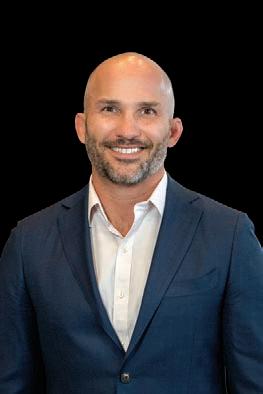
“We actively support multi-unit ownership through a flexible and scalable business model, including rewarding growth with reduced royalty fee percentages based on store count and sales, offering expansion planning support, and leveraging a point-of-sale system that can be configured for multi-store operations.” —Gary Skidmore, chief operating officer, Big O Tires, No. 47
Gary No. 47
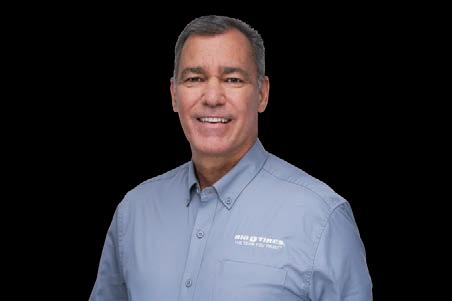
“If an owner has the right mindset and a clear vision, we help build a smart, achievable plan for expansion. The PuroClean Elevations Program is a strategic initiative designed to support franchise owners in scaling their business responsibly. It strengthens operations, improves profitability, and prepares them for sustainable growth.”
—Tim vice of
—Tim Courtney, vice president of franchise development, PuroClean, No. 79
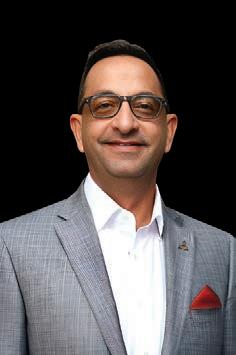
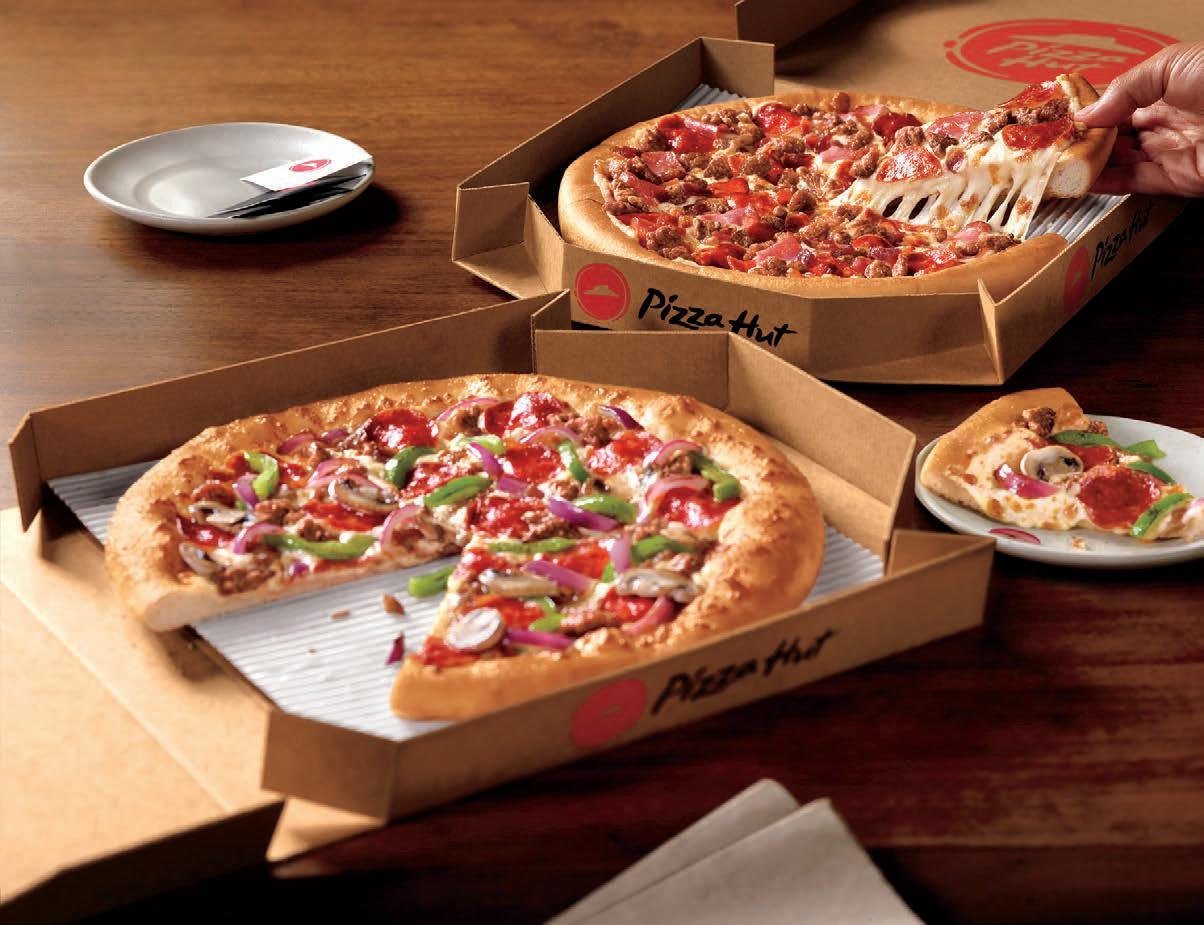
14
Marco’s Pizza Pizza, pizza bowls, subs, wings, salads, cheese bread
STARTUP COST
$286.7K-$807.2K
TOTAL UNITS
(Franchised / Co.-Owned) 1,161/43
15
Jack in the Box
Burgers, chicken sandwiches, tacos, salads, bowls, sides
STARTUP COST
$1.8M-$4.2M TOTAL UNITS
(Franchised / Co.-Owned)
2,046/145
16
Wireless Zone
Wireless devices, services, and accessories
STARTUP COST
$190K-$445.5K
TOTAL UNITS (Franchised / Co.-Owned) 743/0
17
Wendy’s Burgers, chicken sandwiches, breakfast sandwiches, sides
STARTUP COST
$310.1K-$2.8M
TOTAL UNITS (Franchised / Co.-Owned) 6,870/412
18
Goldfish Swim School Infant and child swimming lessons
STARTUP COST
$2.6M-$6M TOTAL UNITS (Franchised / Co.-Owned) 182/6
19
European Wax Center
Body waxing services, skin and beauty products
STARTUP COST
$363.6K-$641.95K
TOTAL UNITS (Franchised / Co.-Owned) 1,053/5
20
Popeyes Louisiana Kitchen
Fried chicken, seafood, biscuits
STARTUP COST
$471K-$3.9M
TOTAL UNITS
(Franchised / Co.-Owned) 4,756/40
21
Jiffy Lube Oil changes and preventive auto maintenance
STARTUP COST
$232K-$442.7K
TOTAL UNITS
(Franchised / Co.-Owned) 1,869/360
22
McDonald’s Burgers, chicken, salads, beverages
STARTUP COST
$1.5M-$2.6M
TOTAL UNITS (Franchised / Co.-Owned) 40,238/2,168
23
Sola Salons Salon studios STARTUP COST
$924K-$1.96M
TOTAL UNITS (Franchised / Co.-Owned) 661/67
24
Budget Blinds Window coverings, window film, rugs, accessories STARTUP COST
$100.5K-$211.3K
TOTAL UNITS
(Franchised / Co.-Owned) 1,498/0
25
Pizza Hut Pizza, pasta, wings STARTUP COST
$412K-$2.1M
TOTAL UNITS (Franchised / Co.-Owned) 18,591/7
26
Paris Baguette
Bakery cafes STARTUP COST
$718.1K-$1.8M
TOTAL UNITS (Franchised / Co.-Owned) 3,883/19
27
Midas Auto repair and tires STARTUP COST





































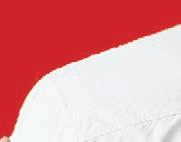



























Scan






















/ Co.-Owned) 395/0
UNITS (Franchised / Co.-Owned) 447/0
46
Auntie Anne’s Soft pretzels STARTUP COST
$149.6K-$624.8K
UNITS (Franchised / Co.-Owned) 2,006/11
47 Big O Tires Tires, tire services, auto products STARTUP COST
$511.5K-$1.9M
/ Co.-Owned) 463/0
48
$112.9K-$149.6K
/ Co.-Owned) 1,162/4
49 Bojangles Chicken and biscuits
$720.2K-$3.8M
(Franchised / Co.-Owned) 528/285
WE
/ What qualities does a franchisee need to succeed at multi-unit ownership?
“Managing multiple teams across different locations requires the ability to inspire, delegate, and build a cohesive culture. We’ve seen that effective operators empower their teams and foster a sense of belonging and ownership across their restaurants.” —Jake Barden, senior vice president of franchise sales, Dine Brands (IHOP), No. 10
Barden, senior vice of franchise sales, Dine Brands (IHOP), No. 10
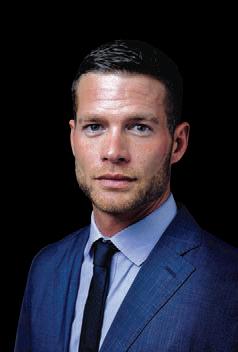
“Ultimately, it’s about shifting from being the best operator to becoming the best coach of operators. Multi-unit success is all about leading through others and knowing how to build, trust, and develop a team. The franchisees who do this while also staying extremely engaged in the business are the most successful ones.” —Susan Valverde, brand president, Sylvan Learning, No. 81
Valverde, brand Sylvan
“A clear long-term vision is essential. Knowing where you want to be in five or 10 years helps guide smart decision-making. A strong focus on the guest experience is also key. Successful franchisees know how to identify and empower store managers who are passionate about delivering great service.” —Geoff Henry, president, Gong cha Americas, No. 139
—Geoff Henry, cha No. 139
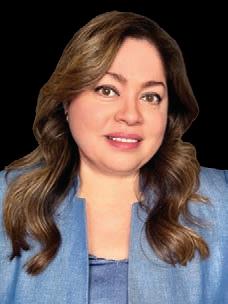
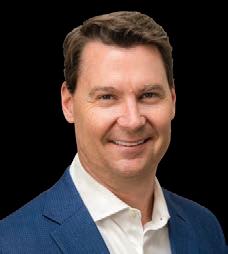


56
Slim Chickens
Chicken tenders, chicken wings, salads, sandwiches, wraps
STARTUP COST
$129.9K-$188.9K
$1.5M-$4.4M TOTAL UNITS (Franchised / Co.-Owned) 240/11
57
Hotworx 24-hour infrared sauna fitness studios STARTUP COST
$252.2K-$1.2M
TOTAL UNITS (Franchised / Co.-Owned) 761/7
58
Mosquito Shield Outdoor pest control STARTUP COST
$120.5K-$157.95K
TOTAL UNITS
(Franchised / Co.-Owned) 435/1
59
ProSource Wholesale
Wholesale kitchen, bath, and flooring products
STARTUP COST
$955.5K-$971.7K
TOTAL UNITS (Franchised / Co.-Owned) 145/3
60
Spherion Staffing & Recruiting
Flexible staffing, recruiting, workforce management solutions
STARTUP COST
$214.3K-$342.6K
TOTAL UNITS
(Franchised / Co.-Owned) 209/2
61
RNR Tire Express Tire and custom wheel sales and rentals
STARTUP COST
$703.6K-$1.7M
TOTAL UNITS
(Franchised / Co.-Owned) 173/24
Buddy’s Home Furnishings
Rent-to-own home furnishings, electronics, and appliances
STARTUP COST
$375.7K-$797.5K
TOTAL UNITS (Franchised / Co.-Owned)
Orangetheory Fitness
Heart-rate-based group interval workout classes
STARTUP COST
$729.4K-$1.6M
TOTAL UNITS (Franchised / Co.-Owned)
The Goddard School Preschool/educational STARTUP COST
$902.5K-$8.5M
TOTAL UNITS (Franchised / Co.-Owned)
Tropical Smoothie Smoothies, salads, wraps, sandwiches, flatbreads STARTUP COST
$300K-$720.5K
TOTAL UNITS (Franchised / Co.-Owned) 1,550/1
62
Subway Subs, salads STARTUP COST
$238.6K-$536.7K
TOTAL UNITS (Franchised / Co.-Owned) 36,455/0
63
Pearle Vision Eye care and eyewear STARTUP COST
$70.9K-$1.3M
TOTAL UNITS (Franchised / Co.-Owned) 461/106
64 Charleys Cheesesteaks & Wings
Philly cheesesteaks, fries, wings, lemonade STARTUP COST
$202.1K-$935.7K
TOTAL UNITS
(Franchised / Co.-Owned) 735/57
69 RE/MAX Real estate STARTUP COST
$44K-$250K
TOTAL UNITS (Franchised / Co.-Owned) 8,833/0
70 QC Kinetix Regenerative medicine and nonsurgical pain management therapies STARTUP COST
$250.1K-$600.1K
TOTAL UNITS (Franchised / Co.-Owned) 180/13
71 PJ’s Coffee of New Orleans Coffee, tea, pastries, sandwiches STARTUP COST
$459K-$1.2M
TOTAL UNITS (Franchised / Co.-Owned) 193/0
SealMaster West Virginia is a turnkey territory with 30+ years of history—and one of only 10 U.S. territories available.
With 75 percent of protected U.S. SealMaster franchise territories sold out, just 10 are available nationwide SealMaster franchisees are leading suppliers in the pavement maintenance industry, offering a full line of pavement maintenance and sport surfacing products and equipment Customers include asphalt contractors, government road and parks departments, the property management industry, public and private institutions, and others responsible for maintaining paved assets
and sport surfaces.
“Sales-minded entrepreneurs should definitely have their eyes on SealMaster,” says Franchise Development Director Jason Hedlesky. “Asphalt is every-
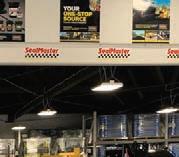

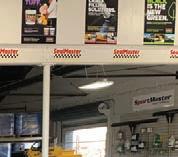





where. The market is huge.”
Furthermore, SealMaster is recession resistant, as evidenced by consistent, yearover-year growth for more than 30 years, according to Hedlesky. “As essential businesses, our franchisees didn’t shut down for a single day during the COVID-19 pandemic.”
Beyond that, large, protected territories—some are entire states—afford single-unit franchisees tremendous earning power, according to Hedlesky. Buyers can purchase manufacturing or distribution-only territories. “Owners can open as many storefronts as their territories can profitably bear.”
For instance, SealMaster’s Nashville-based Tennessee franchise has a sealer manufacturing plant and eight
storefronts throughout the state.
Available territories include a turn-key operation based in Charleston with all of West Virginia except the panhandle. SealMaster products are distributed worldwide, has licensed manufacturers in China and Mexico. “Most people don’t think of supplying a big industry when considering franchise opportunities, but it’s a great one for the right type of owner,” says Hedlesky.

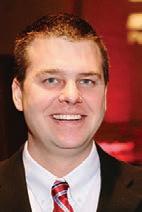
“Given the investment, I can’t imagine any
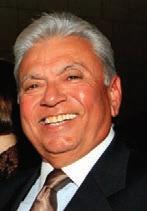
“Operating













































75
The Habit Burger Grill Burgers and chicken and tuna sandwiches
$1.7M-$2.8M
/
$242.95K-$1M
78
The Honey Baked Ham Co. Retail specialty foods, catering, cafes STARTUP COST
$448.6K-$858.9K
TOTAL UNITS
(Franchised / Co.-Owned) 214/229
79
PuroClean
Property damage restoration and remediation
STARTUP COST
$95.5K-$245.9K
TOTAL UNITS
(Franchised / Co.-Owned) 471/0
80 Express Employment Professionals Staffing, HR solutions
STARTUP COST
$132K-$391K
TOTAL UNITS
(Franchised / Co.-Owned) 844/6
81
Sylvan Learning Supplemental education, STEM camps, college prep STARTUP COST
$100.8K-$226.8K
TOTAL UNITS
(Franchised / Co.-Owned) 565/5
82
Denny’s Full-service restaurants
STARTUP COST
$953.4K-$3.1M
TOTAL UNITS
(Franchised / Co.-Owned) 1,470/64
83
Sbarro Pizza, pasta, stromboli STARTUP COST
$211.9K-$1M
TOTAL UNITS
(Franchised / Co.-Owned) 601/149
84 Superior Fence & Rail
Fence sales and installation STARTUP COST
$130.5K-$206.8K
TOTAL UNITS (Franchised / Co.-Owned) 295/2
85
Zaxby’s Chicken wings, fingers, sandwiches, and salads
STARTUP COST
$1.4M-$3.3M
TOTAL UNITS
(Franchised / Co.-Owned) 815/145
Bin There Dump
Residential-friendly
(Franchised / Co.-Owned)
Rent-A-Center Rent-to-own furniture, computers, appliances
(Franchised / Co.-Owned)
Tommy’s Express
(Franchised / Co.-Owned)
Residential cleaning
(Franchised / Co.-Owned)

Jeremiah’s Italian Italian ice, gelati, soft ice cream
STARTUP COST
$350.6K-$721K
TOTAL UNITS
(Franchised / Co.-Owned) 140/19
91
Taco John’s Mexican food STARTUP COST
$437K-$2.1M
TOTAL UNITS
(Franchised / Co.-Owned) 340/7
92
Transworld Business Advisors Business brokerages; franchise consulting
STARTUP COST
$96.7K-$122.5K
TOTAL UNITS (Franchised / Co.-Owned) 485/1




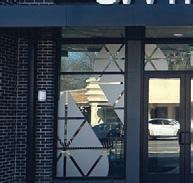


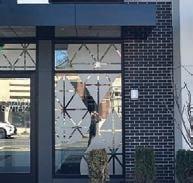



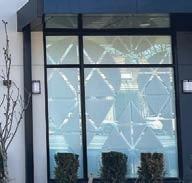





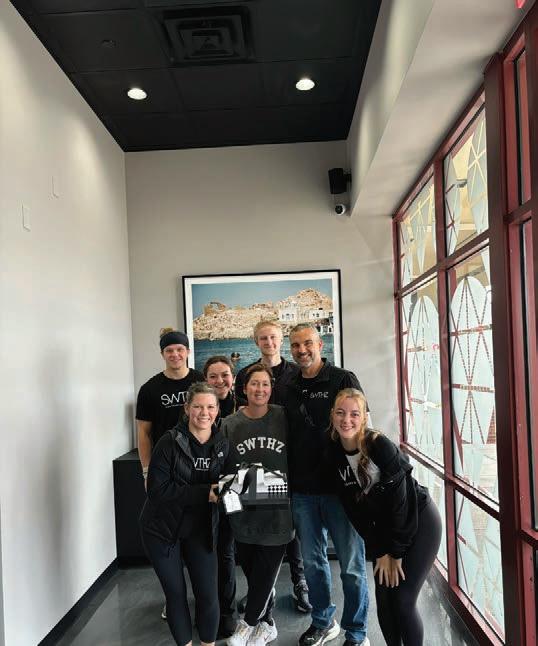
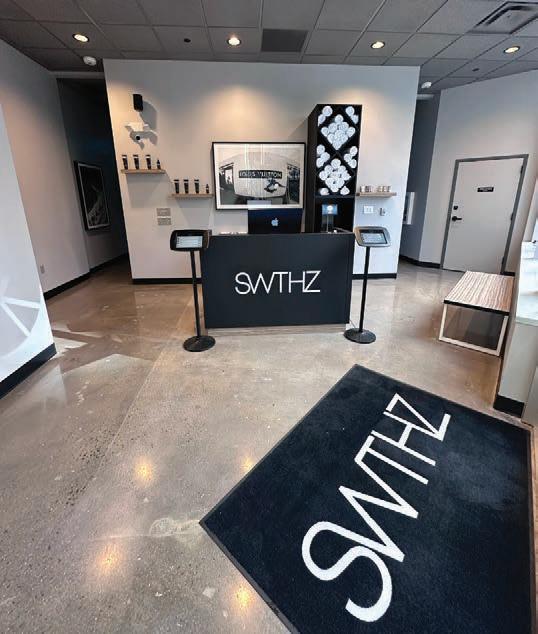
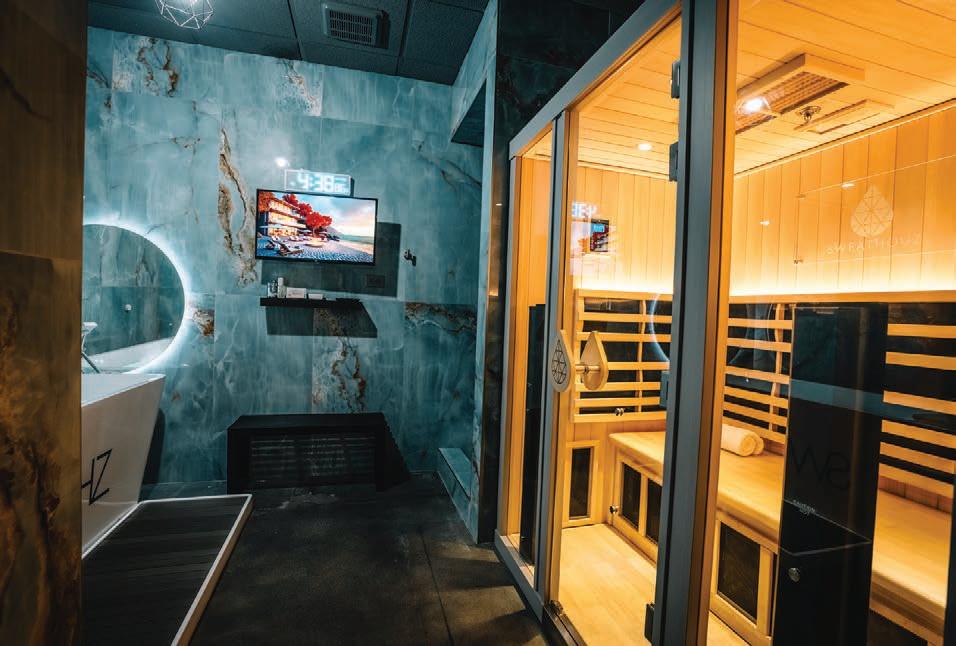
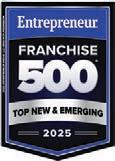

99
$163.5K-$302.2K
$470.1K-$944K
100 Snap-on Tools Professional tools and equipment
STARTUP COST
$217.5K-$481.6K
TOTAL UNITS (Franchised / Co.-Owned) 4,461/213
101 Re-Bath
Bathroom remodeling
STARTUP COST
$276.3K-$609.6K
TOTAL UNITS
(Franchised / Co.-Owned) 140/0
102
A&W Restaurants
Root beer, burgers, hot dogs, chicken, sides, ice cream
STARTUP COST
$287.4K-$1.6M
TOTAL UNITS
(Franchised / Co.-Owned) 863/2
103 Kilwins Chocolates, fudge, ice cream
STARTUP COST
$239.3K-$870.1K
TOTAL UNITS
(Franchised / Co.-Owned) 163/4
104 Floyd’s 99 Barbershop Haircuts, hair coloring, shaves, retail products
STARTUP COST
$399.5K-$762.5K
TOTAL UNITS
(Franchised / Co.-Owned) 71/68
108 Tide Cleaners Dry cleaning STARTUP COST
$709.7K-$1.5M
TOTAL UNITS (Franchised / Co.-Owned)
109
Scooter’s Coffee Coffee, espresso, smoothies, pastries, breakfast items STARTUP COST
$894.5K-$1.4M
TOTAL UNITS (Franchised / Co.-Owned) 776/24
110 Biggby Coffee Specialty coffee, tea, smoothies, energy drinks, baked goods, sandwiches STARTUP COST
$328K-$792.8K
TOTAL UNITS (Franchised / Co.-Owned)
111 Right at Home Home care, medical staffing STARTUP COST
$92.1K-$165.3K
TOTAL UNITS (Franchised / Co.-Owned) 748/12
105 The Learning Experience Academy of Early Education
Preschool/educational childcare
STARTUP COST
$780.8K-$5.6M
TOTAL UNITS (Franchised / Co.-Owned) 401/32
106
Aqua-Tots Swim Schools
Swimming lessons
STARTUP COST
$1.6M-$2.6M
TOTAL UNITS
(Franchised / Co.-Owned) 160/1
107
Five Star Bath Solutions Bathroom remodeling
STARTUP COST
$162K-$293.5K
TOTAL UNITS
(Franchised / Co.-Owned) 271/6
112 The Good Feet Store Arch supports, related products STARTUP COST
$255.5K-$595K
TOTAL UNITS (Franchised / Co.-Owned) 254/21
113 Nothing Bundt Cakes Bundt cakes and gifts STARTUP COST
$585K-$1.1M
TOTAL UNITS (Franchised / Co.-Owned) 595/17
114 Merry Maids Residential cleaning STARTUP COST
$126.9K-$165.6K
TOTAL UNITS (Franchised / Co.-Owned) 1,692/0


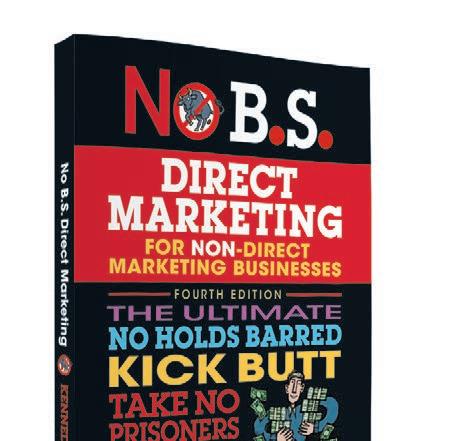
































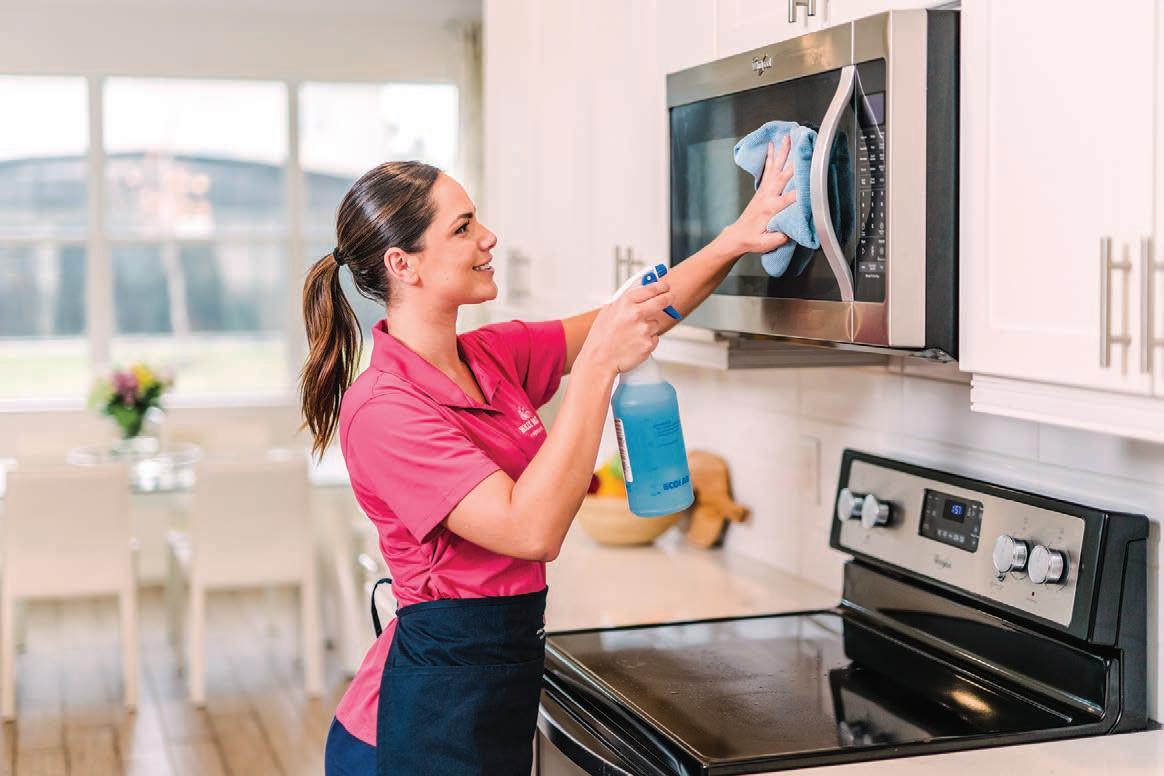































/ Co.-Owned) 84/345
133
ServiceMaster
Restore Commercial/residential disaster restoration STARTUP COST
$255.1K-$365.3K TOTAL UNITS (Franchised / Co.-Owned) 2,284/0
134
KidStrong
Physical fitness, leadership, and confidence-building training for children
STARTUP COST
$342.7K-$691.2K
$94.5K-$176.4K
$313K-$1.1M
UNITS
/ Co.-Owned) 297/22
TOTAL UNITS
(Franchised / Co.-Owned) 118/8
135
RooterMan Plumbing and drain cleaning
STARTUP COST
$45.1K-$82.5K
TOTAL UNITS
(Franchised / Co.-Owned) 703/0
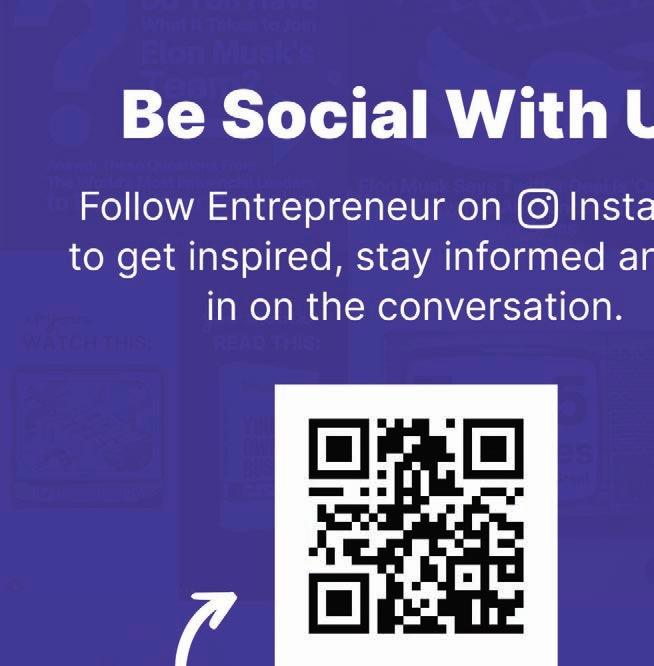
136
Batteries Plus Batteries, light bulbs, and related products; repair services
STARTUP COST
$252.3K-$493.8K
TOTAL UNITS
(Franchised / Co.-Owned) 610/120
137
Filta Environmental Kitchen Solutions Commercial kitchen maintenance services
STARTUP COST
$123.6K-$139.3K
TOTAL UNITS
(Franchised / Co.-Owned) 348/0
138
LIME Painting
Residential and commercial painting, coatings, and surface restoration
STARTUP COST
$126.7K-$227.1K
TOTAL UNITS
(Franchised / Co.-Owned) 84/2
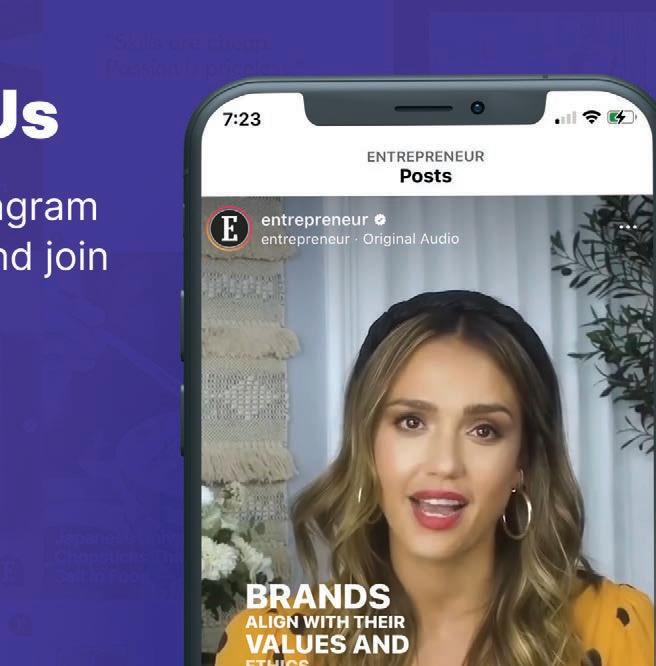

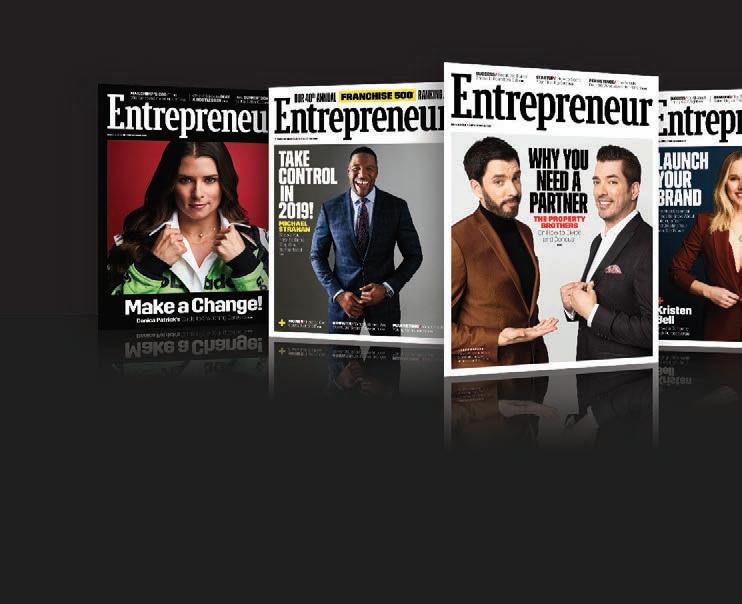

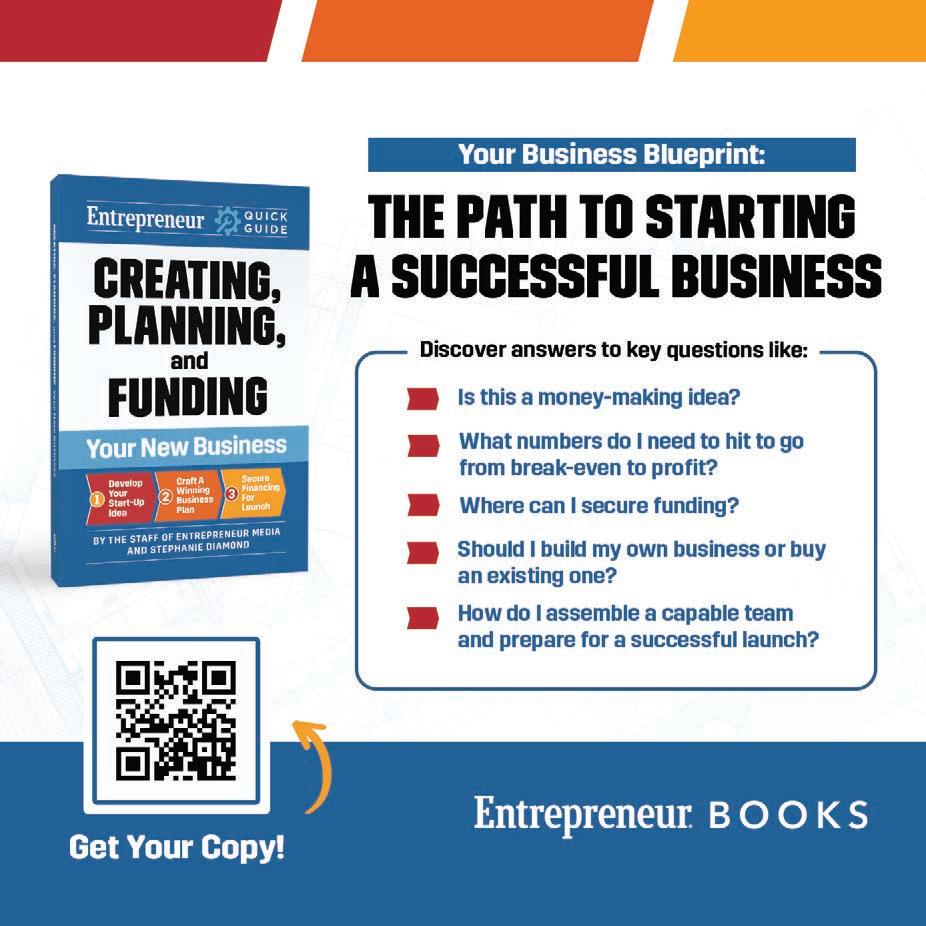
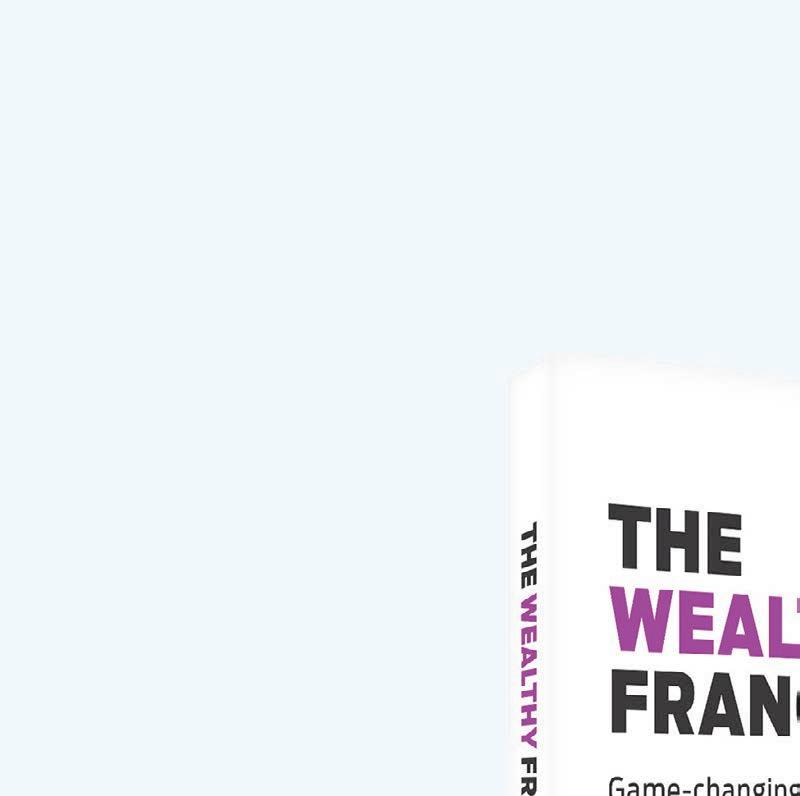
The Wealthy Franchisee leverages franchising consultant Scott Greenberg’s firsthand experience as an award-winning franchisee to help you:
Explore your own mental responses and become more self-aware
Bring out the best in your employees and build superstar teams

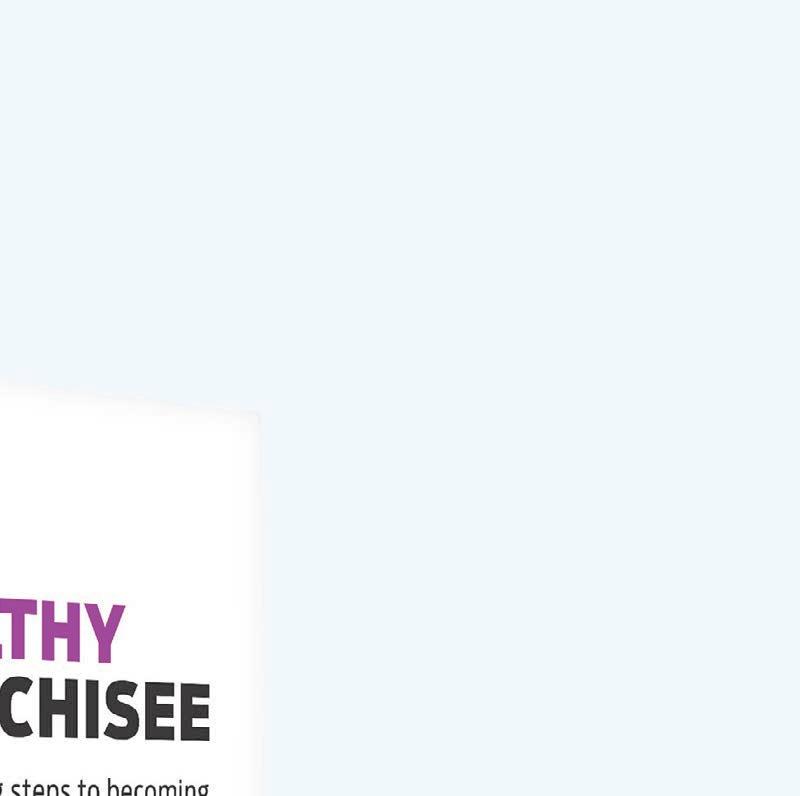
Dazzle customers and increase sales with emotionally satisfying experiences
Optimize the human elements of your operation so you can grow into a next-level enterprise and become wealthy
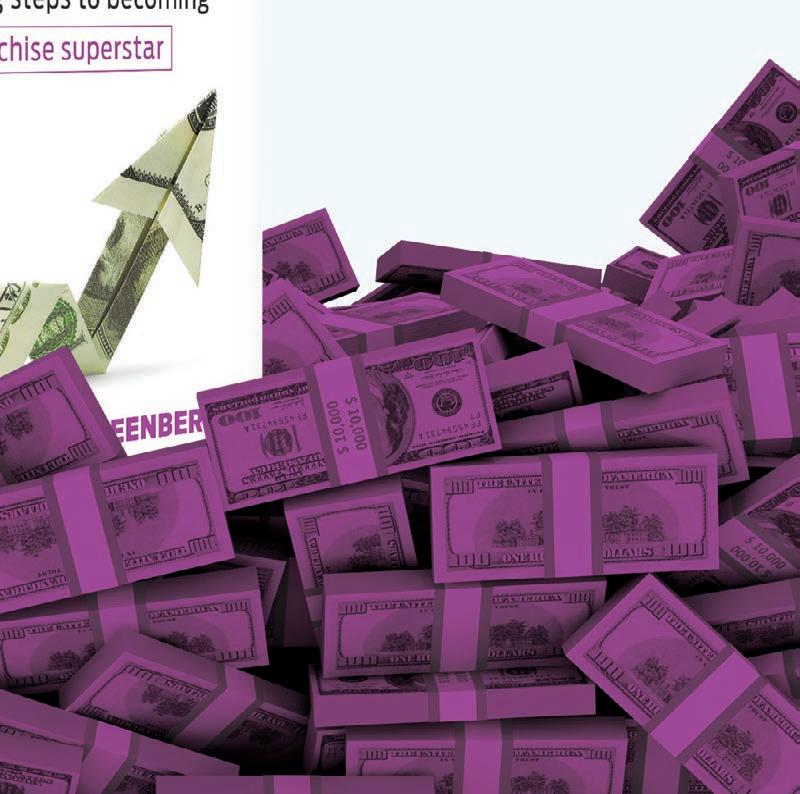
One of these opportunities could mark the turning point to owning a business of your own, realizing your personal dreams and securing true financial independence. So go ahead, make your first move by considerw ing all that they have to offer in this Opportunity Spotlight. Then make your first call.

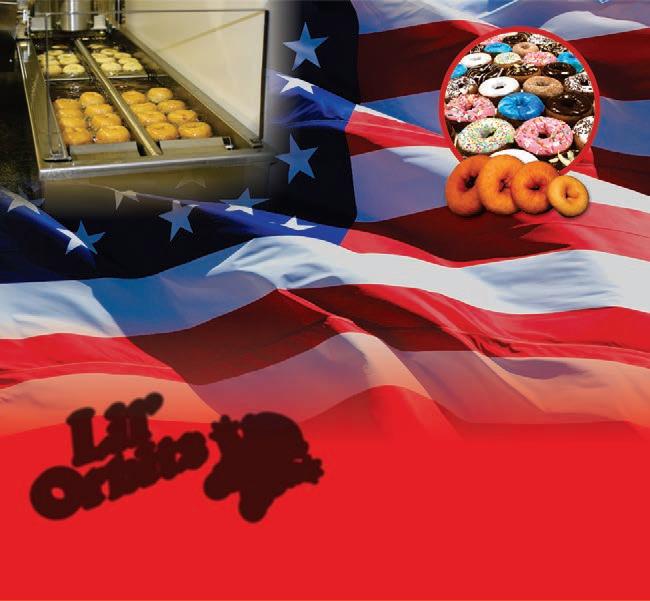
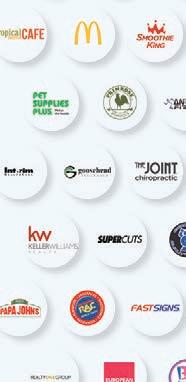




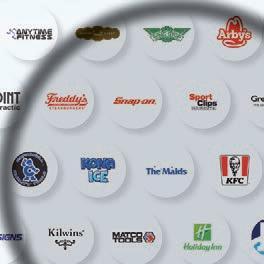




















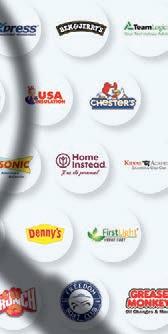

by Hadas Kanner-Golan, cofounder and CEO, Encurage App
As a young lawyer in the early aughts, my first months as an in-house general counsel were chaotic. The previous counsel had left abruptly weeks before I arrived, and there was no one to fill me in on the multitude of open cases and ongoing projects. I felt lost and overwhelmed. Management didn’t seem to care; everyone expected me to immediately pick up where my former counsel left off, and I was extremely stressed.
Following a meeting, I stepped back into my office, and sat there, gazing. Then, someone approached me and asked if they could enter. He was a consultant who attended the meeting, and it was the first time we met.
Placing a heart-shaped pink card on my desk, he said, “You’re going to be alright. It will get better.” It was (he would later tell me) a card out of a stack he had bought for his daughter’s party. Looking for a way to cheer me up, he brought me one of them.
That gave me hope. For the first time since I started working there, I felt seen and understood.
It also taught me that there are meaningful skills beyond education and job experience—things that, as a young person in an era devoid of terms like “toxicity in the workplace” and “soft skills,” I thought were the only ones that mattered. I learned that empathy, emotional intelligence, and good communication are pivotal for personal growth and development in any environment.
When I looked for a cofounder to build the children’s health management app Encurage, this experience guided me to prioritize these skills, and partner with someone who doesn’t shy away from or ignore the rough days. His name is Victor Horton, and as a bootstrapped company, we experience many such days—and being able to lean into our feelings together was what helped us emerge with a working product, traction, and revenue.
Now navigating growth and the path to profitability, there are inevitably more of these days ahead. I still keep the card in my desk. It’s a fond memory, and a reminder to keep our mental wellness in check.

→ SWEET HEART
Kanner-Golan’s heart-shaped card still sits on her desk.
WHAT INSPIRES YOU?
Tell us about a story, person, object, or something else that pushes you forward, and we may include it in a future issue. And we may make you photograph it, too. Email INSPIRE@ENTREPRENEUR.COM with the subject line “WHAT INSPIRES ME.”

